Forums
- Forums
- Axis And Allies Forum
- General Discussion
- Aviation News
Aviation News
Post a reply
- Go to Previous topic
- Go to Next topic
- Go to Welcome
- Go to Introduce Yourself
- Go to General Discussion
- Go to Screenshots, Images and Videos
- Go to Off topic
- Go to Works in Progress
- Go to Skinning Tips / Tutorials
- Go to Skin Requests
- Go to IJAAF Library
- Go to Luftwaffe Library
- Go to RAF Library
- Go to USAAF / USN Library
- Go to Misc Library
- Go to The Ops Room
- Go to Made in Germany
- Go to Campaigns and Missions
- Go to Works in Progress
- Go to Juri's Air-Raid Shelter
- Go to Campaigns and Missions
- Go to Works in Progress
- Go to Skinpacks
- Go to External Projects Discussion
- Go to Books & Resources
-
 Main AdminThe first ever Shipborne Rolling Vertical Landing (SRVL) has been carried out with an F-35B Lightning II joint strike fighter jet conducting trials onboard the new British aircraft carrier, HMS Queen Elizabeth. The U.K. is the only nation currently planning to use the maneuver, which will allow jets to land onboard with heavier loads, meaning they won?t need to jettison expensive fuel and weapons before landing.
Main AdminThe first ever Shipborne Rolling Vertical Landing (SRVL) has been carried out with an F-35B Lightning II joint strike fighter jet conducting trials onboard the new British aircraft carrier, HMS Queen Elizabeth. The U.K. is the only nation currently planning to use the maneuver, which will allow jets to land onboard with heavier loads, meaning they won?t need to jettison expensive fuel and weapons before landing.
Today?s landing, conducted by Peter Wilson, a BAE Systems UK test pilot with the F-35 Pax River Integrated Test Force, took place at exactly 10:30 a.m. Oct. 13, 2018, off the east coast of the U.S. Landing 755 yards back from the end of the carrier?s ski jump, the jet came to a complete standstill at the 580 yard mark.
Courtesy photo's by Royal Navy.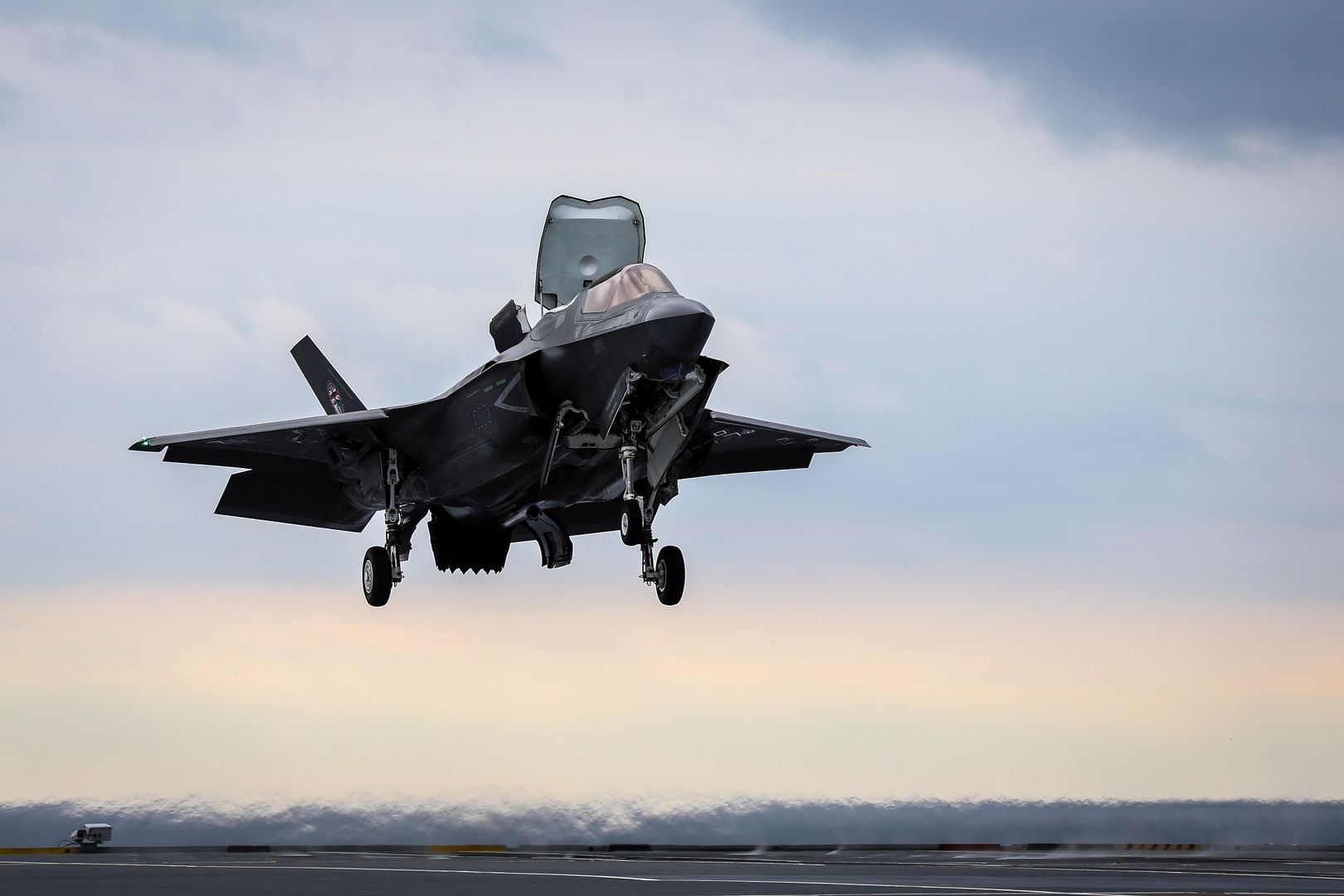

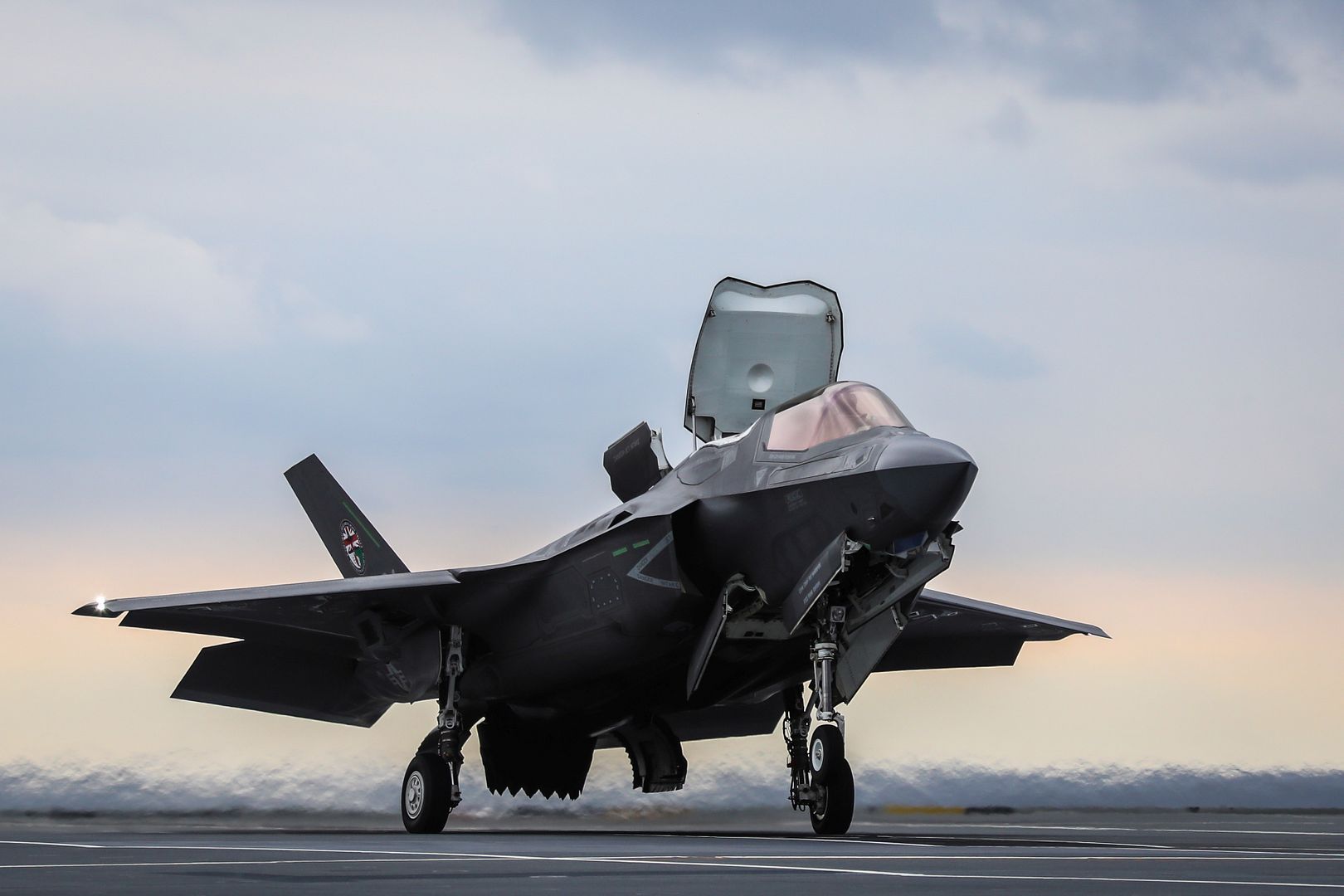
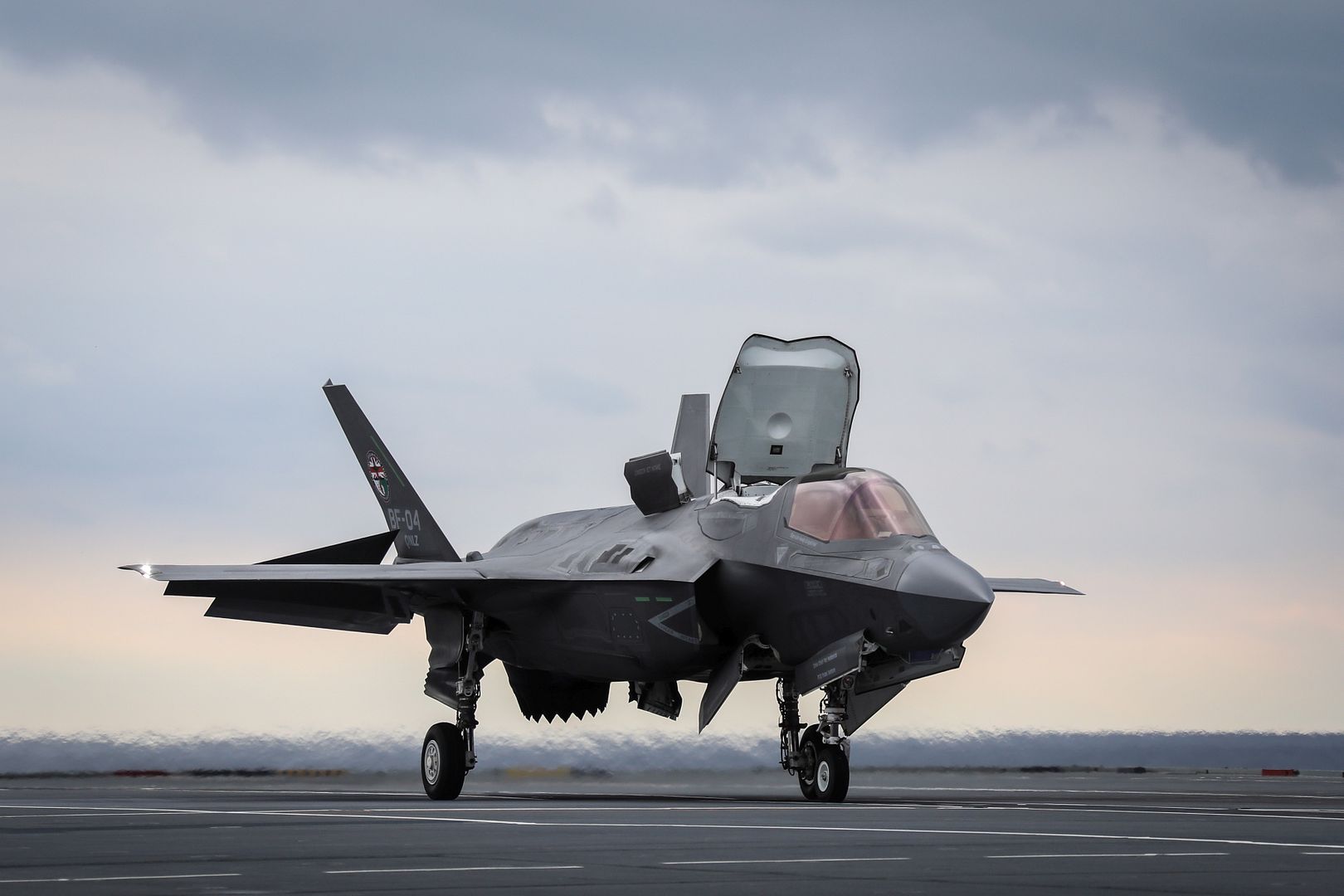
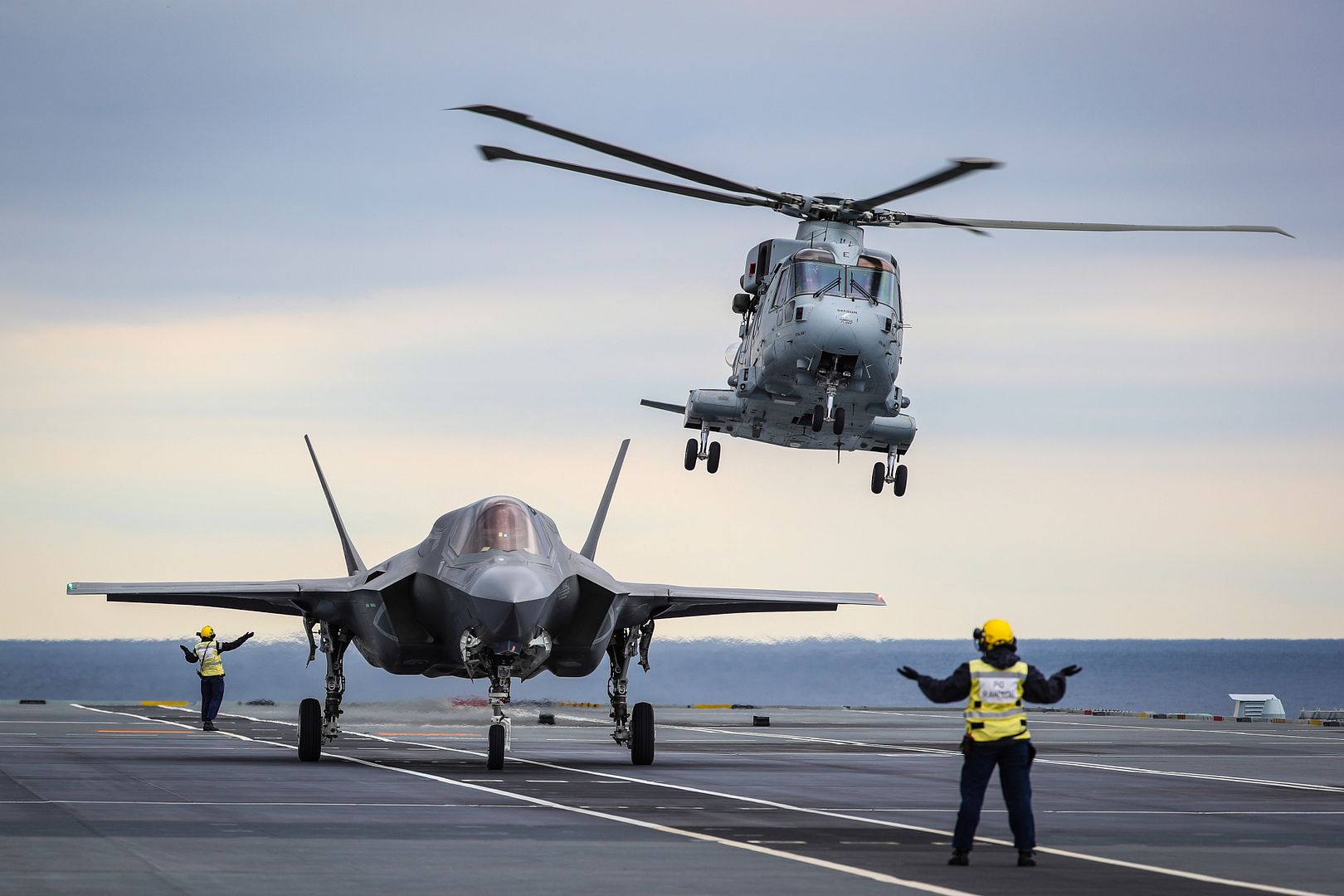
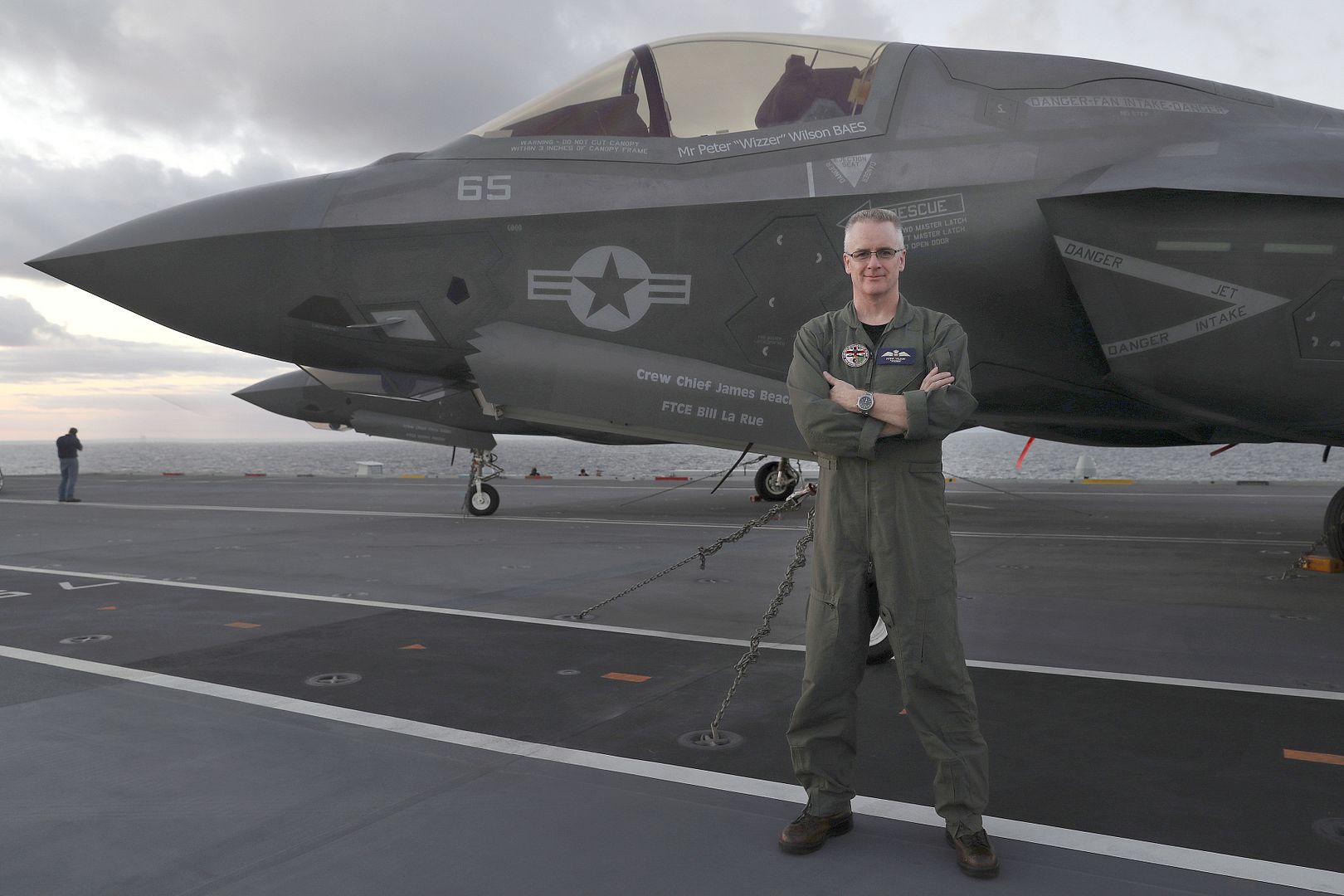
An F-35A Lightning II fighter jet flies over Luke Air Force Base, Ariz., Oct. 11, 2018. Luke AFB conducts F-35 night flying training operations to ensure that pilots are trained to their maximum ability. (U.S. Air Force Photo by Airman 1st Class Jacob Wongwai)
An F-35A Lightning II takes off for a nighttime sortie Oct. 11, 2018, over Luke Air Force Base, Ariz. Pilots train to fly during the night using night-vision optics and flight instruments. (U.S. Air Force photo by Senior Airman Ridge Shan)
An F-35A Lightning II fighter jet takes off from Luke Air Force Base, Ariz., Oct. 11, 2018. Night flying training operations are conducted to ensure F-35 pilots can fully operate in a night time setting. (U.S. Air Force Photo by Airman 1st Class Jacob Wongwai)
A 62nd Fighter Squadron F-35A Lightning II takes off for an evening sortie Oct. 11, 2018, from Luke Air Force Base, Ariz. Pilots conduct periodic, routine night flying in order to train for nighttime and low light operations. (U.S. Air Force photo by Senior Airman Ridge Shan)
NORTH ATLANTIC OCEAN (Oct. 6, 2018) An F-35B Lightning II assigned to the F-35 Integrated Test Force at Naval Air Station Patuxent River, Md., prepares to land aboard the Royal Navy aircraft carrier HMS Queen Elizabeth (R08). (U.S. Navy photo courtesy of the Royal Navy/Released)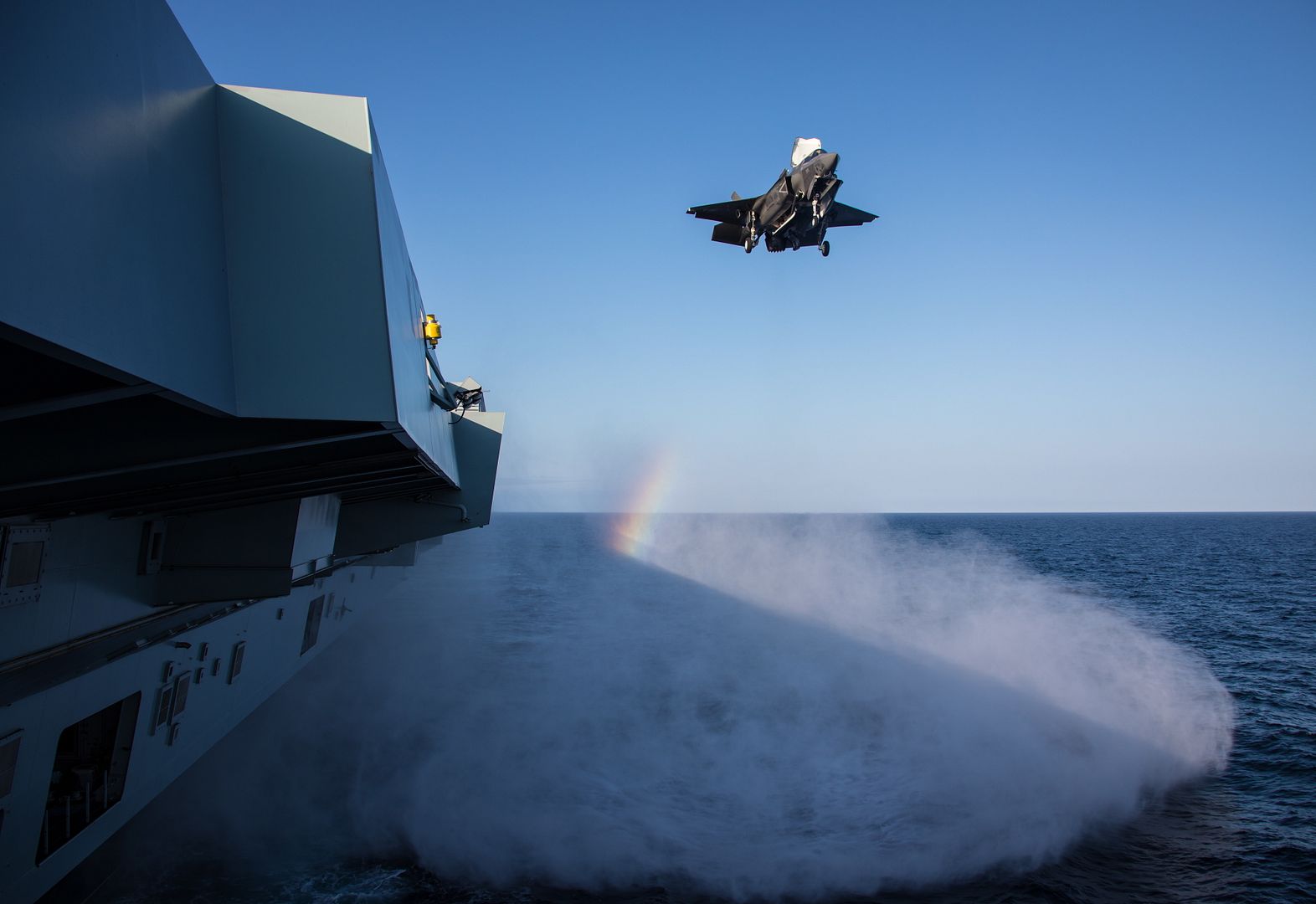
ORLANDO, Oct. 15, 2018 /PRNewswire/ -- Boeing Business Jets (BBJ) has delivered the first BBJ MAX airplane to a customer, the company announced today at the National Business Aviation Conference and Exhibition (NBAA-BACE). The aircraft is scheduled to fly to an interior finishing center.
"We are excited to begin delivering a longer-range and more capable version of the world's most popular business jetliner," said Greg Laxton, head of Boeing Business Jets. "There has been great market interest and anticipation for the BBJ MAX and our valued customers will soon be able to see the new standard in business travel."
Customers from around the world have placed orders for 20 BBJ MAX airplanes. Most recently, Seacons Trading Ltd announced in July it is purchasing a BBJ MAX 7 at the 2018 Farnborough International Airshow.
To commemorate the first delivery, Boeing Business Jets unveiled a new interior concept by award winning aviation design firm SkyStyle. The concept, named Genesis by SkyStyle Co-Founders Max Pardo and Lucas Colombo, represents the company's debut in BBJ MAX design.
"From an aviation designer's perspective, the BBJ MAX is incredibly appealing because there is so much more interior space to realize one's vision," said Max Pardo. "And since the MAX flies ultra-long-distances, the owners are looking for a comfortable lounge, multi-function conference area and a large master suite to ensure the ultimate flight experience."
The BBJ MAX Genesis concept draws inspiration from nature's tranquility, its voluminous clouds hanging over a white sand beach, smooth rolling hills and a starry night sky.
"BBJ MAX interiors have always been a sharp departure from the cramped cabins of smaller business jets, and the Genesis design is yet another example of our exclusive cabin capabilities," said Laxton.
The BBJ MAX family ? based on Boeing's best-selling 737 MAX airplane - offers business jet customers the best combination of space, comfort and range. With more than three times the cabin area as most competing business jets, bespoke interiors to match any preference, and lower cabin altitude, the jet is capable of flying 7,000 nautical miles (12,964 km).
In addition, BBJ MAX owners benefit from a lower total cost to own when compared to other high-end business jets. The MAX's optimized maintenance schedule drives operating costs that are nearly the same as smaller, less comfortable competitors. BBJs also retain comparatively higher residual values by requiring a fraction of the lengthy and expensive shop visits experienced by other business jets as they age. As a result, the BBJ MAX can save customers millions of dollars in total ownership expenditure over the life of the airplane.
About Boeing Business Jets
Boeing Business Jets (NYSE: BA) offers a portfolio of ultra-large-cabin, long-range airplanes that are perfectly suited for business and private, charter, corporate and head-of-state operations. The product line includes the BBJ MAX family and high performance versions of Boeing's 787 Dreamliner, 777, and 747-8. Since its launch in 1996, Boeing Business Jets has delivered 234 jets on 260 orders.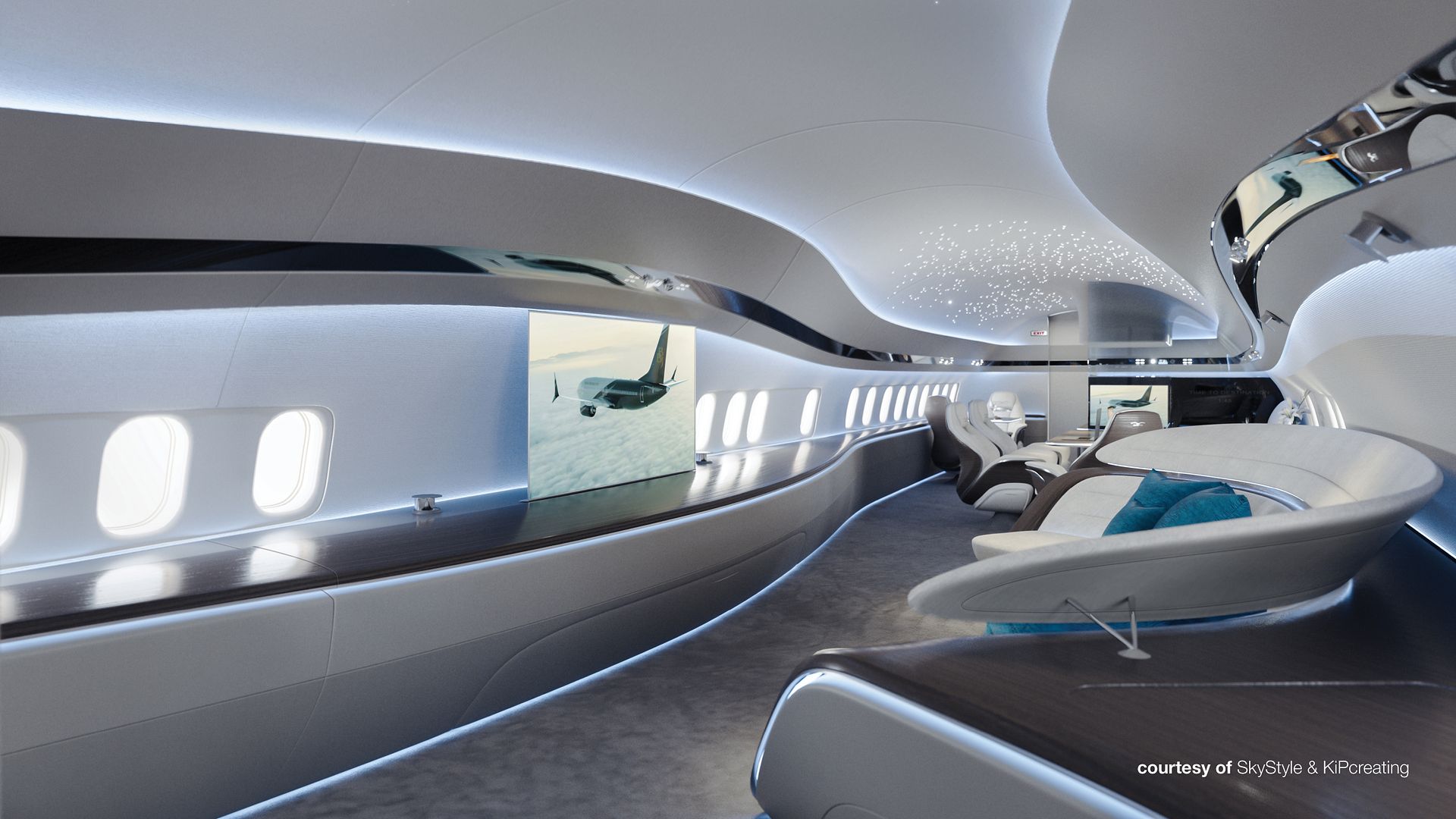
Kuwait Airways, the national carrier of the state of Kuwait, has signed a Purchase Agreement (PA) for eight A330-800 aircraft. The agreement was signed by Yousef Al-Jassim, Kuwait Airways Chairman and Christian Scherer, Airbus Chief Commercial Officer, at Airbus headquarters in Toulouse.
Yousef Al-Jassim, Chairman Kuwait Airways said: ?The A330-800 will seamlessly fit into our fleet expansion and growth plans. Its unbeatable operating economics and performance in addition to best in class passenger comfort make it a sound investment. We are confident that the A330-800 will support us to compete effectively on our expanding route network. Our relationship with Airbus extends beyond aircraft acquisitions and we look forward to further collaboration on technical fields.?
The announcement marks an important step in Kuwait Airways? fleet renewal and expansion strategy. The national carrier of Kuwait also has A350 XWB and A320neo Family aircraft on order. The delivery of the new Airbus fleet will start in 2019.
?We are delighted that Kuwait Airways has chosen the A330neo as a cornerstone of its future widebody fleet. The A330-800 with its unique efficiency and versatility will support the carrier?s ambition to develop its expanding long haul network,? said Christian Scherer, Airbus Chief Commercial Officer. ?The aircraft will seamlessly complement Kuwait Airways? A320neos and A350 XWBs and deliver unbeatable operating economics, full operational commonality and unmatched passenger experience.?
Launched in July 2014, the A330neo Family is the new generation A330, comprising two versions: the A330-800 and A330-900 sharing 99 percent commonality. It builds on the proven economics, versatility and reliability of the A330 Family, while reducing fuel consumption by about 25 percent per seat versus previous generation competitors and increasing range by up to 1,500 nm compared to the majority of A330s in operation. The A330neo is powered by Rolls-Royce?s latest-generation Trent 7000 engines and features a new wing with increased span and new A350 XWB-inspired Sharklets. The cabin provides the comfort of the new Airspace amenities.
The A330 is one of the most popular widebody families ever, having received over 1,700 orders from 120 customers. More than 1,400 A330s are flying with over 120 operators worldwide. The A330neo is the latest addition to the leading Airbus widebody family, which also includes the A350 XWB and the A380, all featuring unmatched space and comfort combined with unprecedented efficiency levels and unrivalled range capability.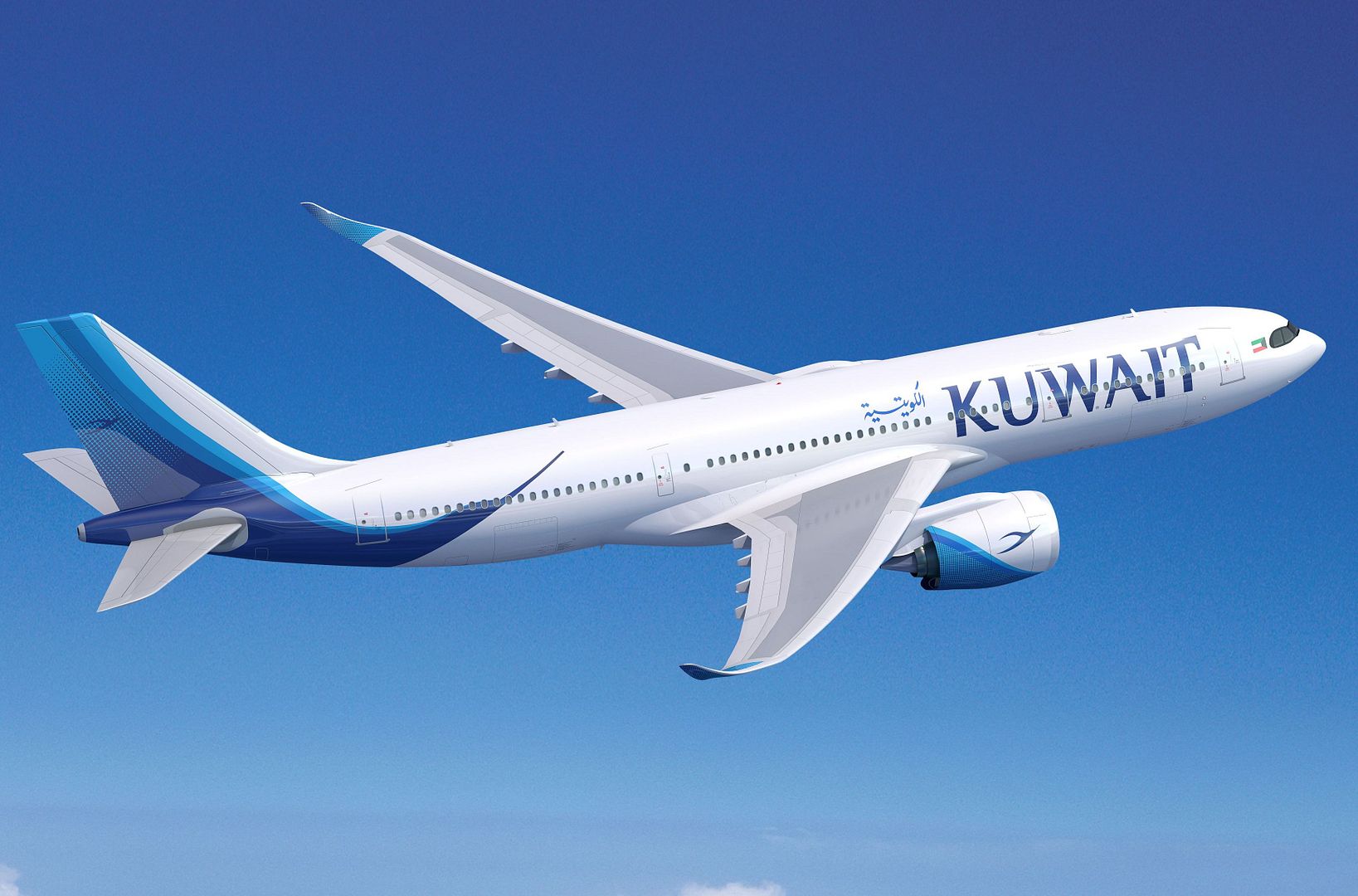
Orlando, Florida, October 14, 2018 ? Embraer today introduced the new Praetor 500 midsize and Praetor 600 super-midsize business jets during a company event at Orlando Executive Airport, where the 2018 National Business Aviation Association?s Business Aviation Convention and Exhibition (NBAA-BACE) will be held from October 16-18. The new Praetor 500 and Praetor 600 will be on static display during NBAA-BACE.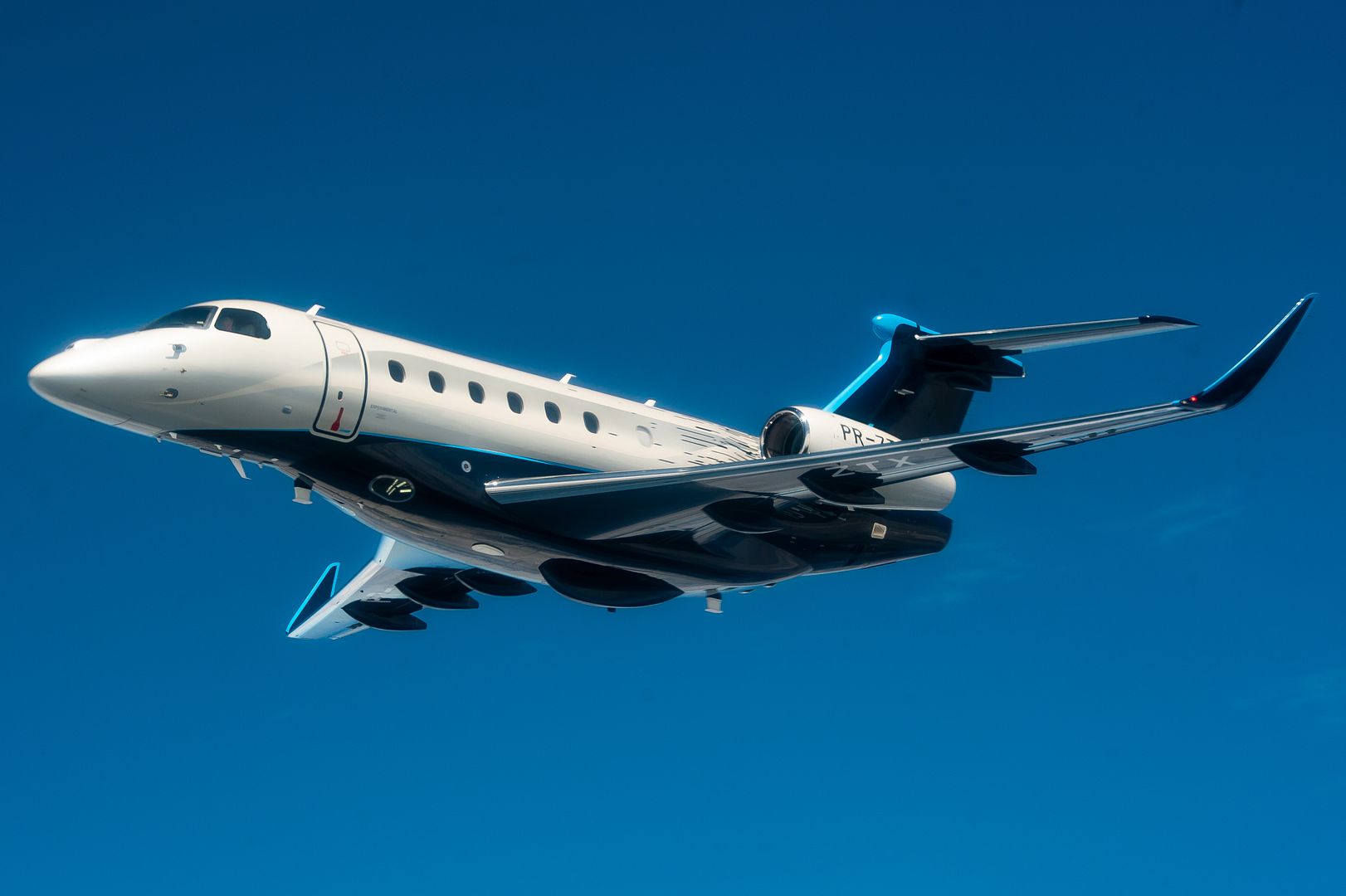
?The Praetor 500 and Praetor 600 are the disruptive aircraft for the entrepreneur, for the pioneer, for the innovator,? said Michael Amalfitano, President & CEO, Embraer Executive Jets. ?The Praetors are aircraft certainly in keeping with their name, leading the way in redefining the characteristics of what a midsize and super-midsize aircraft deliver to the market. The introduction of these aircraft support our vision of fascinating our customers and providing them with superior value and the best experience in the industry."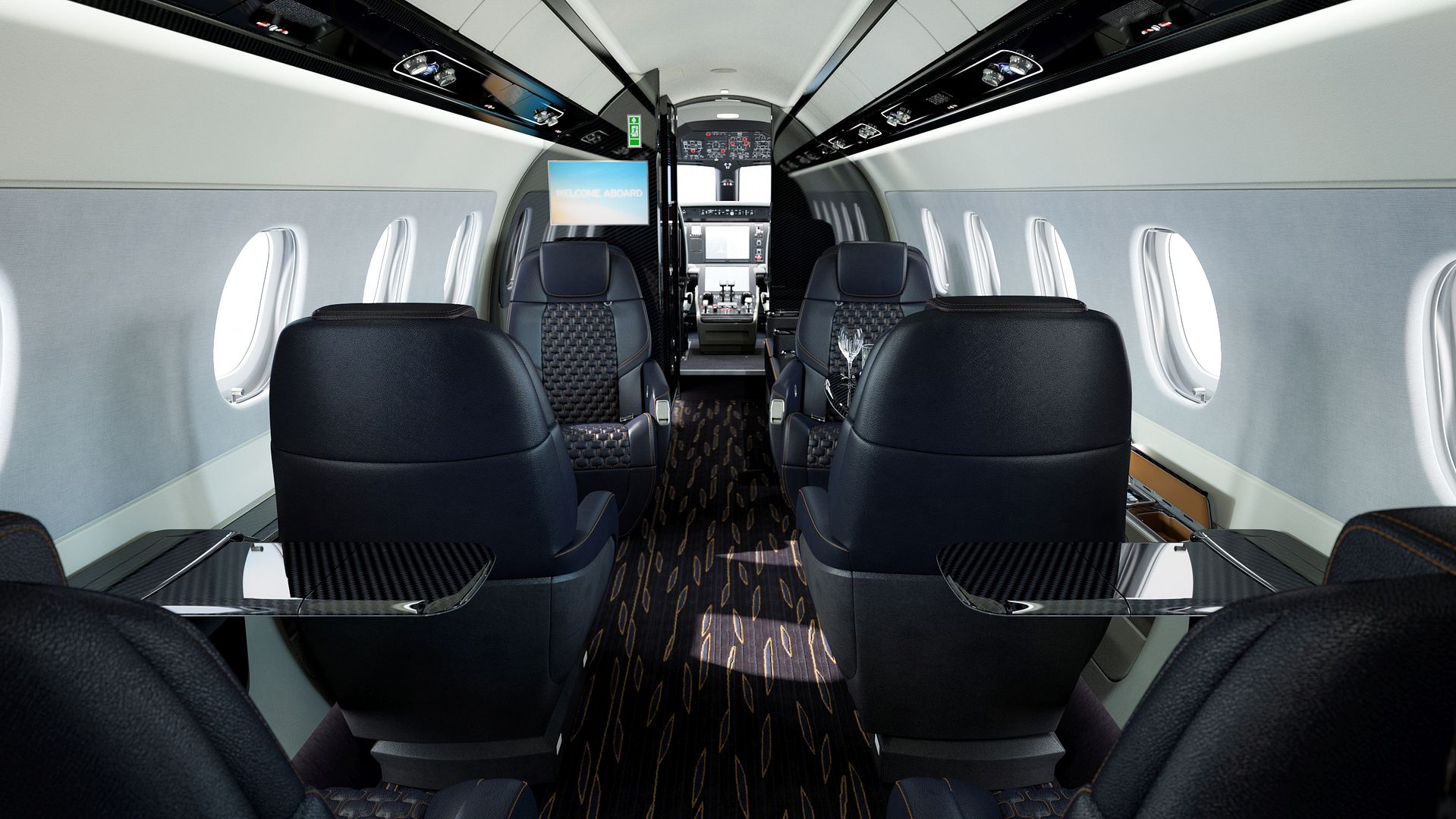
The Praetor jets will introduce unprecedented range into their categories. The Praetor 600 will be the farthest-flying super-midsize business jet, which allows nonstop flights between London and New York. The Praetor 500 will be the fastest midsize aircraft, capable of reaching Europe from the west coast of the U.S. with a single stop. With four passengers and NBAA IFR Reserves, the Praetor 600 will have an intercontinental range of 3,900 nautical miles (7,223 km) and the Praetor 500 will lead the midsize class with a continental range of 3,250 nautical miles (6,019 km).
?The new Praetor 500 and Praetor 600 will be the most disruptive and technologically advanced aircraft to enter the midsize and super-midsize categories,? said Luciano Froes, Senior Vice President, Marketing, Embraer Executive Jets. ?Different by design and disruptive by choice, these new aircraft will deliver the ultimate customer experience with an unparalleled combination of performance, comfort and technology.?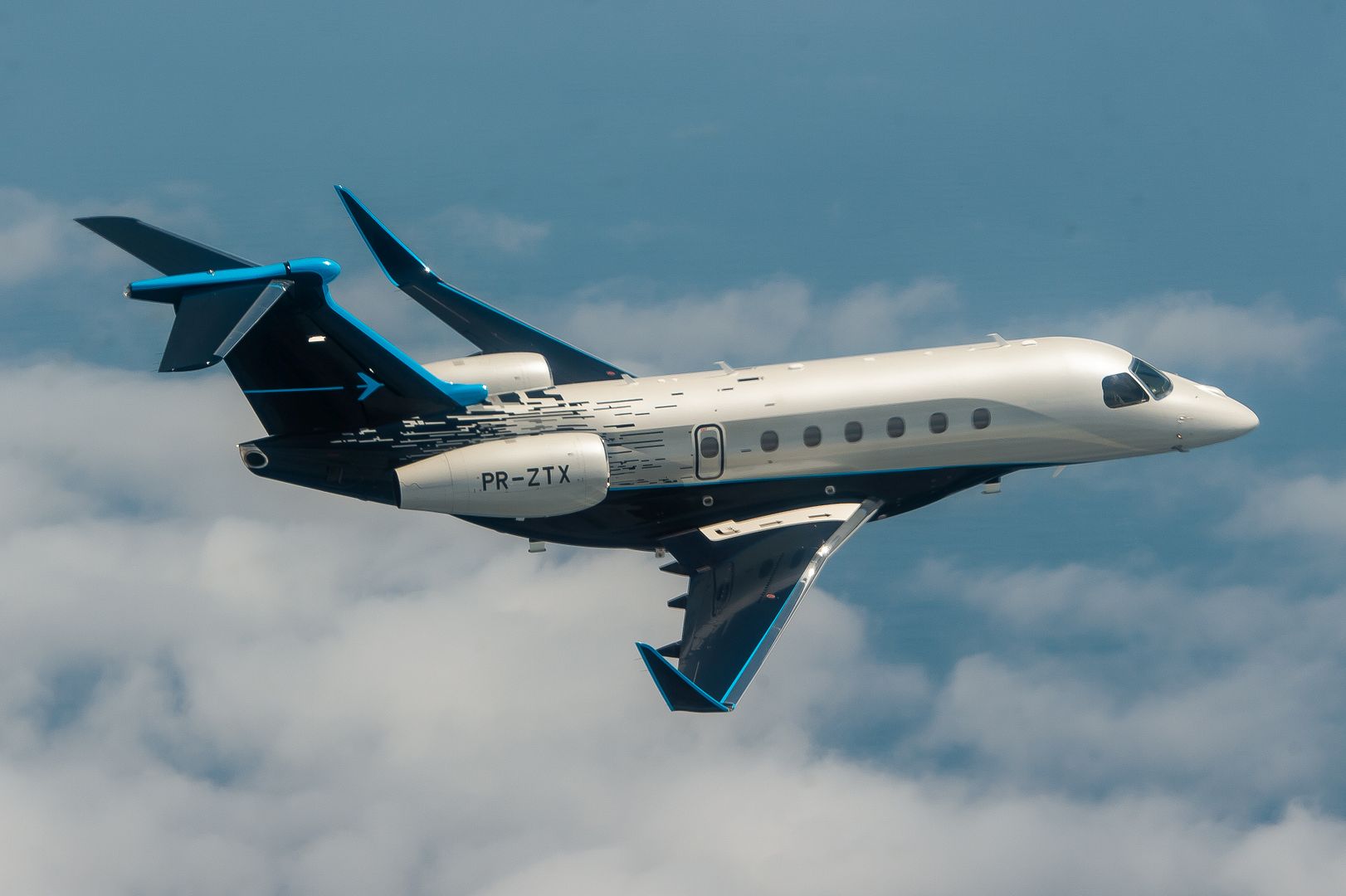
Advanced technology also abounds throughout the cabin beginning with the industry-exclusive Upper Tech Panel that displays flight information and offers cabin management features also available on personal devices through Honeywell Ovation Select. High-capacity high-speed connectivity for all aboard is available through Viasat?s Ka-band with speeds of up to 16Mbps and IPTV, another industry-exclusive in midsize and super-midsize business jets.
Being the only midsize and super-midsize business jets with full fly-by-wire technology and active turbulence reduction, passengers will enjoy the smoothest possible flight, complemented by a best-in-class 5,800-foot cabin altitude for ultimate passenger comfort. To celebrate these new aircraft, Embraer is also introducing the new premium style Bossa Nova interior edition.
?Inspired by our Brazilian heritage, the Bossa Nova interior will delight Praetor customers with its distinctively elegant ambience,? said Jay Beever, Vice President, Interior Design, Embraer Executive Jets. ?With personal comfort as the key design driver, the Embraer DNA Design will render an unparalleled passenger experience in the Praetor jets. Upon the foundation of ergonomics and superior craftsmanship, each customer?s personal design style will be reflected throughout the cabin.?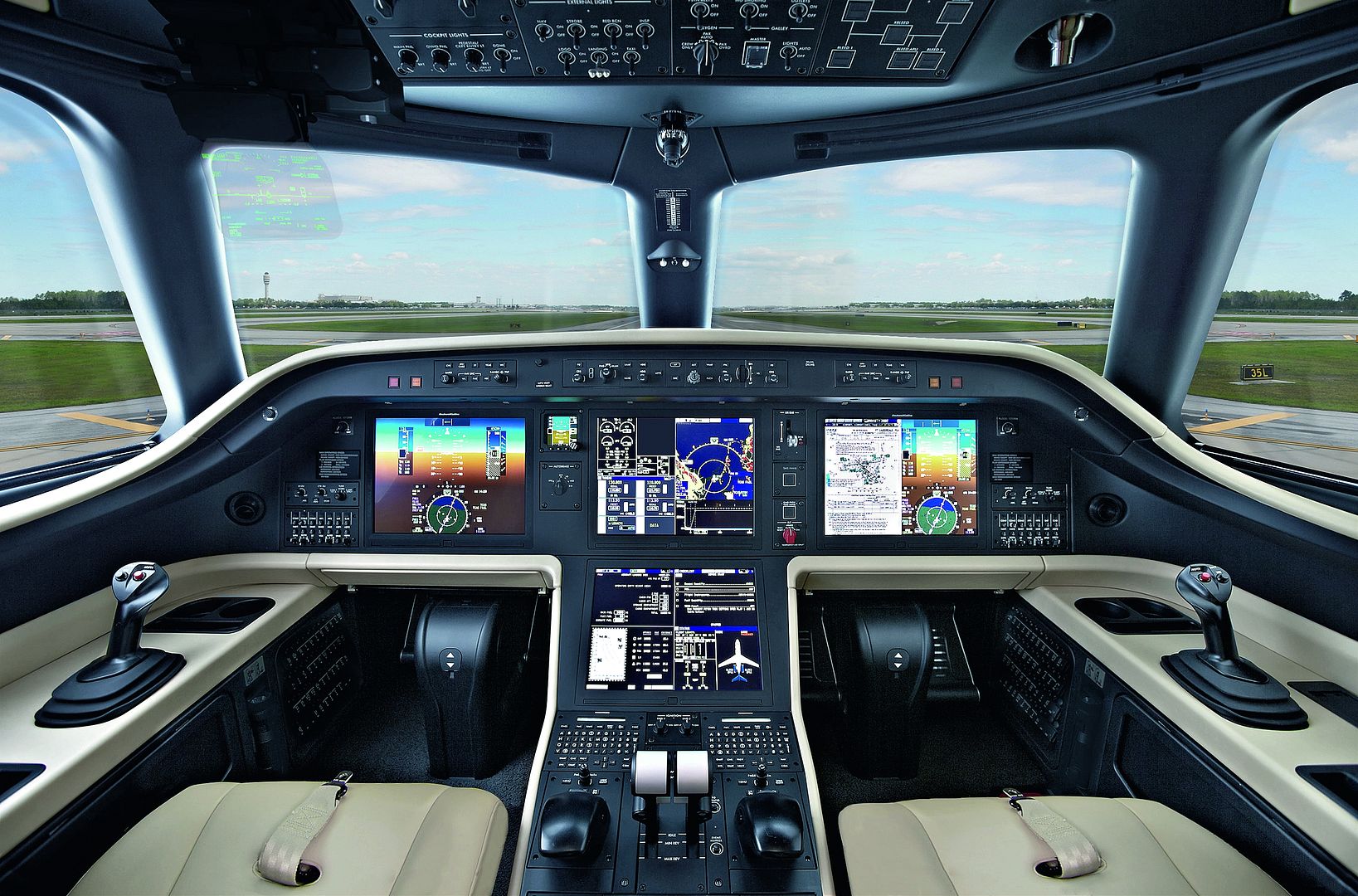
The Praetor jets feature the state-of-the-art Rockwell Collins ProLine Fusion flight deck with the industry-first vertical weather display, air-traffic-control-like situational awareness with ADSB-IN, and predictive wind shear radar capability. The Praetor cockpits will also offer options that include the Embraer Enhanced Vision System (E2VS) with a Head-up Display (HUD) and an Enhanced Video System (EVS), an Inertial Reference System (IRS) and a Synthetic Vision Guidance System (SVGS).
The Praetor jets are currently under development with two Praetor 600 prototypes in flight tests as well as one production-conforming aircraft, and one production-conforming Praetor 500 in its maturity campaign. The Praetor 600 is expected to be certified and enter service in the second quarter of 2019, followed by the Praetor 500 in the third quarter of 2019.
Personnel from the RAF Chinook Force are training in the United States with the US Marine Corps on the seven-week long Weapons and Tactics Instructor Course.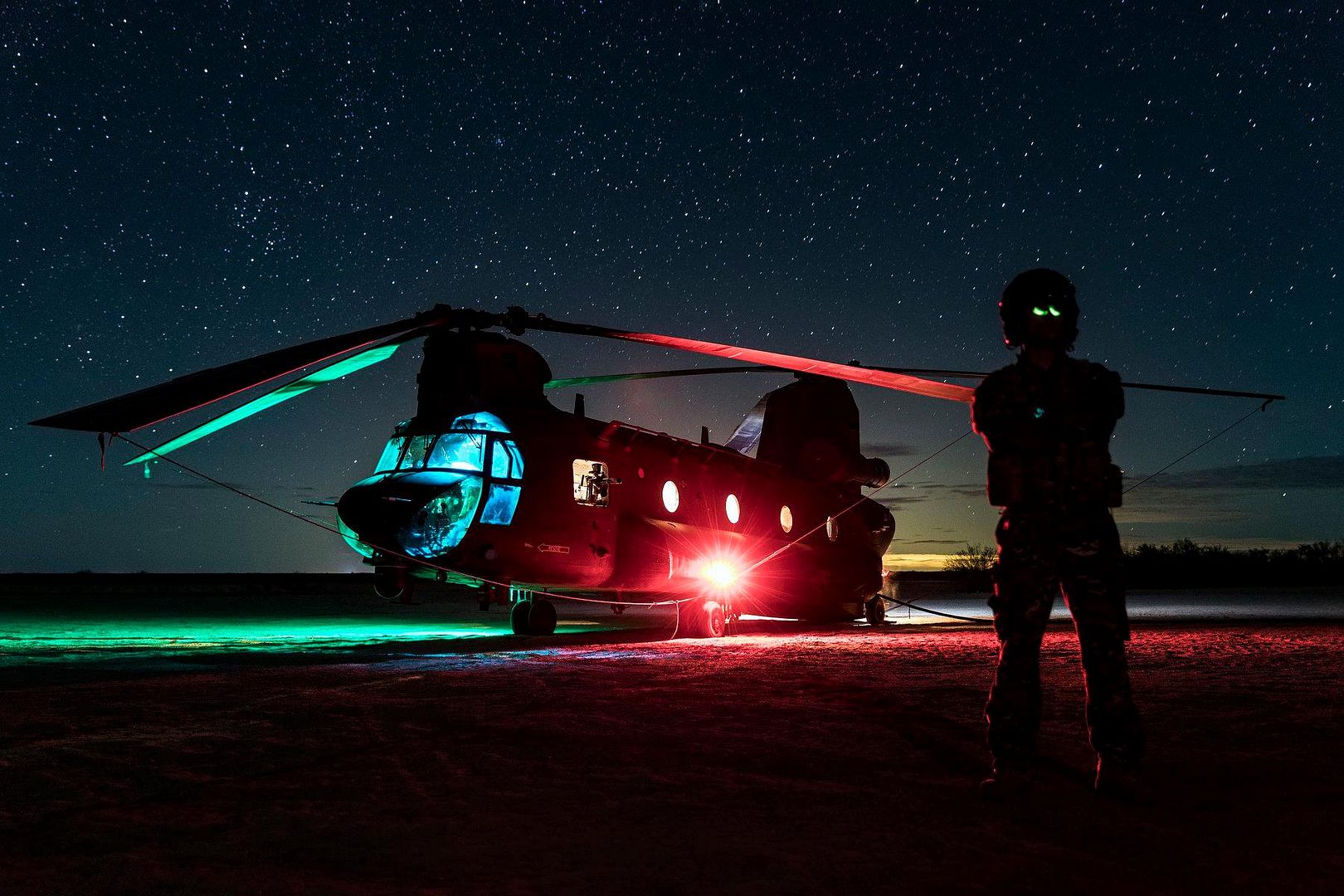
These images were taken at a remote landing strip in the desert of southern Arizona. The Chinook has been pre-positioned to provide fuel to Marine attack helicopters participating in night time simulated attacks on opposing forces, one of a variety of roles undertaken by this most versatile of helicopters.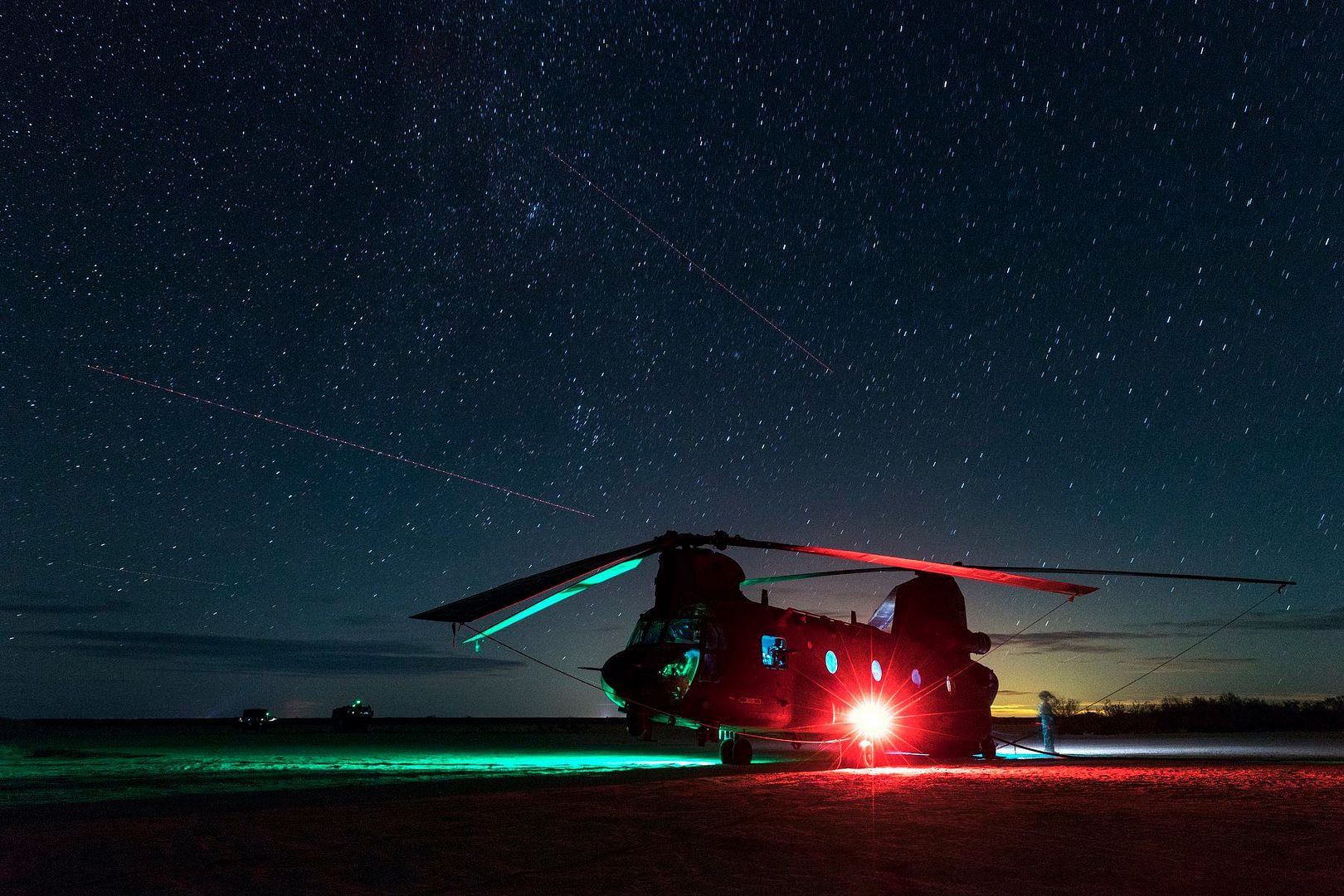
Photos: Cpl Tim Laurence
-
 Main Admin8th Fighter Wing "Wolf Pack" F-16C's Fighting Falcons land at Eielson Air Force Base, Alaska, Oct. 13, 2018. More than 150 Wolf Pack personnel and 12 aircraft deployed to Alaska to participate in RED FLAG-Alaska 19-1. RF-A exercises focus on improving combat readiness of U.S. and international forces and provide training for units in the most realistic simulated combat environment in the Pacific. (U.S. Air Force photo's by Staff Sgt. Levi Rowse)
Main Admin8th Fighter Wing "Wolf Pack" F-16C's Fighting Falcons land at Eielson Air Force Base, Alaska, Oct. 13, 2018. More than 150 Wolf Pack personnel and 12 aircraft deployed to Alaska to participate in RED FLAG-Alaska 19-1. RF-A exercises focus on improving combat readiness of U.S. and international forces and provide training for units in the most realistic simulated combat environment in the Pacific. (U.S. Air Force photo's by Staff Sgt. Levi Rowse)

Air transportation specialists offload cargo in support of relief efforts for Hurricane Michael at Tyndall Air Force Base, Florida, Oct. 15, 2018. Multiple major commands have mobilized relief assets in an effort to restore operations after the hurricane caused catastrophic damage to the base. (U.S. Air Force photo's by Senior Airman Keifer Bowes)

A C-17 Globemaster III flies over Dodger Stadium during the opening ceremony of Game 3 of Major League Baseball?s National League Championship Series between the Los Angeles Dodgers and Milwaukee Brewers at Dodger Stadium in Los Angeles, Oct. 15. The C-17 began its flight from Edwards Air Force Base. (U.S. Air Force photo by Giancarlo Casem)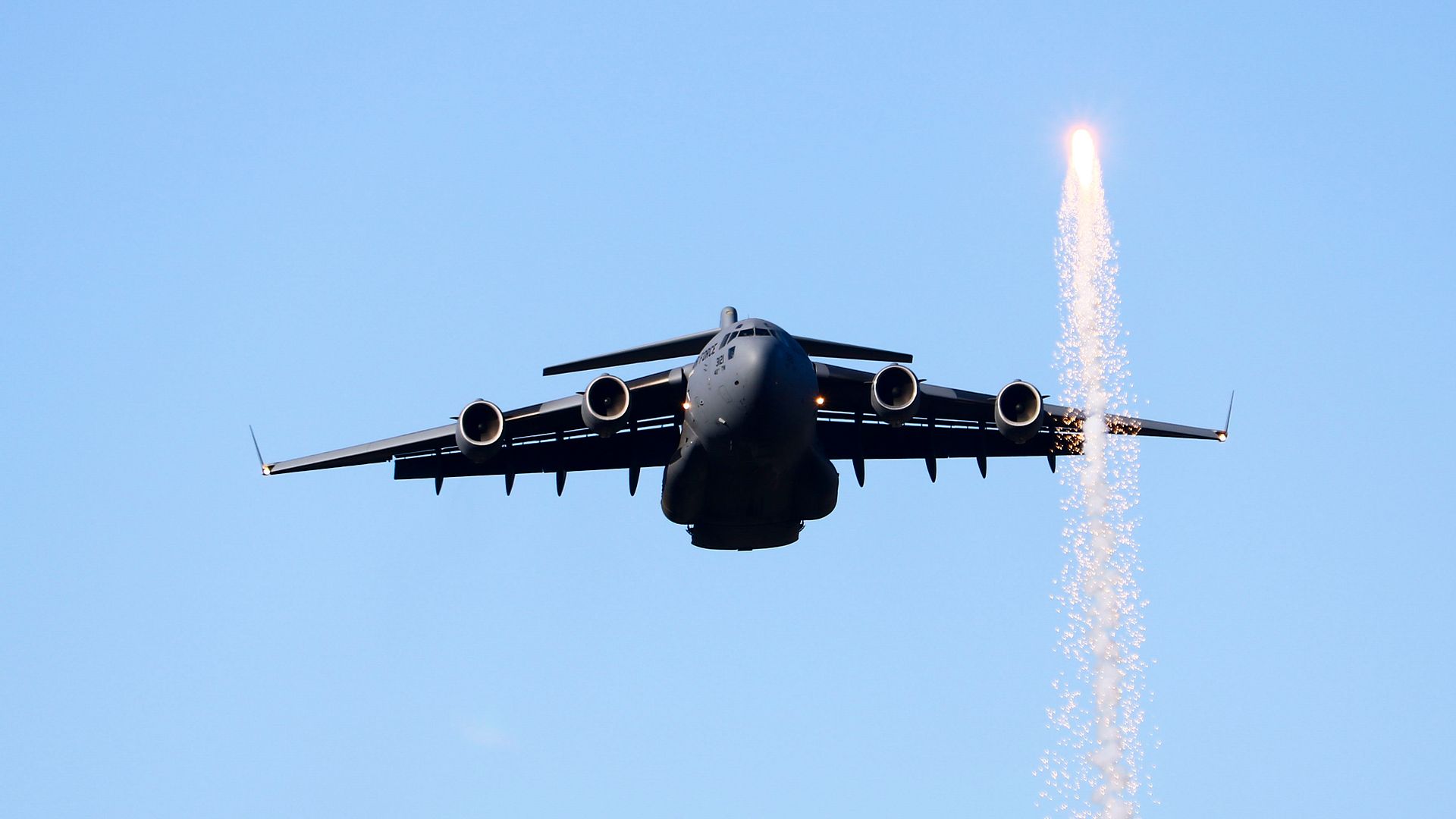
Ground crew wait on the arrival of Air Force One to taxi into place at Eglin Air Force Base, Fla., Oct. 15. President Donald J. Trump stopped at Eglin on his way to Panama City to see the devastation from Hurricane Michael. The President exited Air Force One, met with Florida and base leadership, as well as the media before departing to the east on his helicopter. (U.S. Air Force photo/Samuel King Jr.)
DULLES, Va. ? Oct. 16, 2018 ? Northrop Grumman Corporation (NYSE: NOC) announced today it has finalized a Cooperation and Research Agreement to work closely with Airbus on the Wing of Tomorrow program. The three-year agreement expands the current Northrop Grumman relationship with Airbus and explores complex composite wing stiffener forming automation with out-of-autoclave material systems through an investment in equipment, test articles and engineering support. This relationship positions Northrop Grumman for future potential high-rate production opportunities.
?This agreement builds on Northrop Grumman?s valuable working relationship with Airbus and its partners. Our work with Airbus is an important component of growth in the commercial aerospace structures business,? said Wendy Williams, vice president and general manager, aerospace structures, Northrop Grumman. ?We are excited about the advanced composite manufacturing technology being developed to support the Wing of Tomorrow concept, and our team is eager to continue our long-term relationship with Airbus on their future endeavors.?
Northrop Grumman is currently producing composite fuselage stringers and frames for the Airbus A350 XWB -900 and -1000 variants at its state-of-the-art Aircraft Commercial Center of Excellence facility in Clearfield, Utah. The company has successfully delivered more than 200,000 Airbus A350 parts since the inception of the program.
Northrop Grumman?s proprietary automated stiffener forming process has been instrumental in the development and manufacture of high-rate production composite stringers and frames that are extremely high quality, affordable and dimensionally precise. This technology will be evolved to the new material systems, geometries and processing needs of the future while maintaining the superior benefits of a highly automated production process.
The Airbus Wing of Tomorrow program will address future aggressive aircraft production rates and the requirement for wings to be made faster and more affordably. The program will explore the best materials, manufacturing and assembly techniques, as well as new technologies in aerodynamics and wing architecture.
New material experimentation represents a major part of the program, and lower-cost composite technologies currently being pursued could enable wing components to be produced with significantly reduced equipment and tooling costs, along with enabling a faster production cycle. Increased use of composite materials also opens up new possibilities in terms of wing configuration and construction.
Amsterdam, At Helitech, Airbus Helicopters and DRF Luftrettung have signed a contract about the delivery of three H145s in 2019. This will bring the H145 fleet of the German Helicopter Emergency Medical Services (HEMS) operator to 17, making them one of the biggest H145 operators worldwide.
?The performance of the H145, especially the added value which Helionix brings to our operation, helps us to fulfil our mission every day ? saving the lives of severely injured or ill patients?, said Dr. Krystian Pracz, CEO of DRF Luftrettung.
?We thank DRF Luftrettung for their continued trust in Airbus Helicopters?, said Thomas Hein, Head of Sales Western Europe at Airbus Helicopters. ?After being launch customer of the H145 in 2014, this is a strong signal of our mutual cooperation.?
DRF Luftrettung is one of the biggest HEMS operators in Germany. The organisation operates more than 50 Airbus helicopters at 31 bases throughout Germany and Austria for emergency rescue and intensive care transports including rescue winch operations. By starting night time missions more than 20 years ago and operating nine 24/7 sites (2019: ten), the DRF Luftrettung has the broadest experience in HEMS night operations throughout Europe. In addition, the ambulance jet aircraft of DRF Luftrettung repatriate people who have experienced an accident or have fallen seriously ill while abroad quickly and safely back to a hospital in their respective home countries. DRF Luftrettung was launch customer of the H145 in 2014, having to date 14 H145s in operation.
More than 200 H145s have been delivered since entry into service in 2015, clocking up more than 110,000 flight hours. Powered by two Safran Arriel 2E engines, the H145 is equipped with full authority digital engine control (FADEC) and the Helionix digital avionics suite, which includes a high-performance 4-axis autopilot, increasing safety and reducing pilot workload. Its particularly low acoustic footprint makes the H145 the quietest helicopter in its class.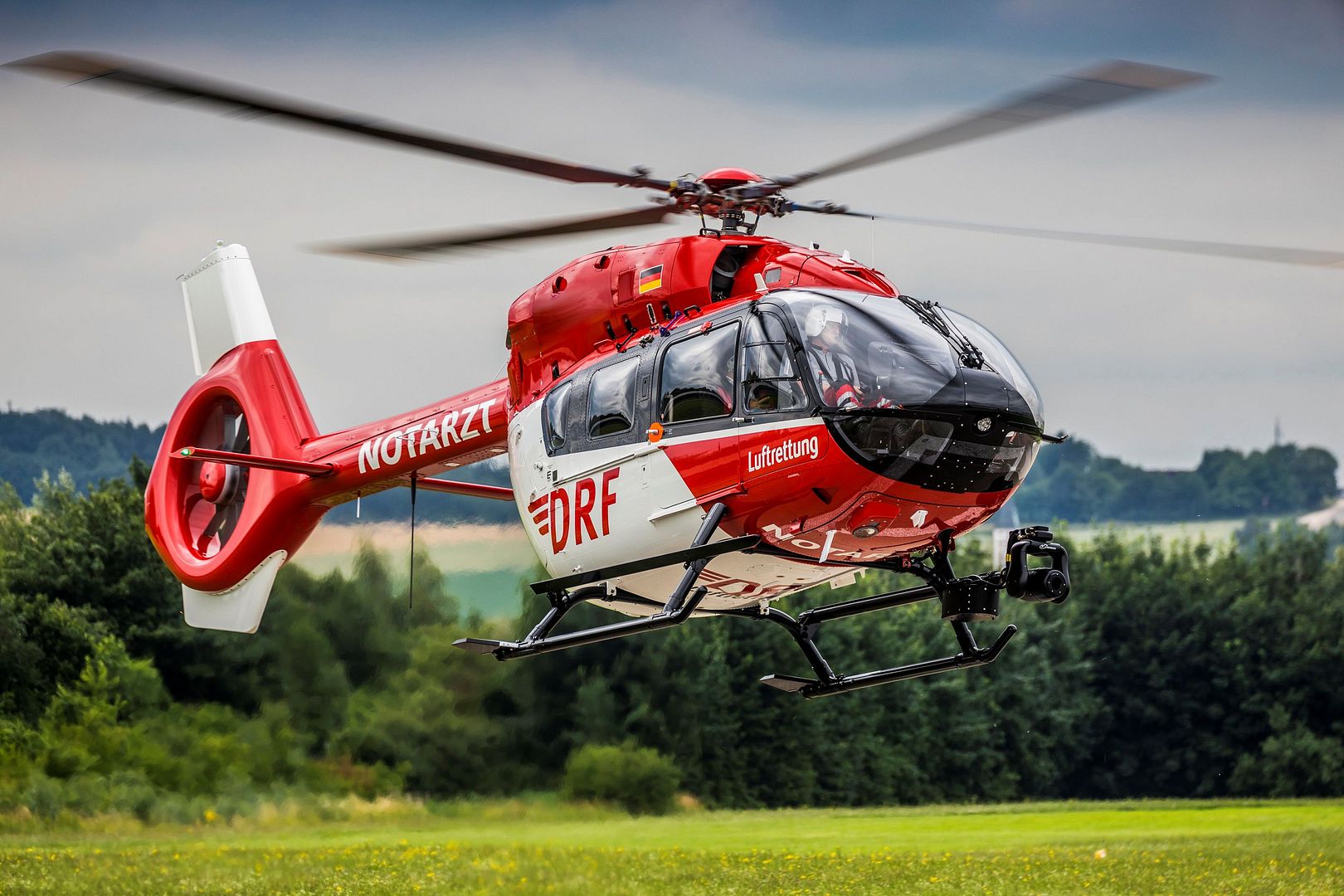
Amsterdam, Norway?s helicopter operator Helitrans has acquired four light single H125 Airbus helicopters for a wide range of missions that cover power line construction and firefighting as well as sightseeing trips, photo shoots and reindeer herding. The four new aircraft will be delivered in spring 2019.
?We have been operating the H125 for almost twenty years and we are very happy to enlarge our H125 fleet with four additional helicopters to support our business expansion? said Richard Simonsen, CEO of Helitrans. ?The aircraft?s high performance and versatility provide great mission flexibility, which is essential for our company?s wide portfolio of services?.
Operating from eight bases throughout the country, Helitrans is one of the largest helicopter companies in Norway and one of the top 30 civil operators in Europe. With the four new aircraft, Helitrans fleet will include 22 Airbus? light single helicopters, mainly of the H125 type and two H130s.
?We want to thank our customer Helitrans for his renewed confidence in the H125, said Thomas Hein, Airbus Helicopters sales manager for Western Europe. ?The H125 offers by far the highest value for money to customers worldwide and keeps evolving to better answer to their needs. While the new glass cockpit provides pilots with a highly visible and customisable instrument panel, the recent maintenance plan modifications have largely contributed to reduce aircraft maintenance cost?.
The H125 and H130 lead the single-engine helicopter market, accounting for almost 70% of deliveries in the last five years. The Ecureuil fleet is composed by 5000 helicopters in service with some 1900 operators across the globe and it has accumulated more than 30 million flight hours.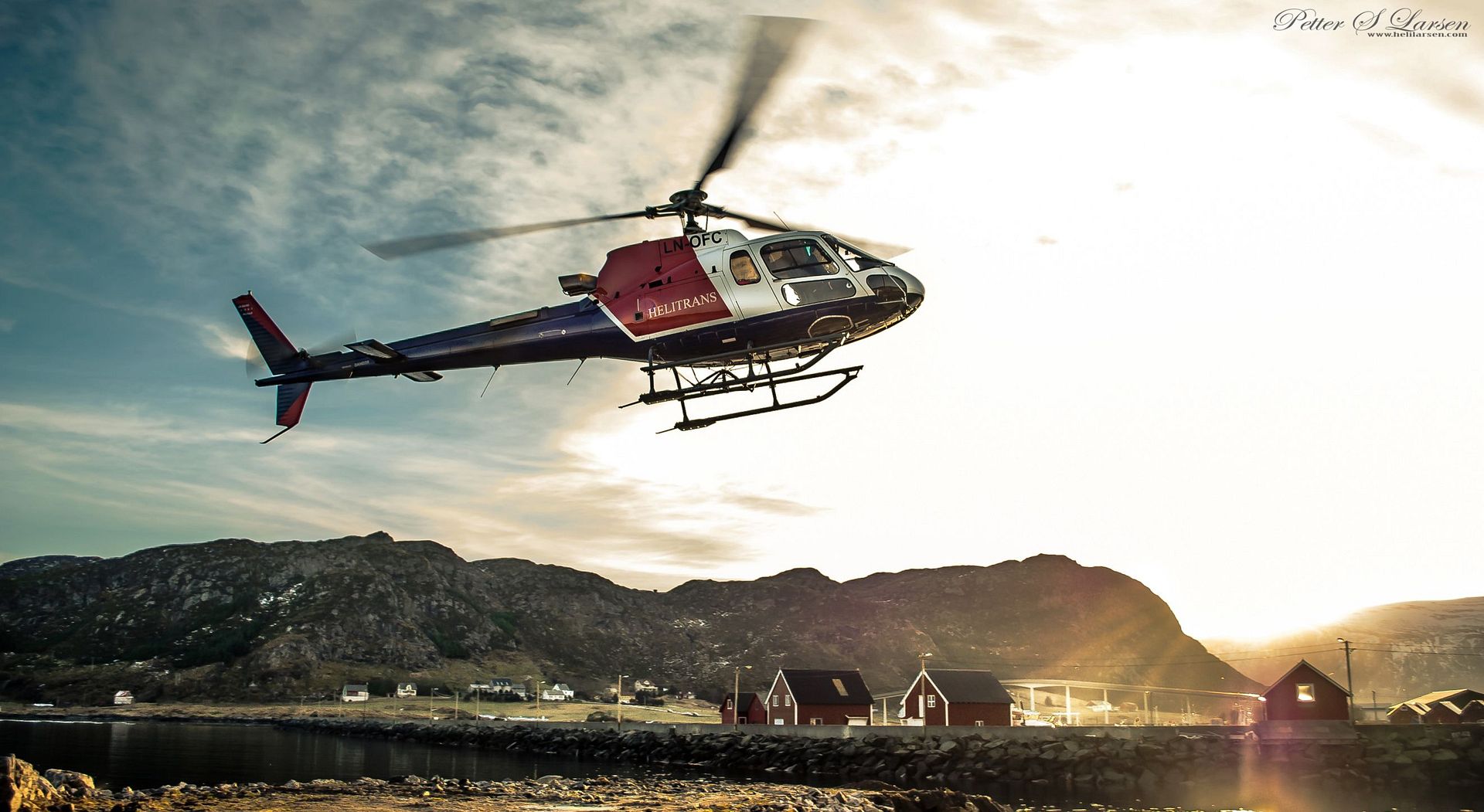
RAF personnel from RAF Odiham have graduated from the gruelling Weapons Tactics Instructor Course, run by the United States Marine Corps (USMC) at MCAS Yuma.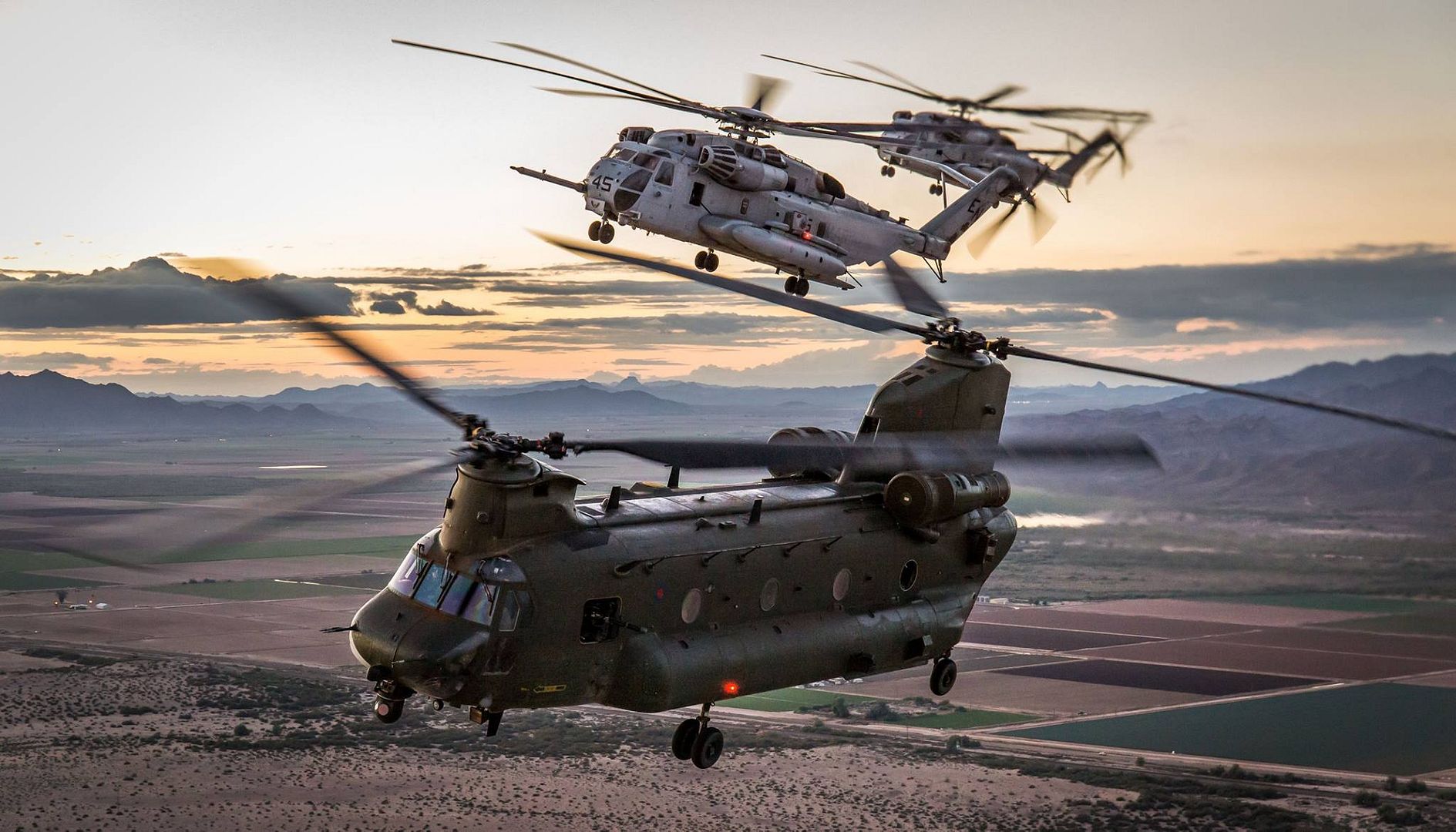
They are the first overseas students to have fully participated in all aspects of the course, exercising their Chinooks with the USMC Super Stallion helicopters.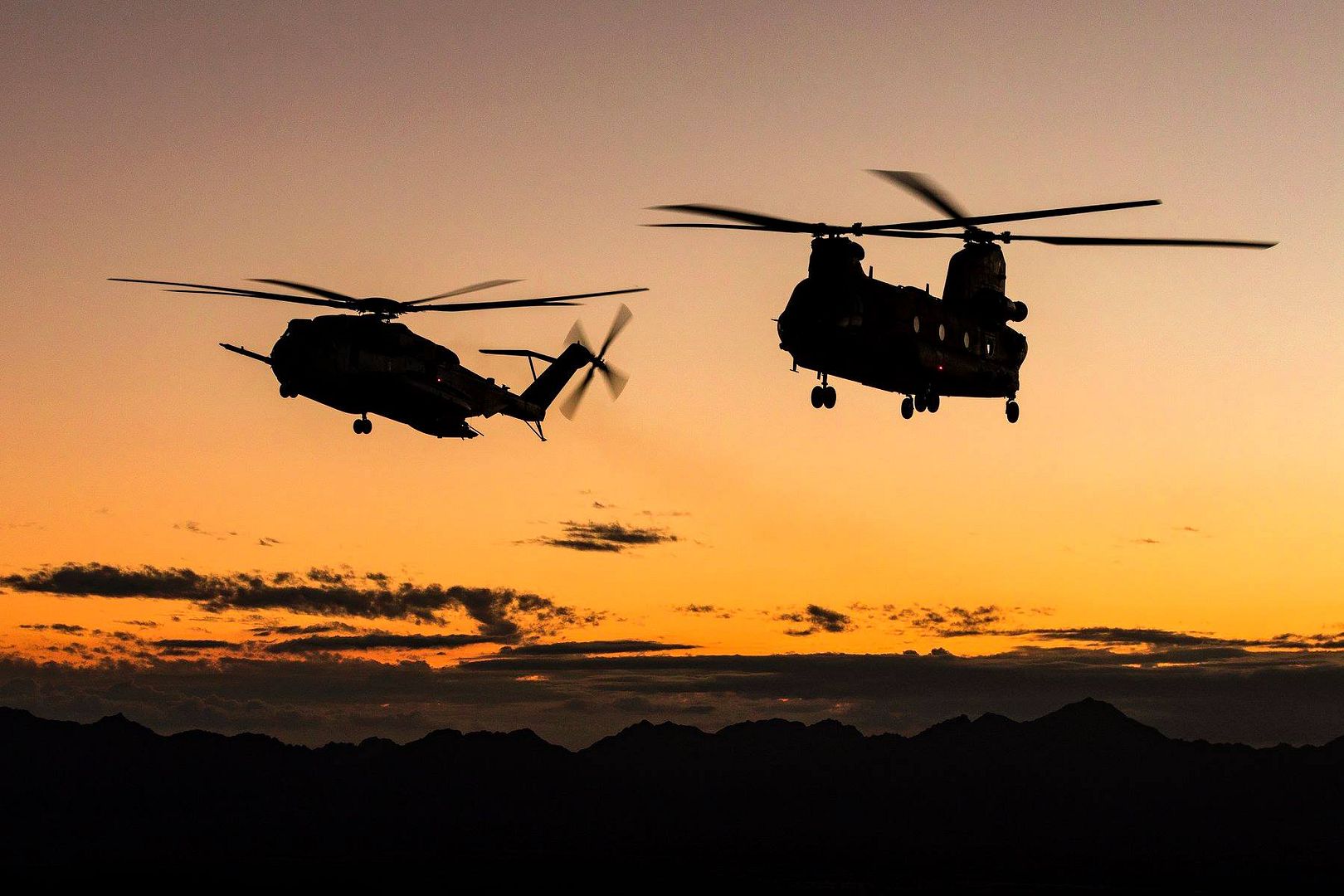
-
 Main AdminAn F-22 Raptor assigned to the 1st Fighter Wing, Joint Base Langley-Eustis, Va. returns from a training sortie at Royal Air Force Lakenheath, England, Oct. 16, 2018. The Raptors are training with U.S. allies and partners as a demonstration of U.S. commitment to European regional security. (U.S. Air Force photo's/Tech. Sgt. Matthew Plew)
Main AdminAn F-22 Raptor assigned to the 1st Fighter Wing, Joint Base Langley-Eustis, Va. returns from a training sortie at Royal Air Force Lakenheath, England, Oct. 16, 2018. The Raptors are training with U.S. allies and partners as a demonstration of U.S. commitment to European regional security. (U.S. Air Force photo's/Tech. Sgt. Matthew Plew)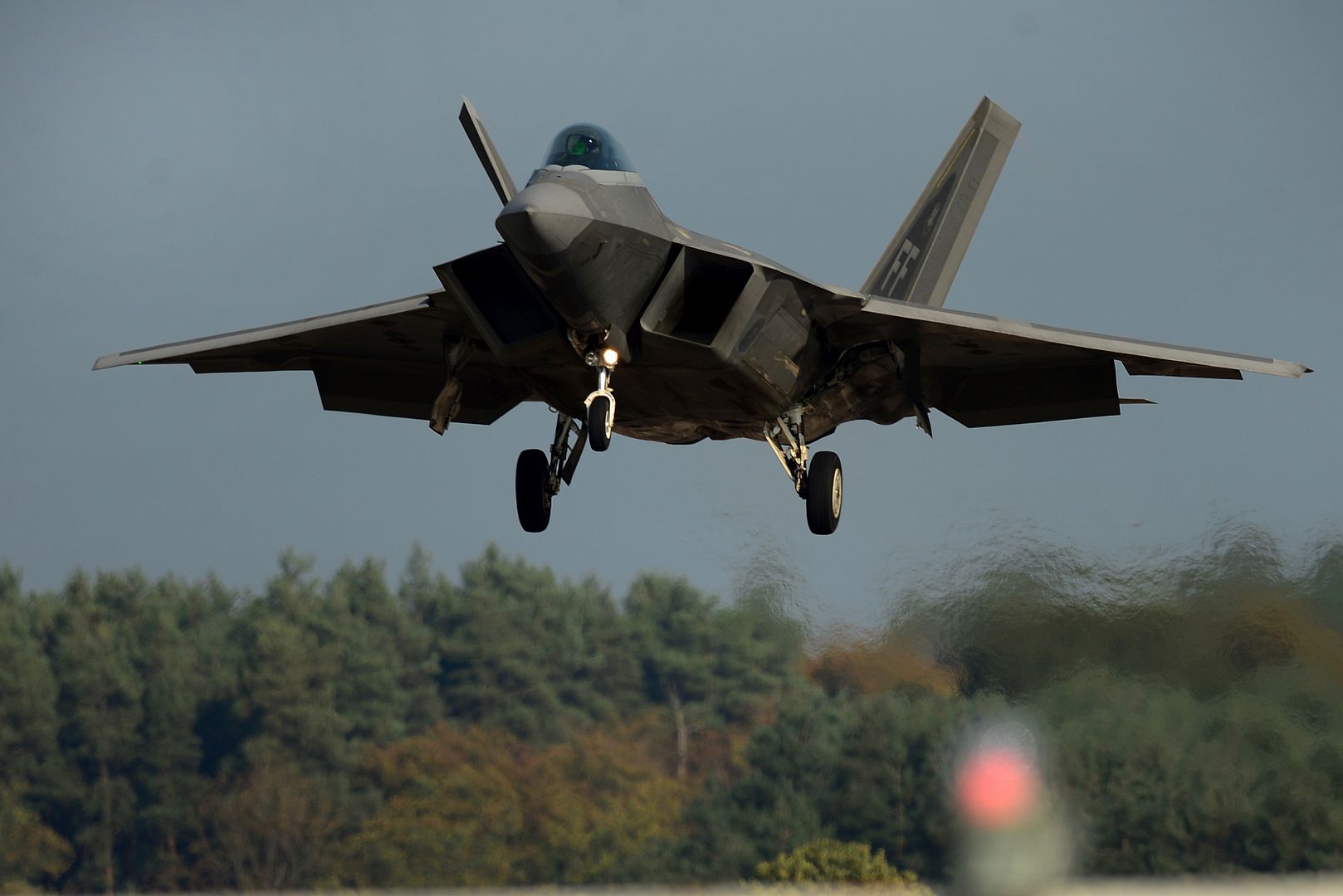
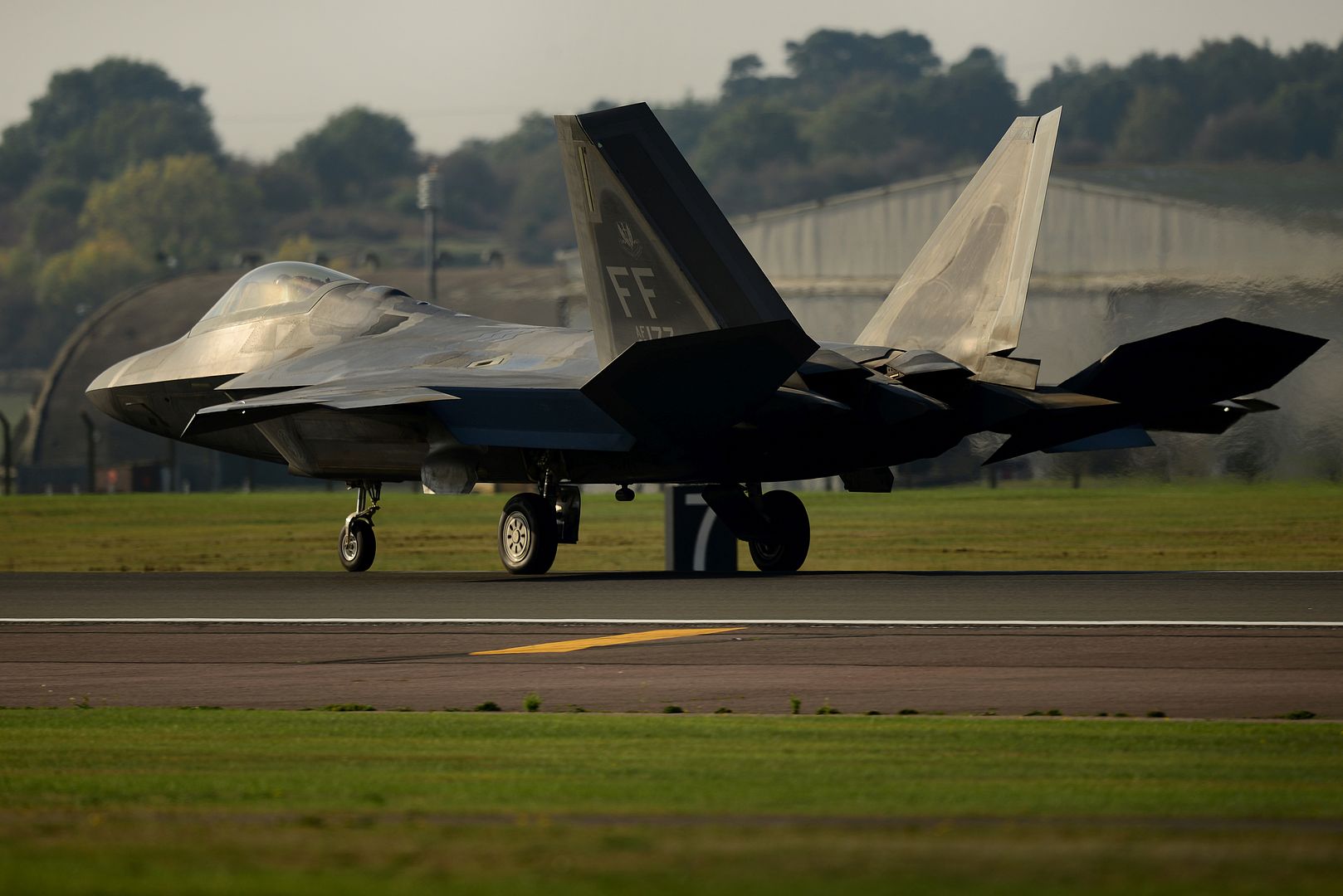
An F-15C Eagle assigned to the 493rd Fighter Squadron returns from a joint training sortie with F/A-18 Super Hornets and F-22 Raptors at Royal Air Force Lakenheath, England, Oct. 16, 2018. The training serves as a demonstration of U.S. commitment to European regional security. (U.S. Air Force photo/ Tech. Sgt. Matthew Plew)
An F-15E Strike Eagle assigned to the 492nd Fighter Squadron launches for a joint training sortie with F/A-18 Super Hornets and F-22 Raptors at Royal Air Force Lakenheath, England, Oct. 10, 2018. The training serves as a demonstration of U.S. commitment to European regional security. (U.S. Air Force photo/ Tech. Sgt. Matthew Plew)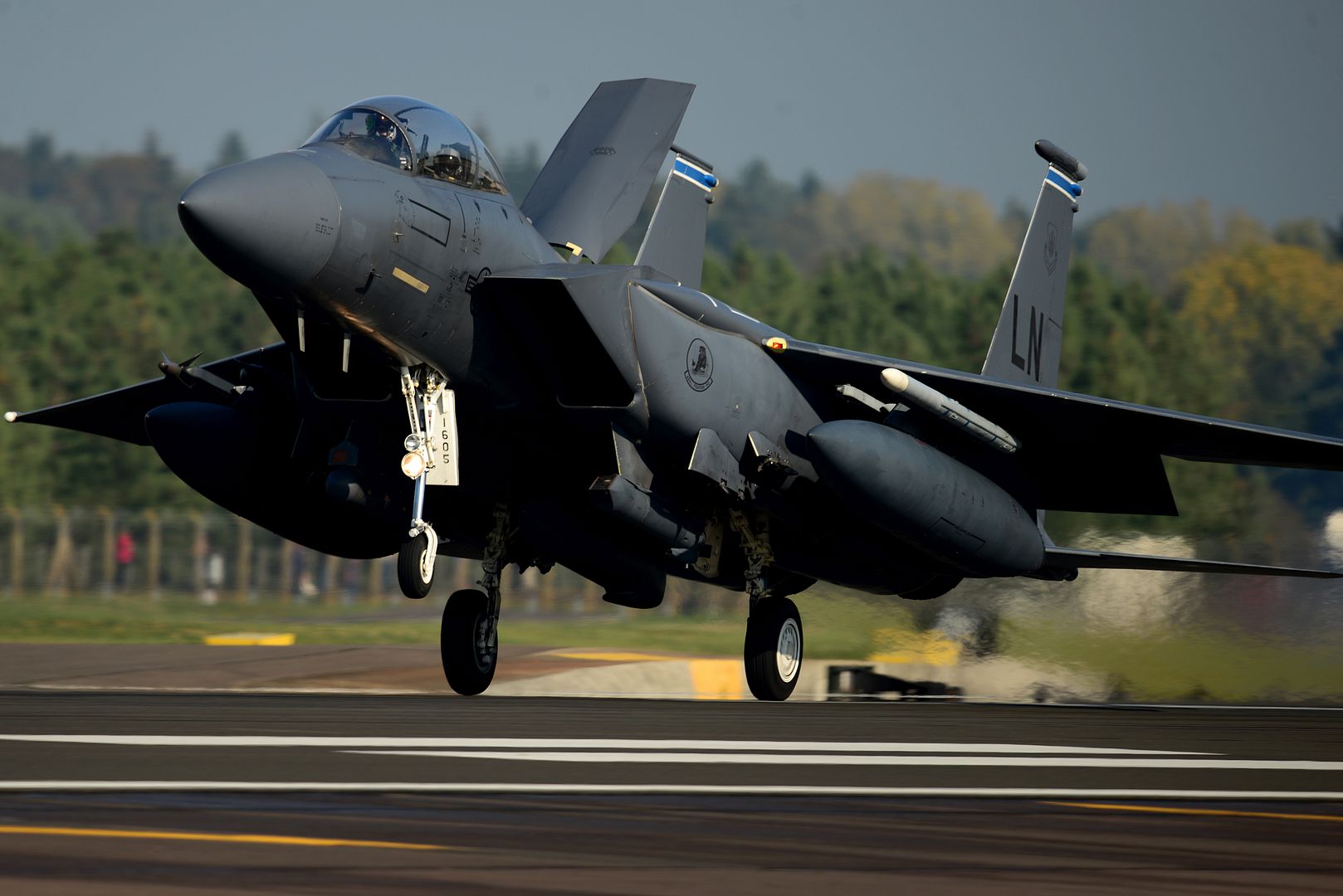
An F/A-18F Super Hornet assigned to Carrier Air Wing One (CVW-1), deployed from the Nimitz-class aircraft carrier USS Harry S. Truman (CVN 75) returns from a training sortie at Royal Air Force Lakenheath, England, Oct. 16, 2018. The carrier is currently operating in the U.S. 6th Fleet area of operations, fostering cooperation with regional allies and partners, strengthening regional stability, and remaining vigilant, agile and dynamic. (U.S. Air Force photo/ Tech. Sgt. Matthew Plew)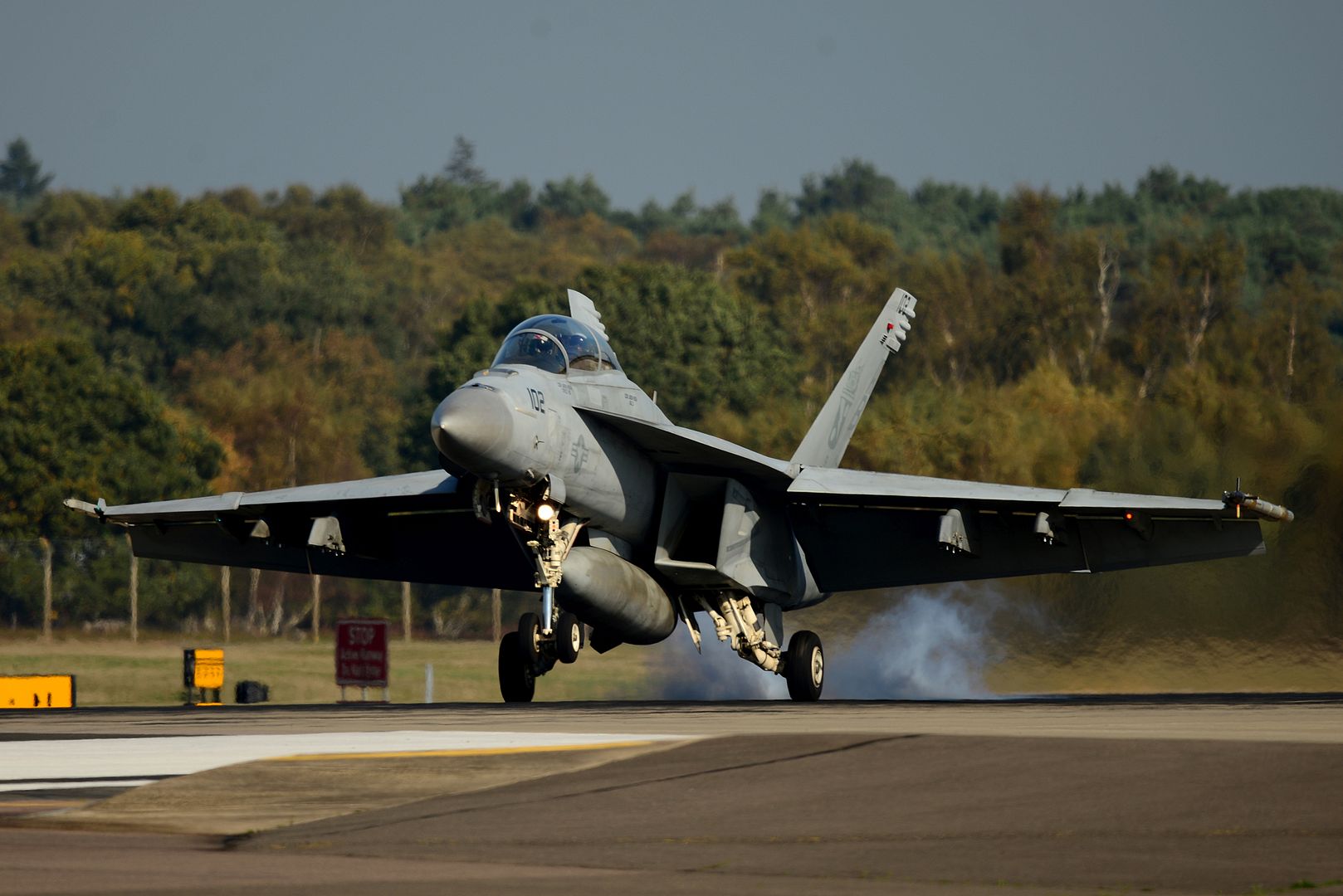
An F/A-18E Super Hornet assigned to Carrier Air Wing One (CVW-1), deployed from the Nimitz-class aircraft carrier USS Harry S. Truman (CVN 75) launches for a training sortie at Royal Air Force Lakenheath, England, Oct. 16, 2018. The carrier is currently operating in the U.S. 6th Fleet area of operations, fostering cooperation with regional allies and partners, strengthening regional stability, and remaining vigilant, agile and dynamic. (U.S. Air Force photo/ Tech. Sgt. Matthew Plew)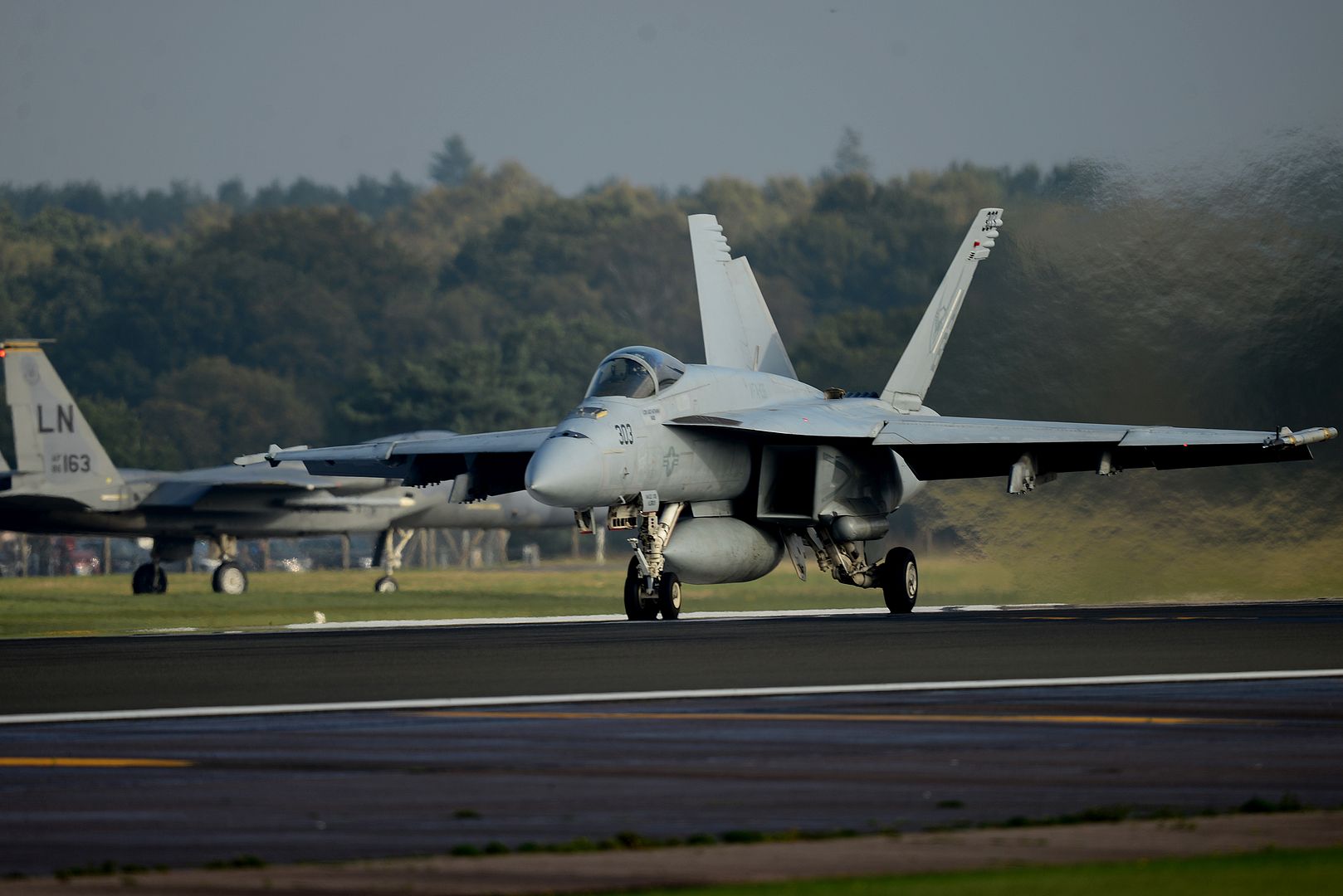
A pilot from the 55th Expeditionary Fighter Squadron lands an F-16 Fighting Falcon at an undisclosed location in Southwest Asia, Oct. 16, 2018. Airmen from the 20th Fighter Wing at Shaw Air Force Base, South Carolina deployed to the 407th Air Expeditionary Group in support of Operation Inherent Resolve. (U.S. Air Force photo by Staff Sgt. Dana J. Cable)
A U.S. Air Force HC-130J Combat King II from the 71st Rescue Squadron prepares to taxi at Joint Base Langley-Eustis, Virginia, Oct. 17, 2018. The 71st RQS is supporting Tyndall Air Force Base, Florida, recovery efforts. (U.S. Air Force photo by Staff Sgt. Carlin Leslie/Released)
NORTH SEA (Oct. 14, 2018) An F/A-18E Super Hornet assigned to the Knighthawks of Strike Fighter Squadron (VFA) 136 lands aboard the Nimitz-class aircraft carrier USS Harry S. Truman (CVN 75). Currently operating in the U.S. 6th Fleet area of operations, Harry S. Truman will continue to foster cooperation with regional allies and partners, strengthen regional stability, and remain vigilant, agile and dynamic.(U.S. Navy photo by Mass Communication Specialist Seaman Maxwell Higgins/Released)
Amsterdam, Airbus H145 customers will now benefit from the extension of the warranty of the H145?s Arriel 2E engines from two years/1,000 hours to three years/2000 hours. This extension is valid for H145s delivered from January 2018.
Furthermore, Airbus has rolled out Helionix Step 3 on the H145, an enhanced version of Airbus? Helionix avionics suite that enhances situational awareness, improves availability, accelerates helicopter connectivity, and reduces maintenance costs.
Compared with Helionix Step 2, Helionix Step 3 improves the situational awareness of pilots and flight crews, thanks to the new Synthetic Vision System which identifies obstacles. In addition, aeronautical objects like runways and helipads, and landscape elements such as urban areas, roads and railways, can now be spotted more easily by the crew, supporting safer operations.
Helionix also tracks the flight time, measuring the exact flight time between take-off and landing. Thanks to the exact tracking of the flight time, operators can fly up-to 20% longer in the same maintenance interval in comparison to a traditional flight tracking via pilot?s logbook. This leads to a reduction of direct maintenance costs of up to 6%.
The upgrade will also facilitate helicopter connectivity, allowing operators to broadcast their usage data while the helicopter is airborne via an optional communication server.
?The engine warranty extension coupled with the Helionix upgrade will offer greater value for customers by supporting safer operations and enabling operators to make use of the large quantities of data generated on each individual flight,? said Axel Humpert, Head of H145 programme at Airbus.
Helionix Step 3 is also available on the H175 and will soon be available on the H135.
The H145 is the market leader for police and rescue missions with a combined fleet of over 200 helicopters worldwide, which have jointly accumulated more than 100,000 flight hours.
October 17, 2018 Montr?al Bombardier Inc., Press Release
Today, a C Series aircraft landed for the first time at the St-Hubert airport, where it was officially handed over by Bombardier to the ?cole nationale d?a?rotechnique (?NA). Hundreds of students welcomed the newest addition to the ?NA?s fleet at an event attended by professors, staff members and representatives from both Bombardier and Airbus.
The CS100 aircraft, which was donated by Bombardier in May 2018, will create new training opportunities across the fields of avionics, maintenance and aerospace engineering, giving Qu?bec students access to the most advanced technology in commercial aviation. Over the next few months, the ?NA?s professors will study the unique features of the C Series to determine the best way to intregrate this aircraft into their courses.
?Building strong partnerships with local teaching institutions is key to develop the next generation of aerospace professionals,? said Alain Bellemare, President and Chief Executive Officer, Bombardier Inc. ?The C Series integrates ground-breaking technologies and Canadian know-how into the world?s most innovative commercial aircraft. By donating a C Series to ?NA, we hope to inspire a growing number of Qu?bec students to consider exciting careers in the aerospace industry.?
The CS100 becomes the 38th aircraft to join the ?NA?s static fleet, which already includes two Learjet and two Challenger aircraft from Bombardier. As the third Flight Test Vehicle (FTV3) of the C Series program, it accumulated approximately 1,400 flight hours. It was mainly used for avionics and electrical tests as well as for community noise testing.
?To be the first, and possibly only school in the world, to receive such an immense gift from our partner, Bombardier, positions our school as the best in the world,? said Sylvain Lambert, Director of the ?NA. ?The public will be able to visit and experience our C Series aircraft and our school at our Open House on November 11.?
Bombardier is a leader in terms of aerospace research and training in Canada. Last year, the company donated a CRJ100 aircraft to the British Columbia Institute of Technology, and a Learjet 60 business jet to ?NA. In June, it announced multi-million dollar contributions to the Downsview Aerospace Innovation and Research Consortium (DAIR) to establish an aerospace hub in Toronto. In addition, Bombardier provides hundreds of internships annually to students across engineering, finance, IT, marketing, production, supply chain management and other disciplines.
About the ?cole Nationale d?A?rotechnique
The ?cole nationale d'a?rotechnique (?NA) is an affiliated school of c?gep ?douard-Montpetit, the largest college in Qu?bec. ?NA can accommodate approximately 1,300 students a year for regular full- time programs and several hundred technicians in continuing education. Its 4 programs (3 in French and 1 in English) in aeronautical technology are recognized by Transport Canada. ?NA is a leader in terms of technical training in aerospace technology in North America and has five hangars and a fleet of 38 aircraft, 27 airplanes and 11 helicopters, and is equipped with modern installations that include over 30 laboratories and specialized workshops.
-
 Main AdminAn LC-130 assigned to the New York Air National Guard's 109th Airlift Wing leaves Stratton Air National Guard Base on Sept. 16 en route to McMurdo Sound, Antarctica. The 109th Airlift Wing flies the only ski-equipped planes in the U.S. military which can land on snow and ice. The 109th provides support for National Science Foundation research on the continent as part of the U.S. militaries Operation Deep Freeze. ( U.S. Air National Guard photo by Master Sgt. William Gizara)
Main AdminAn LC-130 assigned to the New York Air National Guard's 109th Airlift Wing leaves Stratton Air National Guard Base on Sept. 16 en route to McMurdo Sound, Antarctica. The 109th Airlift Wing flies the only ski-equipped planes in the U.S. military which can land on snow and ice. The 109th provides support for National Science Foundation research on the continent as part of the U.S. militaries Operation Deep Freeze. ( U.S. Air National Guard photo by Master Sgt. William Gizara)
An MV-22 Osprey with 24th Marine Expeditionary Unit lands on the runway at Keflavik Air Base, Iceland, Oct. 17, 2018, during Exercise Trident Juncture 18. Trident Juncture training in Iceland promotes key elements of preparing Marines to conduct follow-on training in Norway in the later part of the exercise. (U.S. Marine Corps photo by Lance Cpl. Menelik Collins/Released)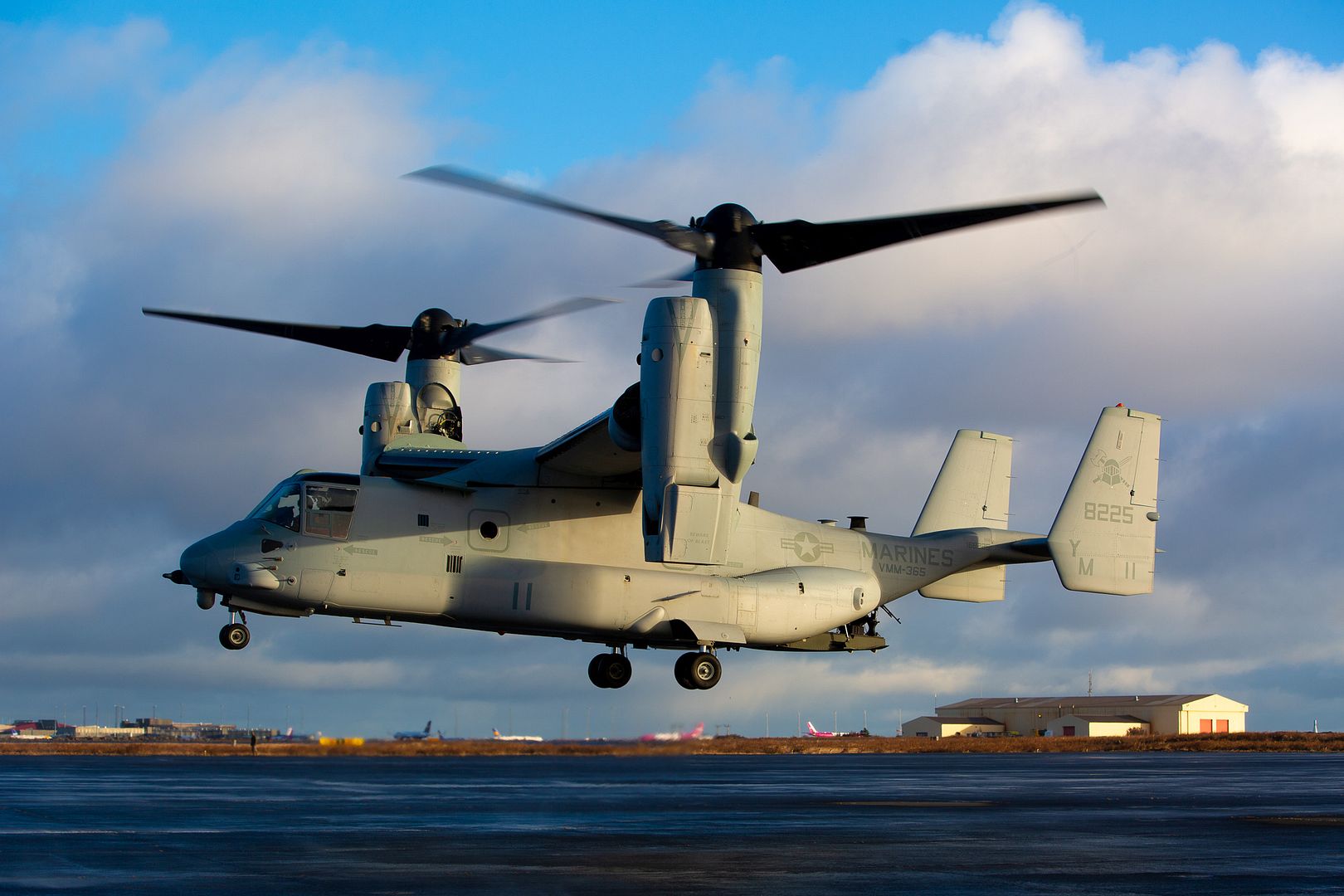
An A-10 Thunderbolt II assigned to the 66th Weapons School (WPS) at Nellis Air Force Base, Nevada, prepares for takeoff Oct. 5, 2018 at Ft. Irwin, California. The 66th WPS Weapons Instructor Course pilots flew as forward air control in support of Green Flag West 19-01 held at Ft Irwin. (U.S. Air Force photo by Airman Bailee A. Darbasie)
NORTH SEA (Oct. 16, 2018) Sailors transport an E-2D Hawkeye, assigned to the "Seahawks" of Carrier Airborne Early Warning Squadron (VAW) 126, on the flight deck aboard the Nimitz-class aircraft carrier USS Harry S. Truman (CVN 75). Currently operating in the U.S. 6th Fleet area of operations, Harry S. Truman will continue to foster cooperation with regional allies and partners, strengthen regional stability, and remain vigilant, agile and dynamic.(U.S. Navy photo by Mass Communication Specialist Seaman Maxwell Higgins/Released)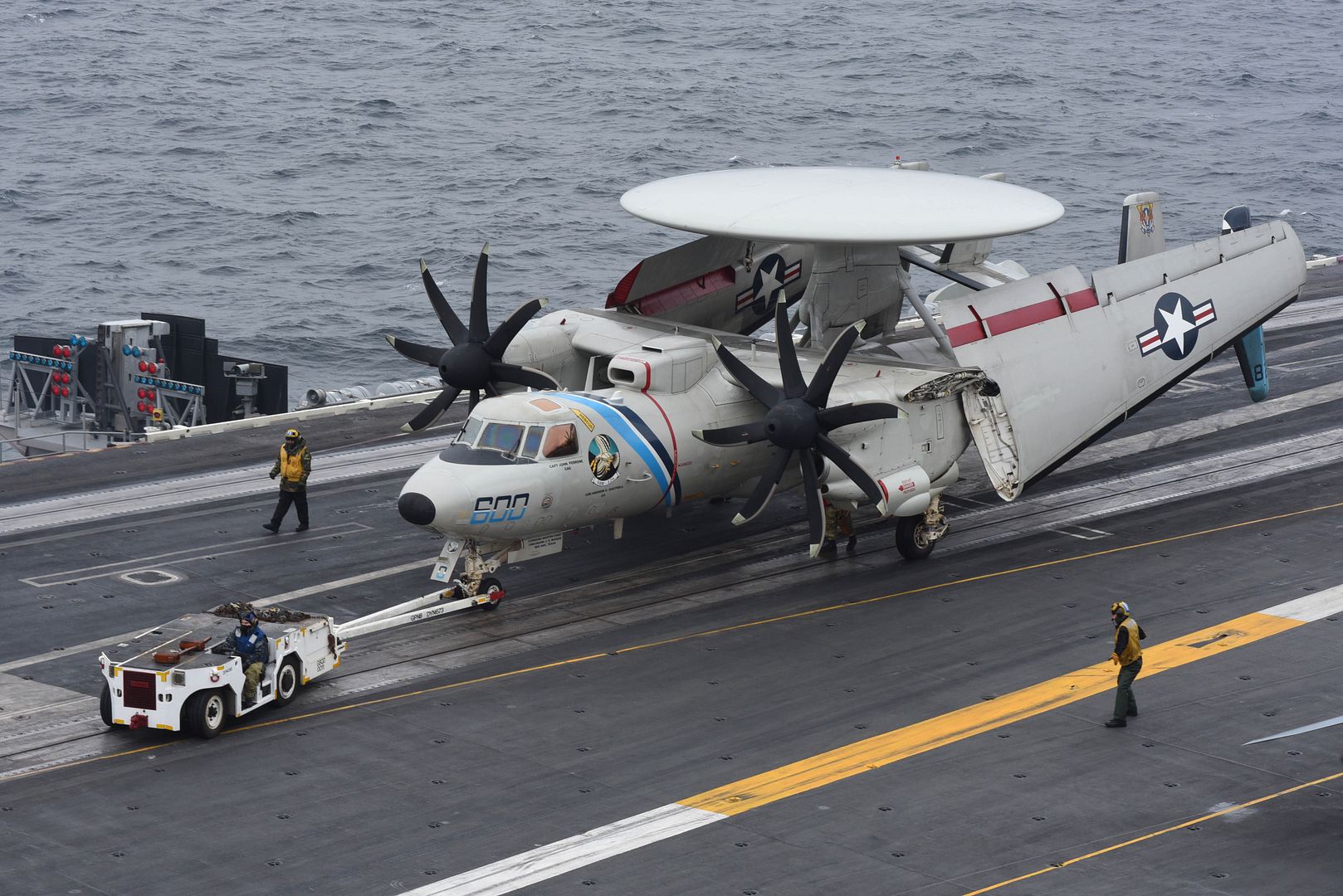
Amsterdam, Netherlands, October 18th, 2018 ? Embraer announces today at MRO Europe that Air Peace, Nigeria?s leading private airline, has signed a multi-year Pool Program Agreement for spare parts and support covering more than 250 components for their six Embraer ERJ 145 jets.
Based at Murtala Muhammed International Airport, in Ikeja, Lagos State, the airline provides passenger and charter services and serves the major cities of Nigeria, the West Coast of Africa and hopes to launch its international operations soon. With their ERJ 145 jets, it aims to expand their local and regional routes and transform air travel in the country.
The contract also contemplates access to a huge and reliable stock inventory of more than 150 different parts under the Embraer Parts Exchange Program (EPEP+), which provides part availability in far less time than usual, avoiding Aircraft on Ground situations and delays due to lack of specific parts.
The component solution program is part of a suite of services that Embraer offers to support the growing fleet of Embraer aircraft worldwide through TechCare, the new Embraer platform that assembles the entire portfolio of products and solutions to deliver the best experience of services and support.
?We are humbled to have Air Peace as our customer in Africa, further reinforcing Embraer's commitment to customers in the region with TechCare portfolio of solutions. Embraer?s Pool Program leverages increased competitiveness providing repairable solutions through reduced lead times and costs,? says John Linn, Embraer Vice President Customer Relationship Management (CRM), Commercial Aviation.
?The Pool and EPEP+ Programs are natural fit and the best options as they offer sensible, cost effective and practical parts solution to our business, guaranteeing efficiency and competitive results. We recognise very good performance of Embraer?s services and support,? said Air Peace Chief Operating Officer, Oluwatoyin Olajide. Embraer aircraft have been operating in Africa since 1978, when the first Bandeirante turboprop arrived on the continent. The company continues to consolidate its presence in the region?s fast-growing aviation industry offering the best solutions in services and support to its customers.
-
 Main AdminCapt. Andrew ?Dojo? Olson, F-35 Heritage Flight Team pilot and commander, performs a vertical climb in an F-35A Lightning II during the Bell Fort Worth Alliance Air Show Oct. 14, 2018, in Fort Worth, Texas. The F-35A Lightning II?s F-135 single-engine contains 43,000 pounds of thrust. (U.S. Air Force photo by Senior Airman Alexander Cook)
Main AdminCapt. Andrew ?Dojo? Olson, F-35 Heritage Flight Team pilot and commander, performs a vertical climb in an F-35A Lightning II during the Bell Fort Worth Alliance Air Show Oct. 14, 2018, in Fort Worth, Texas. The F-35A Lightning II?s F-135 single-engine contains 43,000 pounds of thrust. (U.S. Air Force photo by Senior Airman Alexander Cook)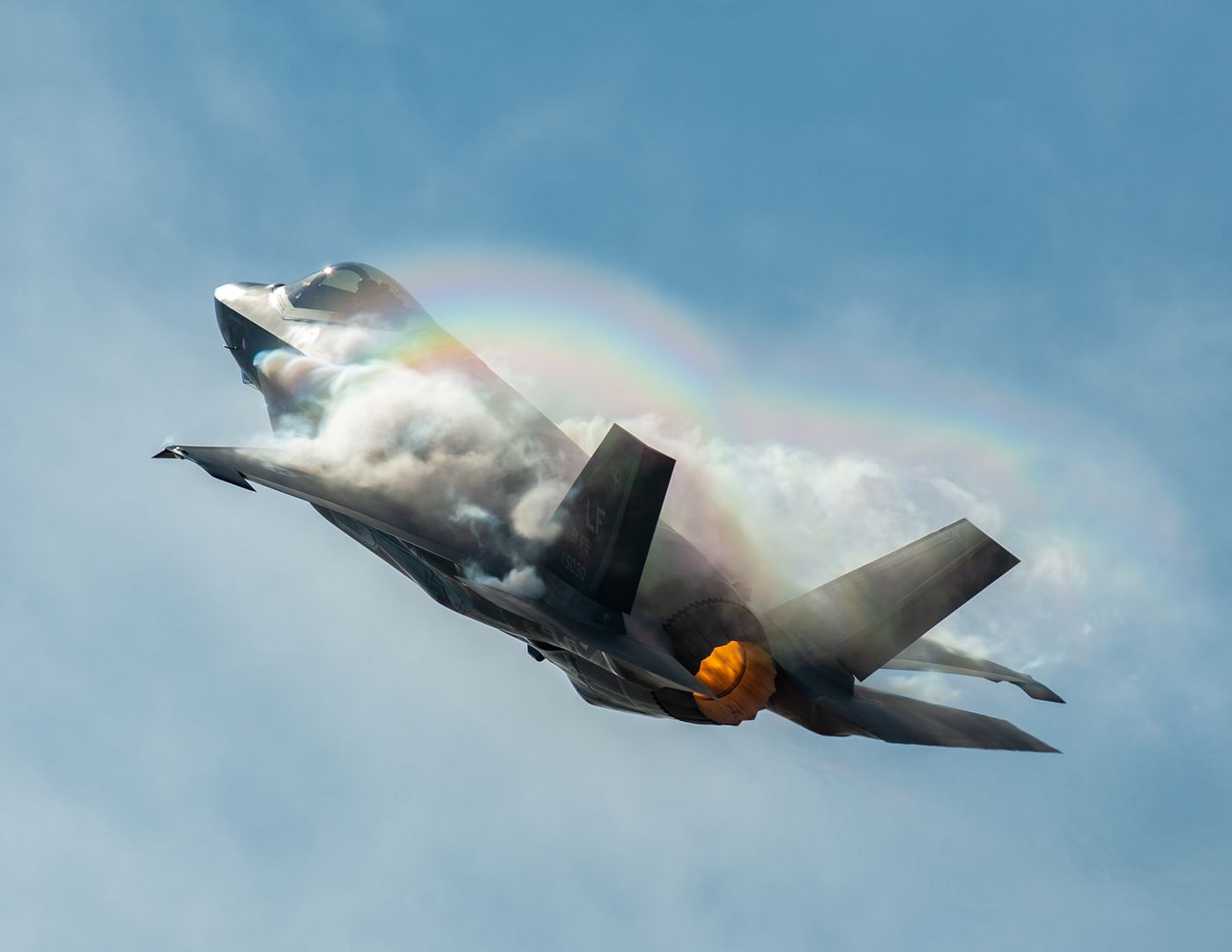
A CH-53E Super Stallion with Marine Heavy Helicopter Squadron 465, Marine Aircraft Group, 3rd Marine Aircraft Wing, takes off with a M142 High Mobility Artillery Rocket System during an exercise at Camp Pendleton, Calif., Oct. 17, 2018. 1st Transportation Support Battalion utilized a Helicopter Support Team to conduct a dual-point external lift exercise to refine the logistical capabilities to support the Marine Expeditionary Force through the distribution of personnel, equipment and supplies. Both the Ground Combat Element and Air Combat Element worked together to facilitate rapid transportation of munitions. (U.S. Marine Corps photo by Lance Cpl. Betzabeth Y. Galvan)
U.S. Vice President Mike Pence arrives on Air Force Two at Buckley Air Force Base, Colorado, Oct. 18, 2018. Pence took the time to greet Airmen, their families and key spouses before departing for an event in Denver. (U.S. Air Force photo's by Senior Airman Codie Collins)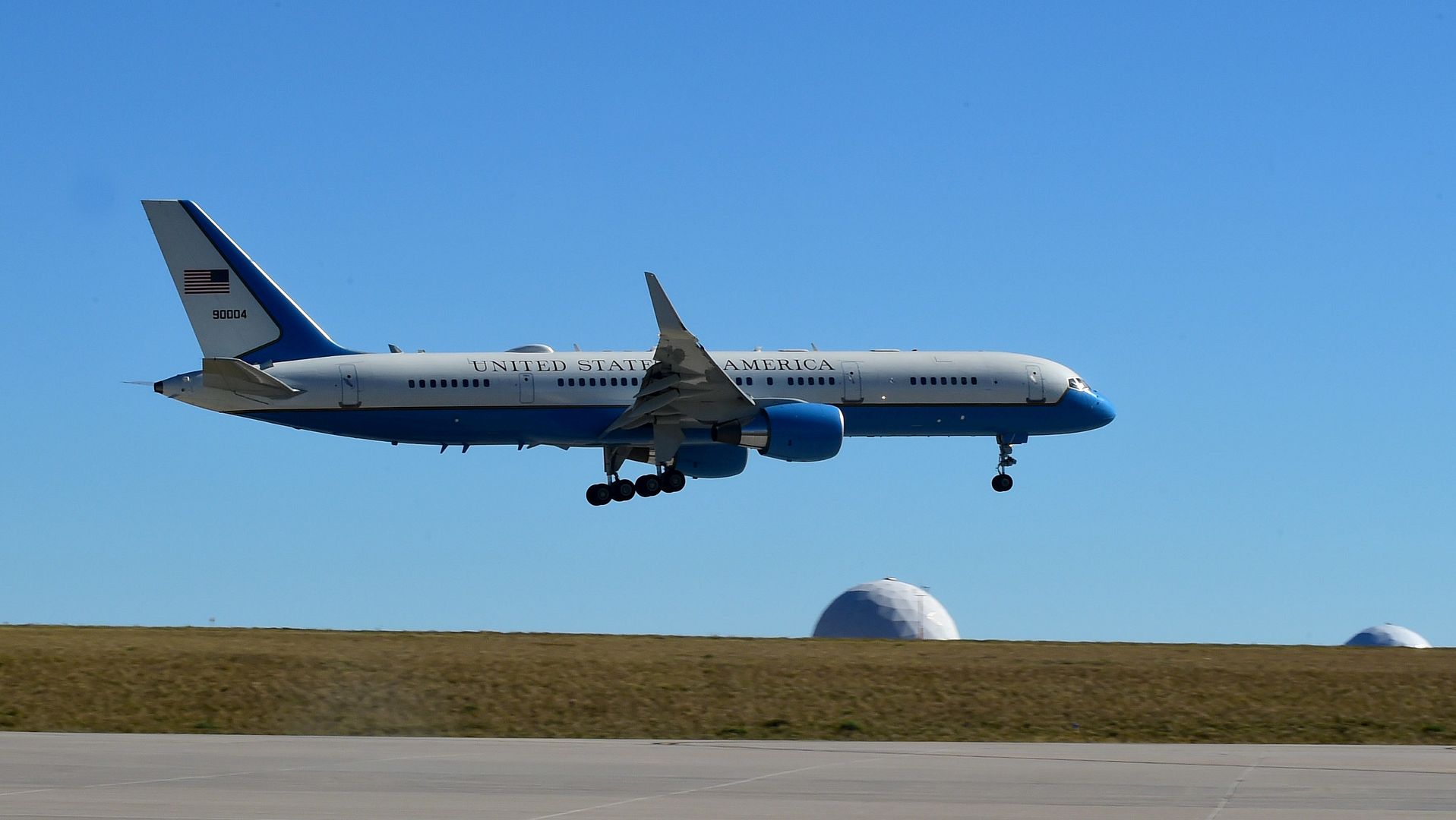

The boom of a KC-135 from the 171st Air Refueling Wing, near Pittsburgh, transfers fuel to an F-16 aircraft from the 177th Fighter Wing of Atlantic City, over the Atlantic Ocean, Oct. 19, 2018. A KC-135 can transfer about 7,000 lbs. of fuel per minute. (U.S. Air National Guard photo by Tech. Sgt. Allyson L. Manners)
NORWEGIAN SEA (Oct. 19, 2018)
An F/A-18F Super Hornet, assigned to the "Red Rippers" of Strike Fighter Squadron (VFA) 11, launches from the Nimitz-class aircraft carrier USS Harry S. Truman (CVN 75). For the first time in nearly 30 years, a U.S. aircraft carrier has entered the Arctic Circle. Accompanied by select ships from Carrier Strike Group Eight (CSG- , Harry S. Truman traveled north to demonstrate the flexibility and toughness of U.S. naval forces through high-end warfare training with regional allies and partners. U.S. Navy photo by Mass Communication Specialist 2nd Class Thomas Gooley (Released)
, Harry S. Truman traveled north to demonstrate the flexibility and toughness of U.S. naval forces through high-end warfare training with regional allies and partners. U.S. Navy photo by Mass Communication Specialist 2nd Class Thomas Gooley (Released)
SEATTLE, Oct. 19, 2018 /PRNewswire/ -- Boeing [NYSE: BA] delivered the first 787-9 Dreamliner for Shanghai-based Juneyao Airlines. The new, super-efficient Dreamliner will also be the first widebody commercial jet operated by a privately-held Chinese airline.
"This delivery is our airline's biggest milestone and marks a big step toward expanding our network in China and beyond," said Wang Junjin, Chairman, Juneyao Airlines. "As the market-leading widebody model, the 787-9 Dreamliner will play a key role in our global business growth."
Juneyao Airlines, previously an all-Airbus operator, mainly offers flights from Shanghai to more than 50 cities across China. In introducing the long-range 787 Dreamliner, the carrier is looking to expand its international network and increase flights to Southeast Asia, Japan and Korea.
The 787-9 is part of a family of three airplanes that offer long ranges and unmatched fuel efficiency in the 200 to 350 seat market. The 787-9 can carry 290 passengers and fly up to 7,635 nautical miles (14,140 km), while reducing fuel use and emissions by 20 to 25 percent compared to older airplanes. Passengers will appreciate a more comfortable flight thanks to the Dreamliner's large windows, lower cabin altitude, smooth-ride technology, and other amenities.
"We are delighted to welcome Juneyao to the growing 787 Dreamliner family. We are confident that the Dreamliner's fuel efficiency, range and passenger-pleasing features will power the next stage of Juneyao Airlines' expansion," said Ihssane Mounir, senior vice president of Commercial Sales & Marketing at The Boeing Company. "This delivery marks the first of 10 787-9 Dreamliners for Juneyao and their emergence as an international carrier."
To ensure a smooth introduction of the Dreamliner, Juneyao Airlines will use Boeing Global Services' pilot training. The airline will also employ electronic flight bag in the flight deck to improve operational efficiency. On other aircraft, Juneyao uses Boeing's tailored charting services and flight planning solutions.
The 787 Dreamliner is the fastest-selling widebody jet in history with nearly 1,400 orders since its launch. More than 700 of those Dreamliners have entered service around the world, helping airlines open 210 new, non-stop routes and saving more than 28 billion pounds of fuel.
France has joined the list of nations utilising the 21st century benchmark for new generation tanker/transport aircraft
Mobility, deployment and strategic reach are three keywords describing the capabilities that Airbus-built A330 MRTTs (Multi-role Tanker Transports) bring every day to military services around the globe.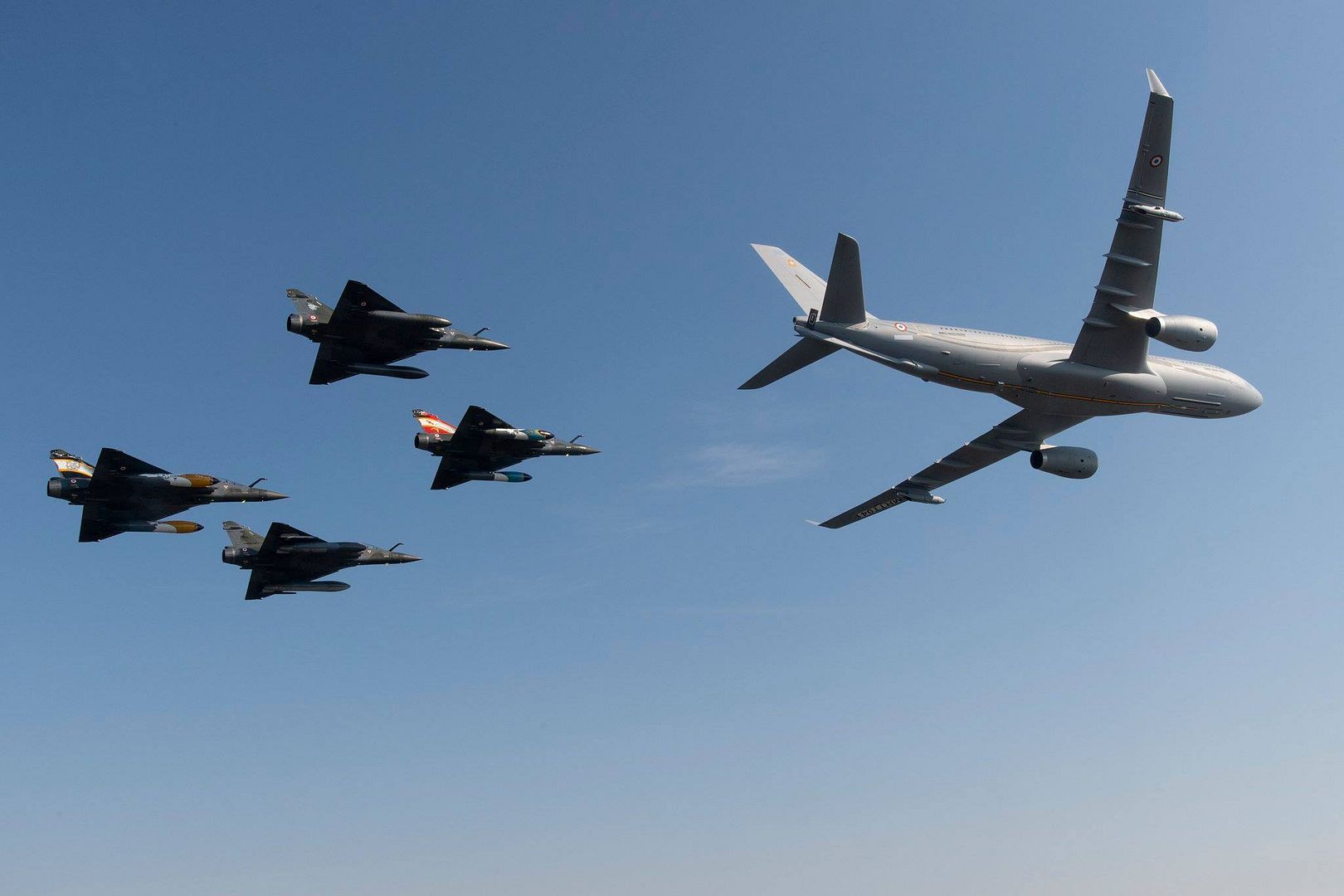
With the French Air Force now receiving its first A330 MRTT, the number of countries flying this version of Airbus? modern and versatile twin-engine A330 jetliner has increased to six ? joining Australia, Saudi Arabia, Singapore, the United Arab Emirates and the United Kingdom.
The A330 MRTT?s capabilities are regularly demonstrated in air-to-air refuelling missions, with millions of pounds of fuel having been transferred from its underwing hose-and-drogue pods and centerline boom during operations performed in the Middle East, Africa and Asia. Carrying 111 tonnes of fuel, the A330 MRTT has the highest capacity of all aerial tankers, able to offload 50,000 kg. of fuel while airborne to a broad range of receiver aircraft during a typical four-hour loitering mission at over 1,000 nautical miles from its takeoff point.
A330 MRTTs also play a vital airlift role ? transporting troops and supplies, performing aeromedical evacuation (MedEvac) duties, as well delivering material during humanitarian flights and for disaster relief. The aircraft has a maximum payload of up to 45 tonnes, carrying passengers on the main deck and cargo in the lower deck.
Another utilisation is the deployment of fighter aircraft over long distances. The A330 MRTT can accompany four fighter aircraft while carrying 50 personnel and 12 tonnes of freight (spare parts, equipment and luggage) in direct flights over 5,200 km.
To date, A330 MRTTs have been ordered by 12 customers, with 31 aircraft currently in operation. The global fleet of Airbus Multi-role Tanker Transports have logged a total of more than 170k flight hours since the first aircraft was delivered in 2011.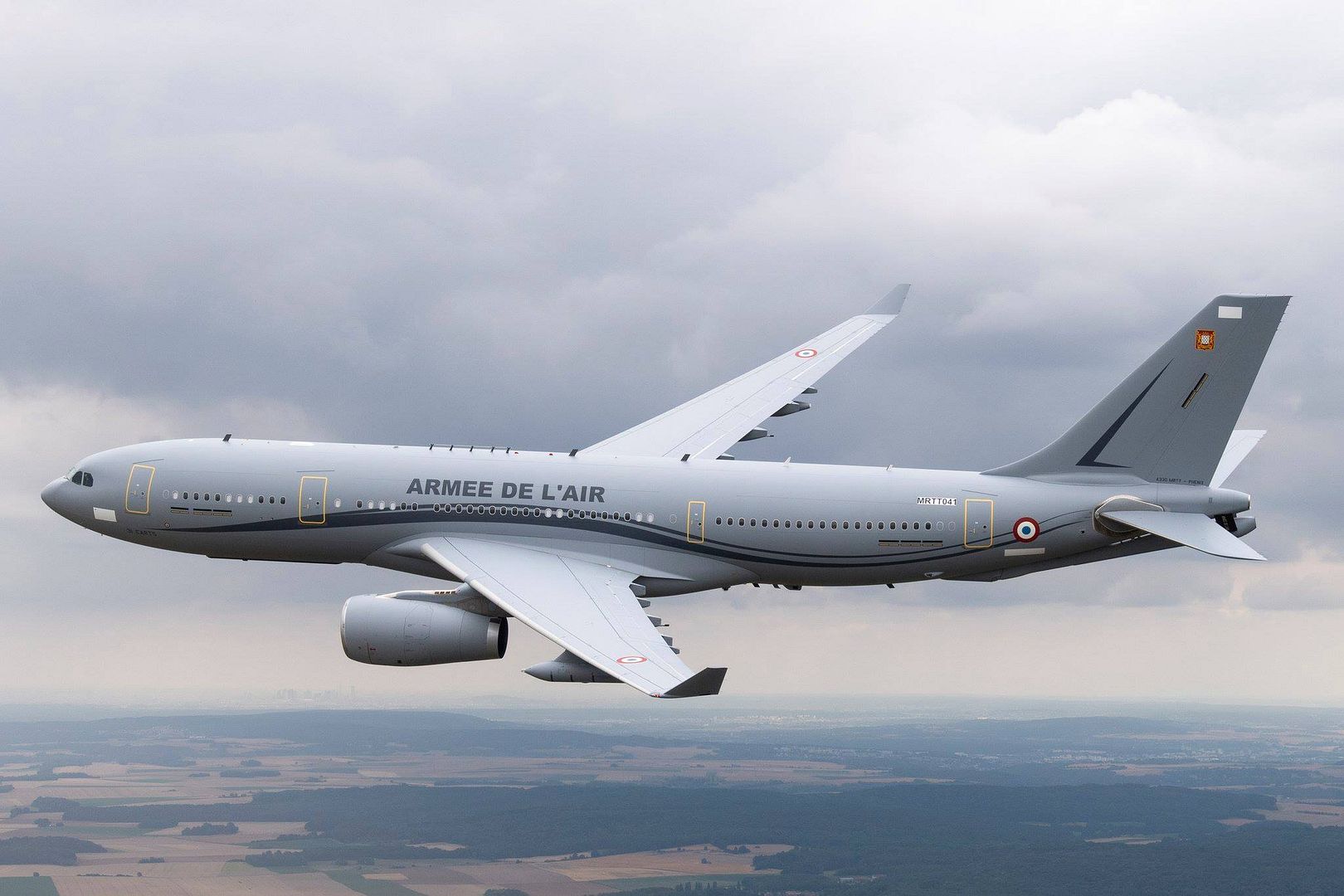
GRAND PRAIRIE, Texas, Airbus Helicopters will showcase the versatile and market-leading H135 aircraft as the future training helicopter for the U.S. Navy at the Naval Helicopter Association?s Fleet Fly-in at Naval Air Station Whiting Field in Pensacola, Florida from October 22-26.
?Airbus Helicopters is convinced the H135 is the best solution to prepare the next generation of U.S. Navy pilots for decades to come, both technically and economically,? said Chris Emerson, President of Airbus Helicopters, Inc. and Head of the North America region. ?We look forward to demonstrating why this aircraft is the best solution for the Navy?s helicopter training needs.?
Airbus pilots will conduct orientation flights with U.S. Navy pilots and other stakeholders to demonstrate the H135?s capabilities at the October fleet fly-in.
Equipped with the most advanced technologies available like 4-axis autopilot and One Engine Inoperable (OEI) training mode, the FAA Instrument Flight Rules (IFR) Certified H135 provides future aviators with an ideal platform for training missions, a critical requirement for the Navy as it trains its pilots over water and in reduced visibility.
?As a twin-engine helicopter, the H135 provides a training environment most similar to the Navy?s warfighting rotorcraft fleet, creating opportunities for cost and operational efficiencies compared to a single-engine aircraft,? said Scott Tumpak, vice president of military programs at Airbus Helicopters, Inc.
With its maneuverability, cockpit visibility, advanced safety features, endurance, and best-value performance attributes, the H135 is the preeminent military training helicopter in the world. More than 130 units are providing training for military pilots in 13 countries, including Germany, Switzerland, the United Kingdom, Australia, and Japan.
The H135 has executed over 300,000 military training flight hours. Globally, the H135 operates in more than 60 countries and has flown more than 4.8 million hours.
The H135 boasts the Airbus-developed, state-of-the-art Helionix avionics package designed by pilots specifically for helicopters. The H135?s advanced cockpit design improves pilots? situational awareness while reducing workload, which enhances safety. The high-set main rotor and Fenestron? shrouded tail rotor contribute to improved operational safety.
Airbus produces the U.S. Army?s primary training helicopters, the twin-engine UH-72A Lakota. Since contract award in 2006, Airbus has delivered 431 Lakotas on time, on cost and on quality. Also, the Lakota is the primary trainer aircraft for the Navy?s Advanced Test Pilot School in Patuxent River, Md.
The H135 trainers for the Navy will be produced at the company?s facility in Columbus, Miss., where the Lakota is manufactured. The Columbus workforce is comprised of more than 40 percent U.S. military veterans.
?A multi-mission and economical workhorse, the H135 is the right tool to support U.S. Navy initial pilot training. Airbus? global success in delivering rotary wing training platforms is recognized worldwide,? Tumpak added.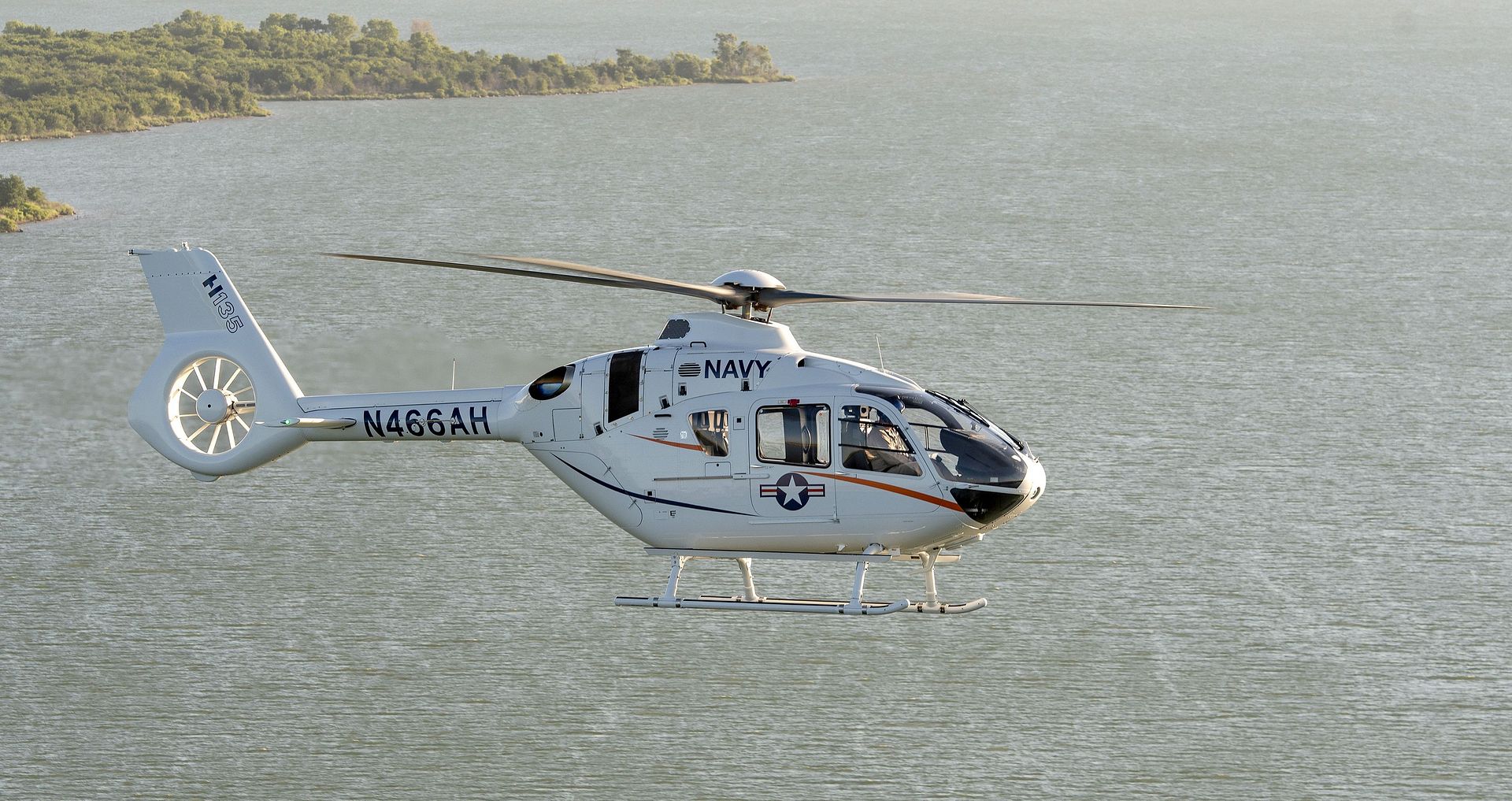
-
 Main AdminA Republic of Korea air force F-15 Slam Eagle, sits under the Aurora Borealis in Oct. 2018 on the Eielson Air Force Base, Alaska flight line during RED FLAG-Alaska 19-1. The Republic of Korea and Finnish Air Force both participated in RF-A 19-1. (Courtesy photo from the Republic of Korea air force)
Main AdminA Republic of Korea air force F-15 Slam Eagle, sits under the Aurora Borealis in Oct. 2018 on the Eielson Air Force Base, Alaska flight line during RED FLAG-Alaska 19-1. The Republic of Korea and Finnish Air Force both participated in RF-A 19-1. (Courtesy photo from the Republic of Korea air force)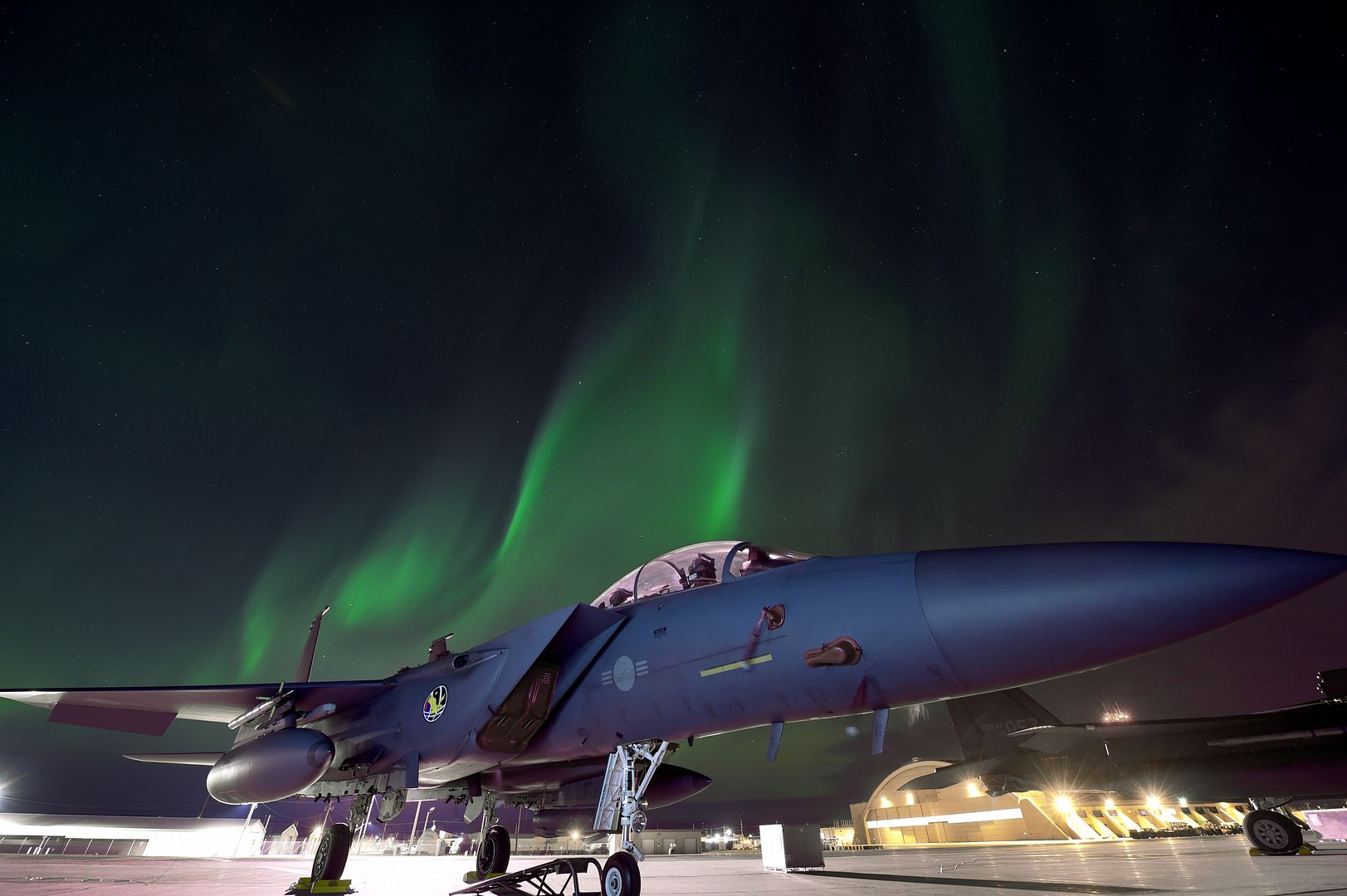
U.S. Air Force and Finnish air force aircraft fly together in Oct. 2018, on the way to Eielson Air Force Base, Alaska to participate in RED FLAG-Alaska 19-1. RF-A 19-1 is the first RED FLAG exercise the Finnish air force has participated in. (Courtesy photo from the Finnish air force)
An Ohio Army National Guard CH-47 Chinook helicopter gets a shower from a firetruck at the Tallahassee Regional Airport in Tallahassee, Fla. to wash away salt after a flight over the Gulf of Mexico. The helicopter and a seven-member crew from Company B, 3rd Battalion, 238th Aviation Regiment, based out of North Canton, Ohio, were deployed Oct. 11-17, 2018, and delivered water, food and rescue personnel in support of Hurricane Michael recovery efforts. (Ohio National Guard photo's by Chief Warrant Officer 3 Cody Schapson)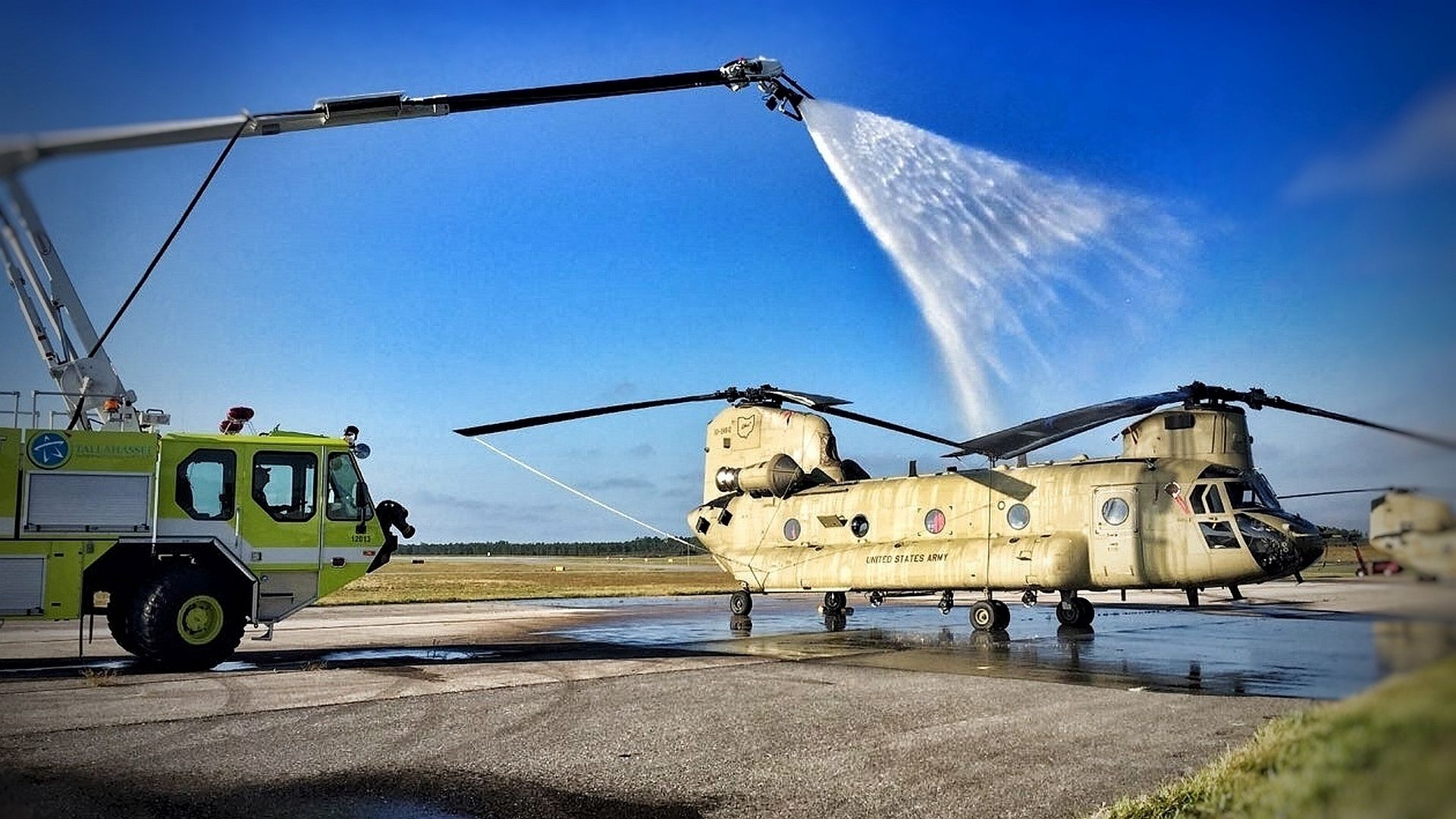

ATLANTIC OCEAN (Oct. 19, 2018) An AV-8B Harrier launches from the flight deck of the Wasp-class amphibious assault ship USS Kearsarge (LHD3) during the Carrier Strike Group (CSG) 4 composite training unit exercise (COMPTUEX). COMPTUEX is the final pre-deployment exercise that certifies the combined Kearsarge Amphibious Ready Group (ARG) and 22MEU abilities to conduct military operations at sea and project power ashore through joint planning and execution of challenging and realistic training scenarios. CSG 4 mentors, trains and assesses East Coast units preparing for future deployments. (U.S. Navy photo by Mass Communication Specialist 2nd Class Ryre Arciaga/Released)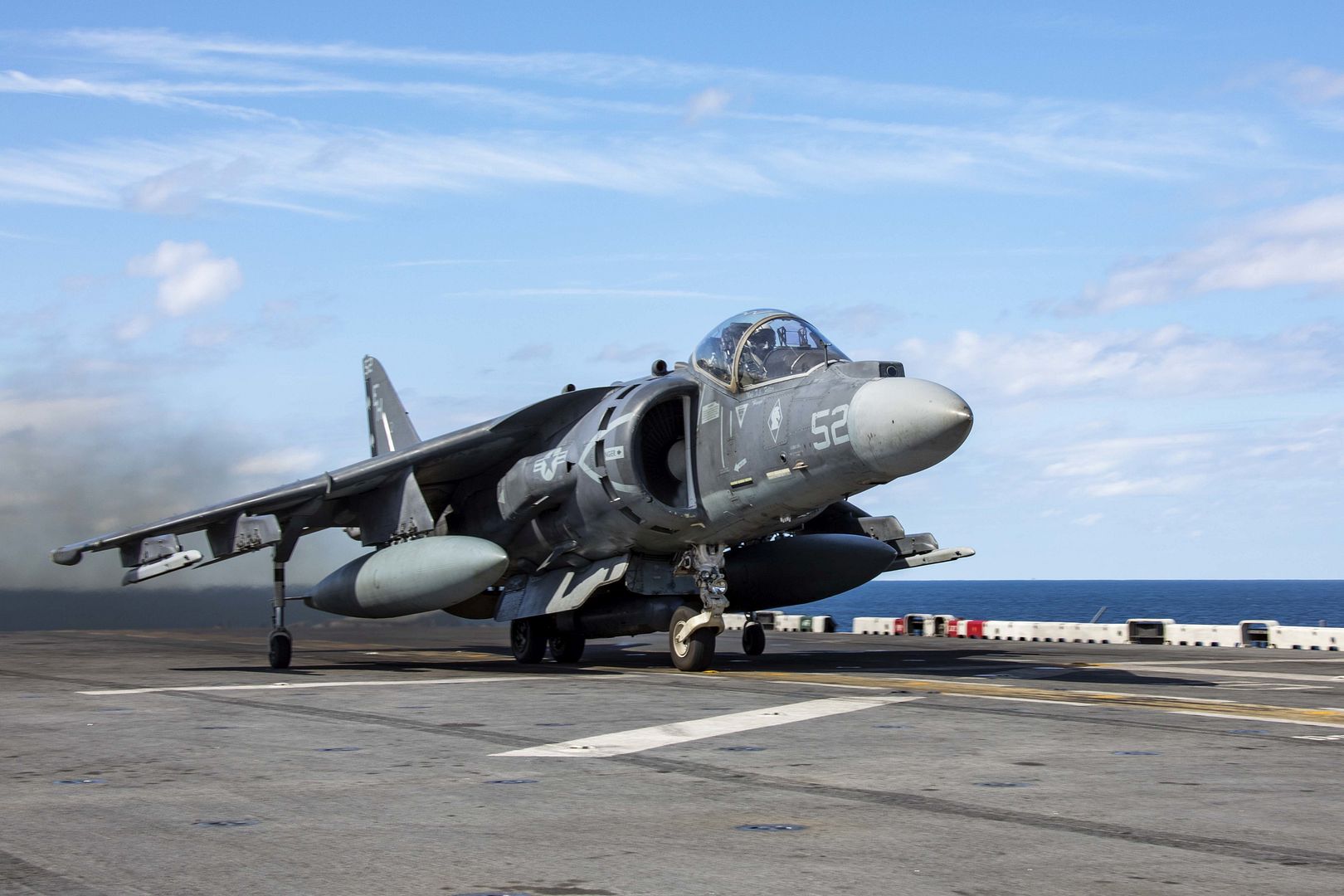
NORWEGIAN SEA (Oct. 18, 2018) A C-2A Greyhound, assigned to the "Rawhides" of Fleet Logistic Support Squadron (VRC) 40, lands aboard the Nimitz-class aircraft carrier USS Harry S. Truman (CVN 75). Currently operating in the U.S. 6th Fleet area of operations, Harry S. Truman will continue to foster cooperation with regional allies and partners, strengthen regional stability, and remain vigilant, agile and dynamic. (U.S. Navy photo by Mass Communication Specialist Seaman Joseph A.D. Phillips/Released)
An E-3D Sentry aircraft from RAF Waddington?s Number 8 Squadron has arrived at Thumrait Airbase in the South of Oman, to take part in exercise #SaifSareea 3, as part of 140 Expeditionary Air Wing.
The aircraft took off on its first in-theatre sortie in front of the iconic RAFO Thumrait Air Traffic Control Tower, to fulfil its role providing real-time Command and Control to all allied airborne assets.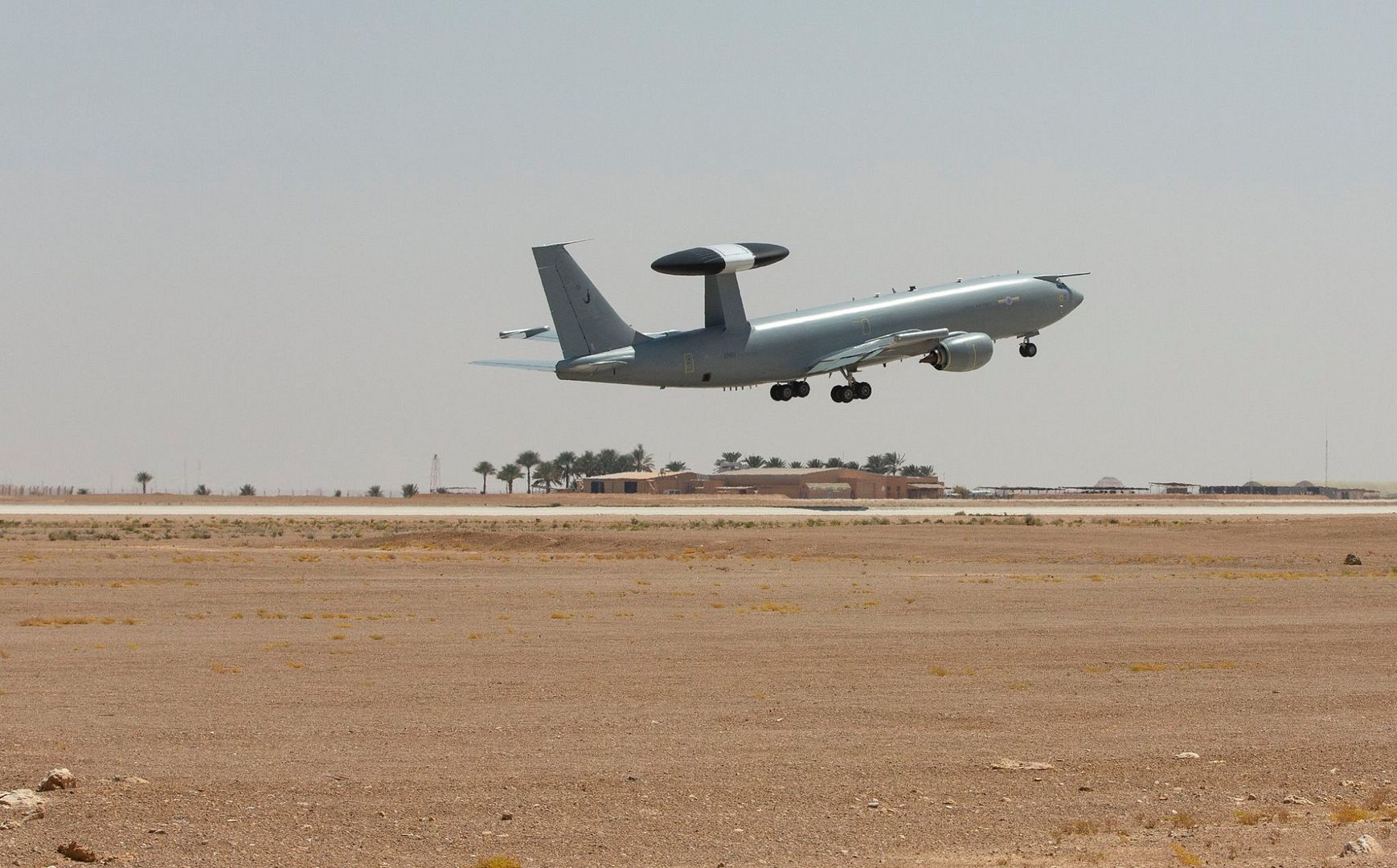
Typhoon Aircraft from the Royal Air Force of Oman have been refuelling from an RAF Voyager aircraft over Oman during Exercise #SaifSareea 3.
The Omani pilots have been working hard alongside RAF personnel, training to be competent to refuel from the UK air asset should the need arise.
Refuelling from extendable pods on the Voyager's wing means the Typhoon's flight time, and its capability, is dramatically increased.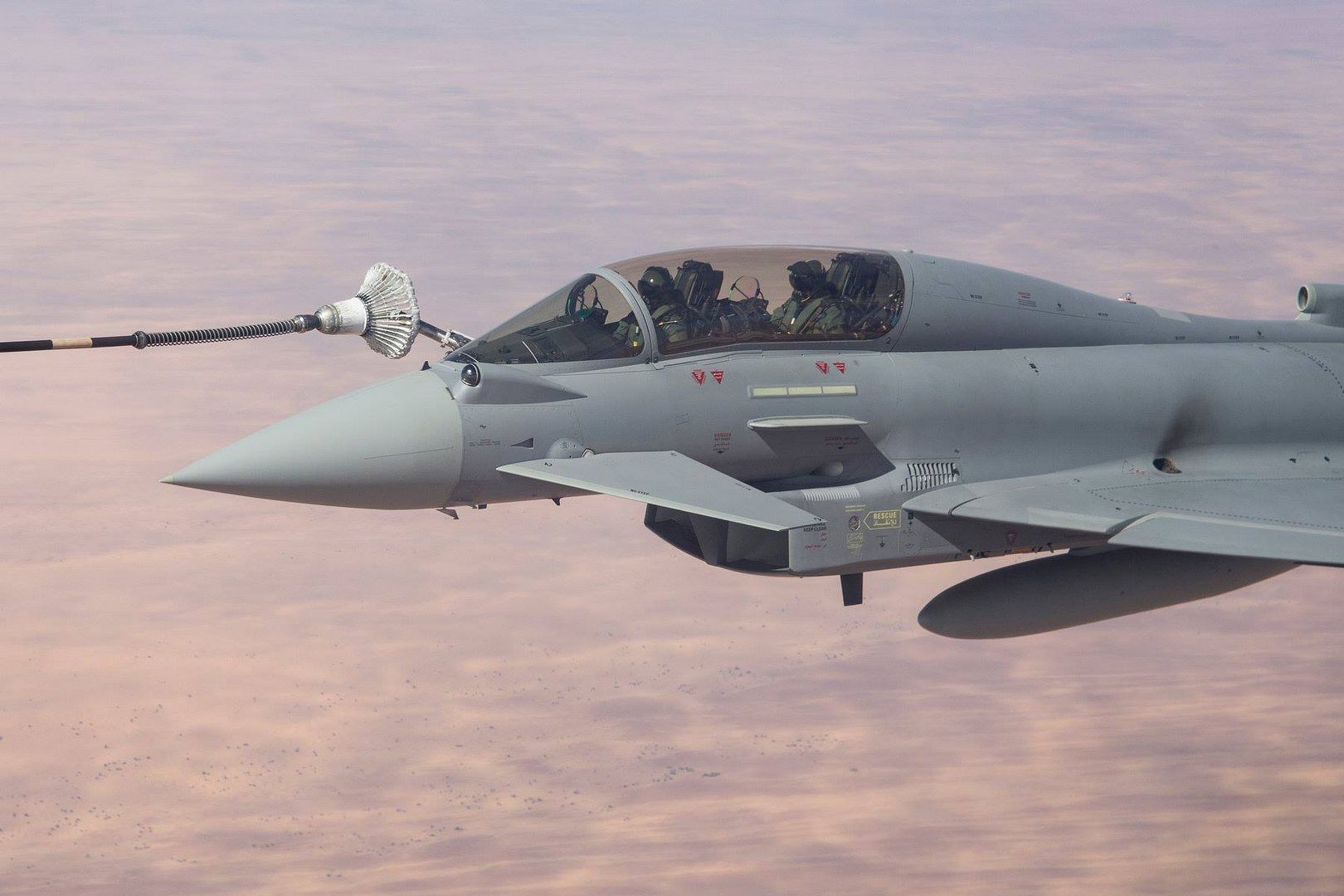
-
 Main AdminNORWEGIAN SEA (Oct. 22, 2018) F/A-18F Super Hornets, assigned to the ?Fighting Checkmates? of Strike Fighter Squadron (VFA) 211, prepare to launch from the Nimitz-class aircraft carrier USS Harry S. Truman (CVN 75). Currently operating in the U.S. Sixth Fleet area of operations, Harry S. Truman will continue to foster cooperation with regional allies and partners, strengthen regional stability, and remain vigilant, agile and dynamic. (U.S. Navy photo by Mass Communication Specialist 3rd Class Adelola Tinubu/Released)
Main AdminNORWEGIAN SEA (Oct. 22, 2018) F/A-18F Super Hornets, assigned to the ?Fighting Checkmates? of Strike Fighter Squadron (VFA) 211, prepare to launch from the Nimitz-class aircraft carrier USS Harry S. Truman (CVN 75). Currently operating in the U.S. Sixth Fleet area of operations, Harry S. Truman will continue to foster cooperation with regional allies and partners, strengthen regional stability, and remain vigilant, agile and dynamic. (U.S. Navy photo by Mass Communication Specialist 3rd Class Adelola Tinubu/Released)
NORWEGIAN SEA (Oct. 22, 2018) An EA-18G Growler, assigned to the "Rooks" of Electronic Attack Squadron (VAQ) 137, launches from the Nimitz-class aircraft carrier USS Harry S. Truman (CVN 75). Currently operating in the U.S. Sixth Fleet area of operations, Harry S. Truman will continue to foster cooperation with regional allies and partners, strengthen regional stability, and remain vigilant, agile and dynamic. (U.S. Navy photo by Mass Communication Specialist 3rd Class Adelola Tinubu/Released)
Maj. Daniel Toftness, a reservist in the 419th Fighter Wing, conducts a pre-flight check before a sortie in an F-35A Lightning II Oct. 18, 2018, at Hill Air Force Base, Utah. The flight marked the 10,000th sortie with the aircraft at Hill since the first operational F-35s arrived in September 2015. (U.S. Air Force photo by Cynthia Griggs)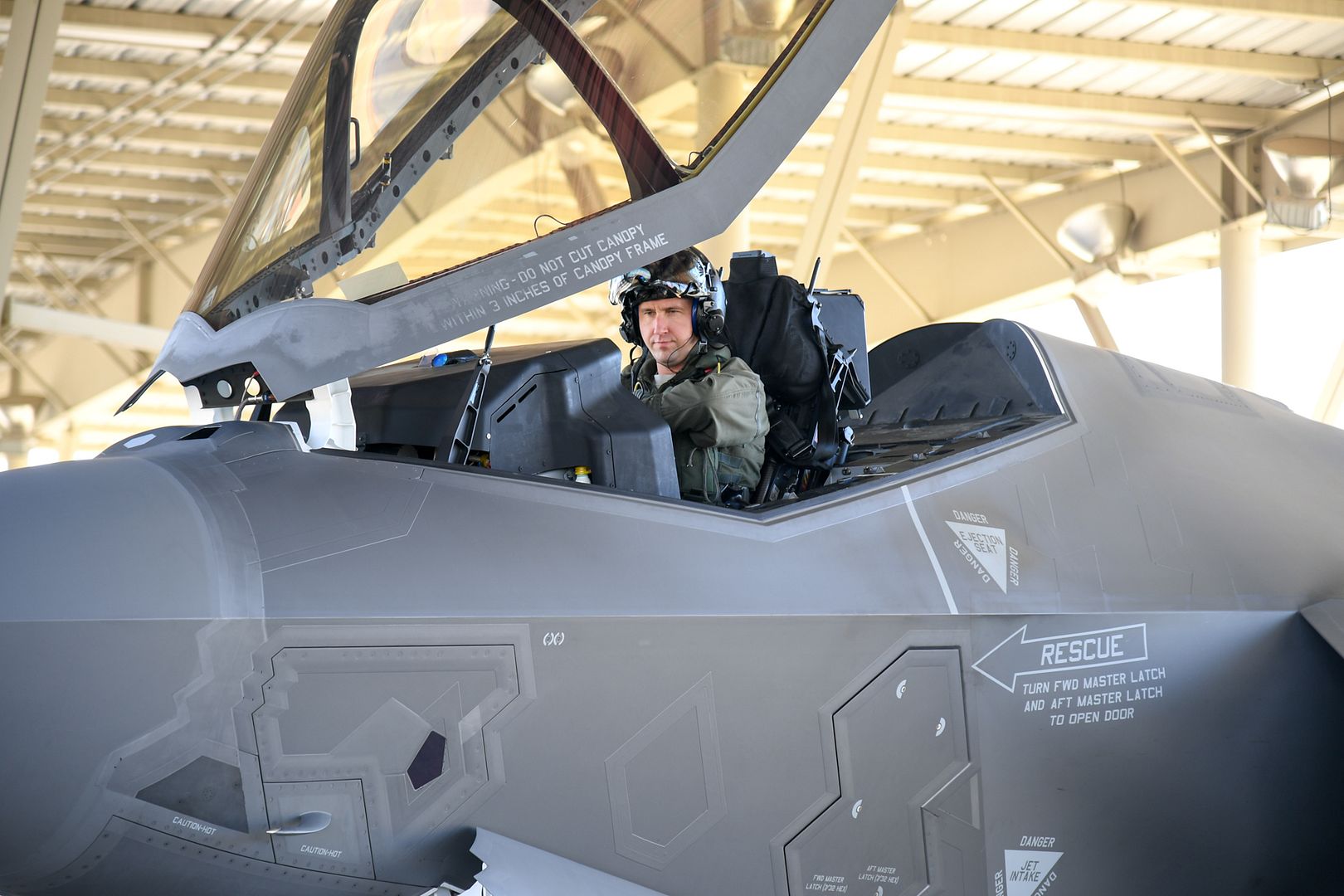
A 96th Test Wing F-15 lifts off from the runway Oct. 15 at Eglin Air Force Base, Fla. The F-15 belongs to the 40th Flight Test Squadron who is responsible for developmental testing with the aircraft and the F-16 Fighting Falcon. (U.S. Air Force photo/Samuel King Jr.)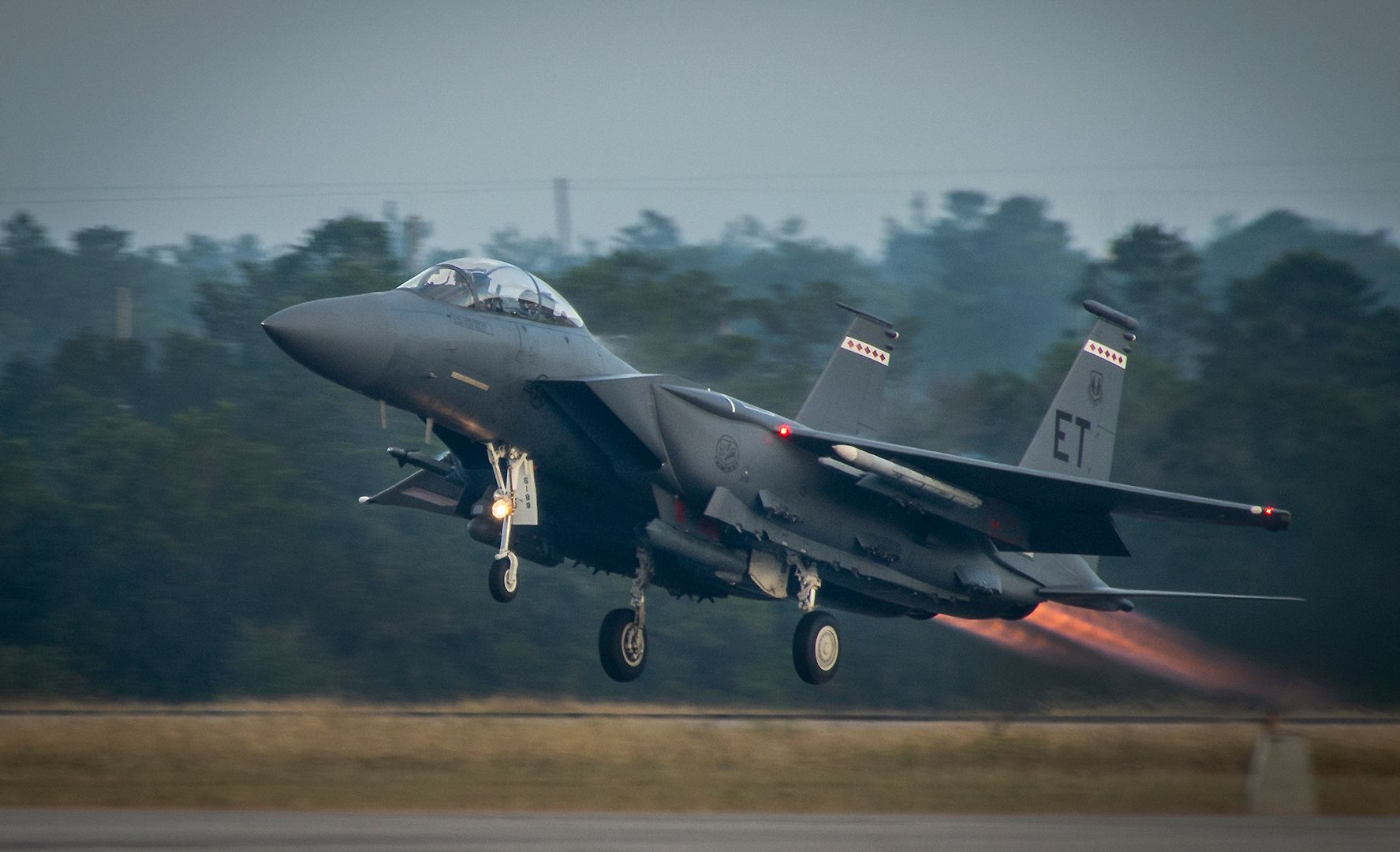
Taiwan?s China Airlines (CAL) has taken delivery of its newest A350-900 aircraft, which features a unique joint livery that combines the airline?s distinctive plum blossom logo with Airbus? exclusive A350 XWB carbon fibre pattern.
Following this delivery, China Airlines today has 14 A350-900 aircraft in its fleet. The airline operates these aircraft on non-stop long-haul routes, including services from Taipei to Europe and North America as well as on selected routes in the Asia-Pacific region.
Since entry into service in 2015, the A350 XWB has established itself as the new long-range leader in the larger twin aisle category. Over 200 aircraft are already in service with 22 airlines, flying primarily on long-haul routes.
At the end of September 2018, Airbus had recorded a total of 890 firm orders for the A350 XWB from 46 customers worldwide, already making it one of the most successful widebody aircraft programmes ever.
Innovations introduced with the A350 XWB Family include the latest aerodynamic design, carbon fibre fuselage and wings, plus new fuel-efficient Rolls-Royce engines. Together, these features translate into unrivalled levels of operational efficiency, with a 25 percent reduction in fuel consumption, compared with older generation aircraft of the same size, as well as significantly lower maintenance costs.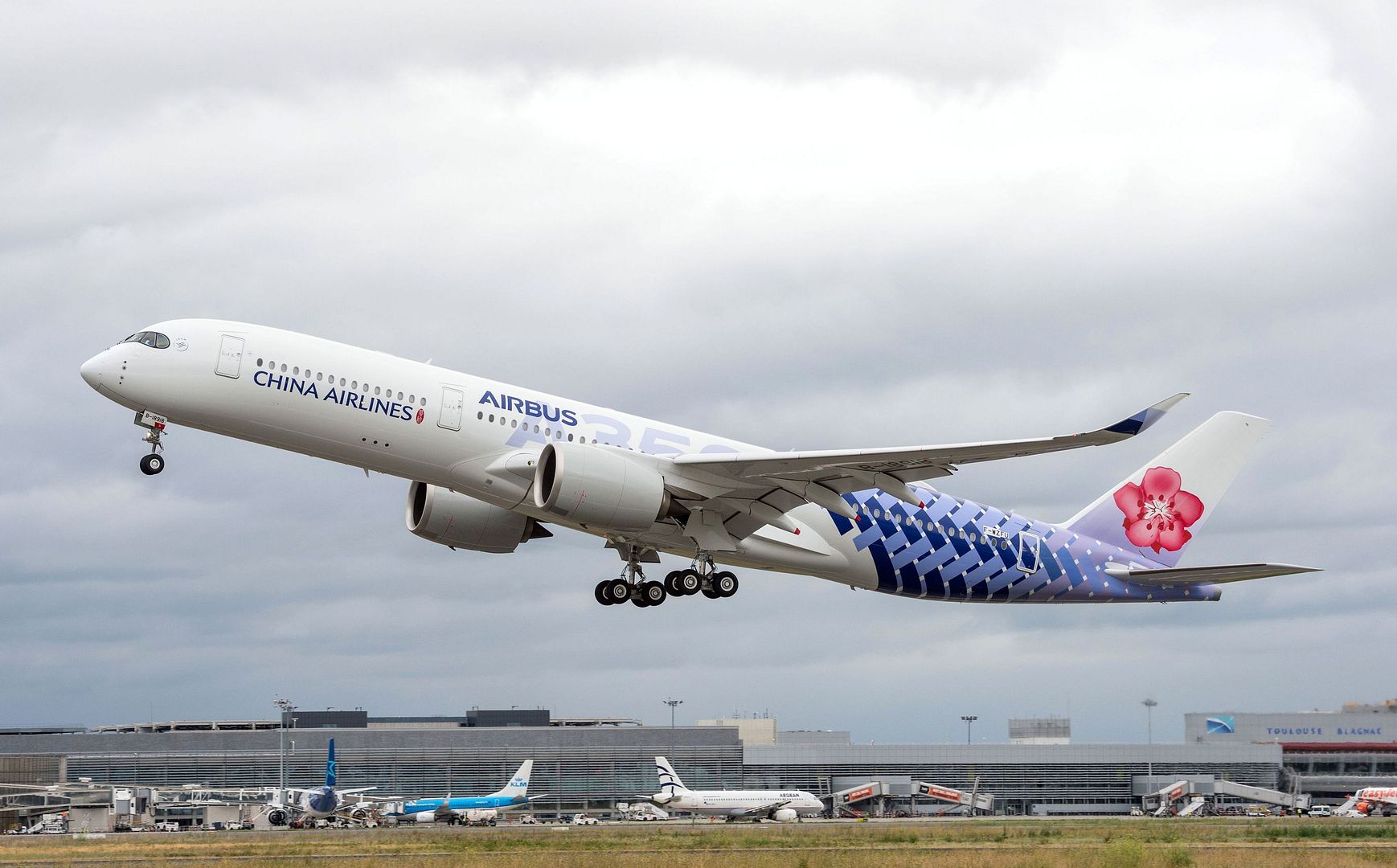
-
 Main AdminA U.S. Air Force fighter pilot, assigned to the 157th Fighter Squadron, lands an F-16 Fighting Falcon jet at McEntire Joint National Guard Base, after a successful Air Expeditionary Force deployment to an undisclosed location in Southwest Asia, October 20, 2018. The South Carolina Air National Guard?s 169th Fighter Wing deployed F-16 fighter jets and Airmen consisting of pilots, maintenance specialists and support staff to the 407th Air Expeditionary Group in July in support of Operation Inherent Resolve. (U.S. Air National Guard photo by Master Sgt. Caycee Watson)
Main AdminA U.S. Air Force fighter pilot, assigned to the 157th Fighter Squadron, lands an F-16 Fighting Falcon jet at McEntire Joint National Guard Base, after a successful Air Expeditionary Force deployment to an undisclosed location in Southwest Asia, October 20, 2018. The South Carolina Air National Guard?s 169th Fighter Wing deployed F-16 fighter jets and Airmen consisting of pilots, maintenance specialists and support staff to the 407th Air Expeditionary Group in July in support of Operation Inherent Resolve. (U.S. Air National Guard photo by Master Sgt. Caycee Watson)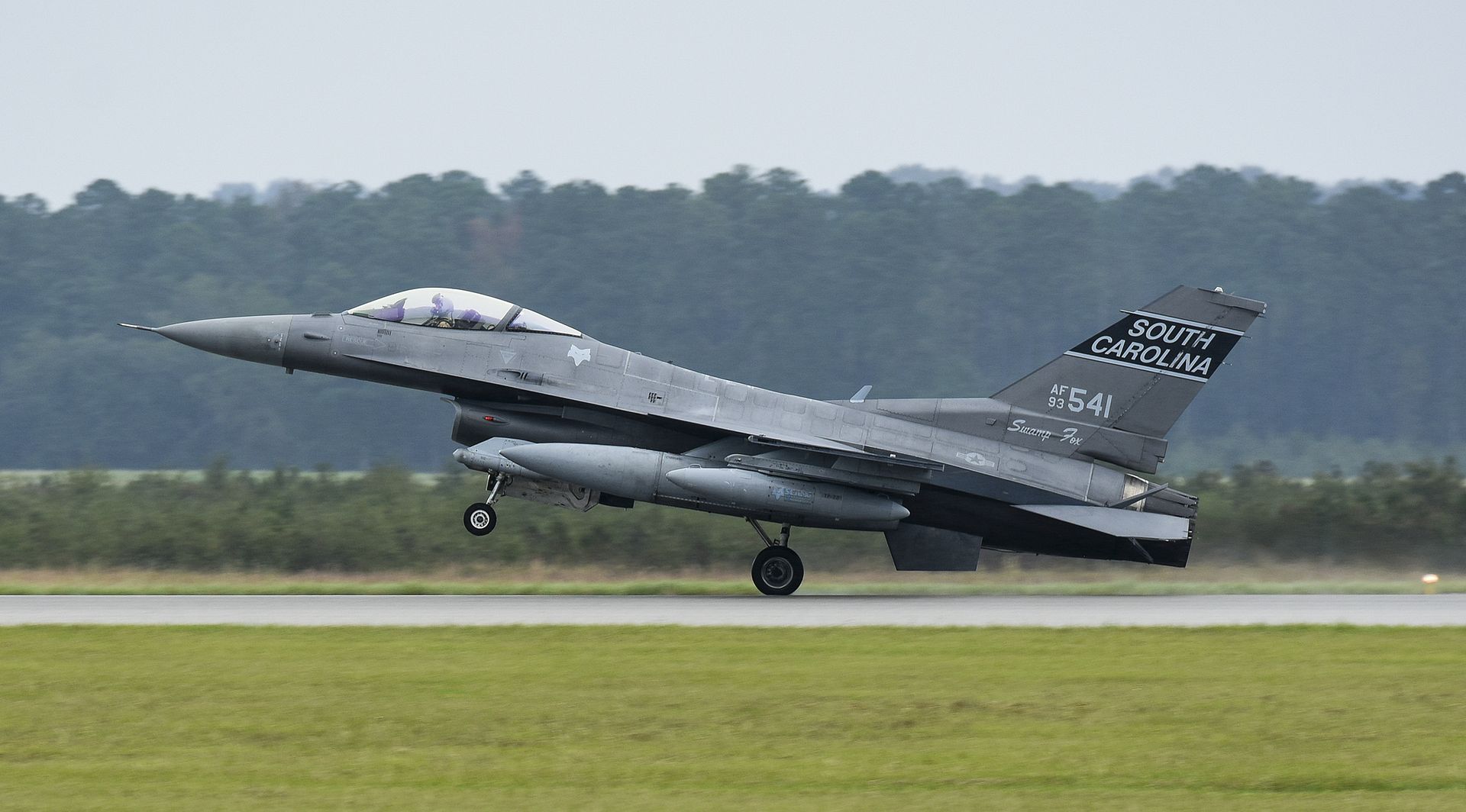
ATLANTIC OCEAN (Oct. 22, 2018) An AV-8B Harrier lands on the flight deck of the Wasp-class amphibious assault ship USS Kearsarge (LHD 3) during the Carrier Strike Group (CSG) 4 composite training unit exercise (COMPTUEX). COMPTUEX is the final pre-deployment exercise that certifies the combined Kearsarge Amphibious Ready Group and 22nd Marine Expeditionary Unit's (MEU) abilities to conduct military operations at sea and project power ashore through joint planning and execution of challenging and realistic training scenarios. CSG 4 mentors, trains and assesses East Coast units preparing for future deployments. (U.S. Navy photo by Mass Communication Specialist 2nd Class Ryre Arciaga/Released)
KEY WEST, Fla. (Oct. 19, 2018) Crew members assigned to the "Blacklions" of Strike Fighter Squadron (VFA) 213 prepare an F/A-18 Super Hornet for training onboard Naval Air Station (NAS) Key West, Fla., Boca Chica Field, Oct. 19, 2018. NAS Key West is a state-of-the-art facility for air-to-air combat fighter aircraft of all military services and provides world-class pierside support to U.S. and foreign naval vessels. (U.S. Navy photo by Danette Baso Silvers/Released)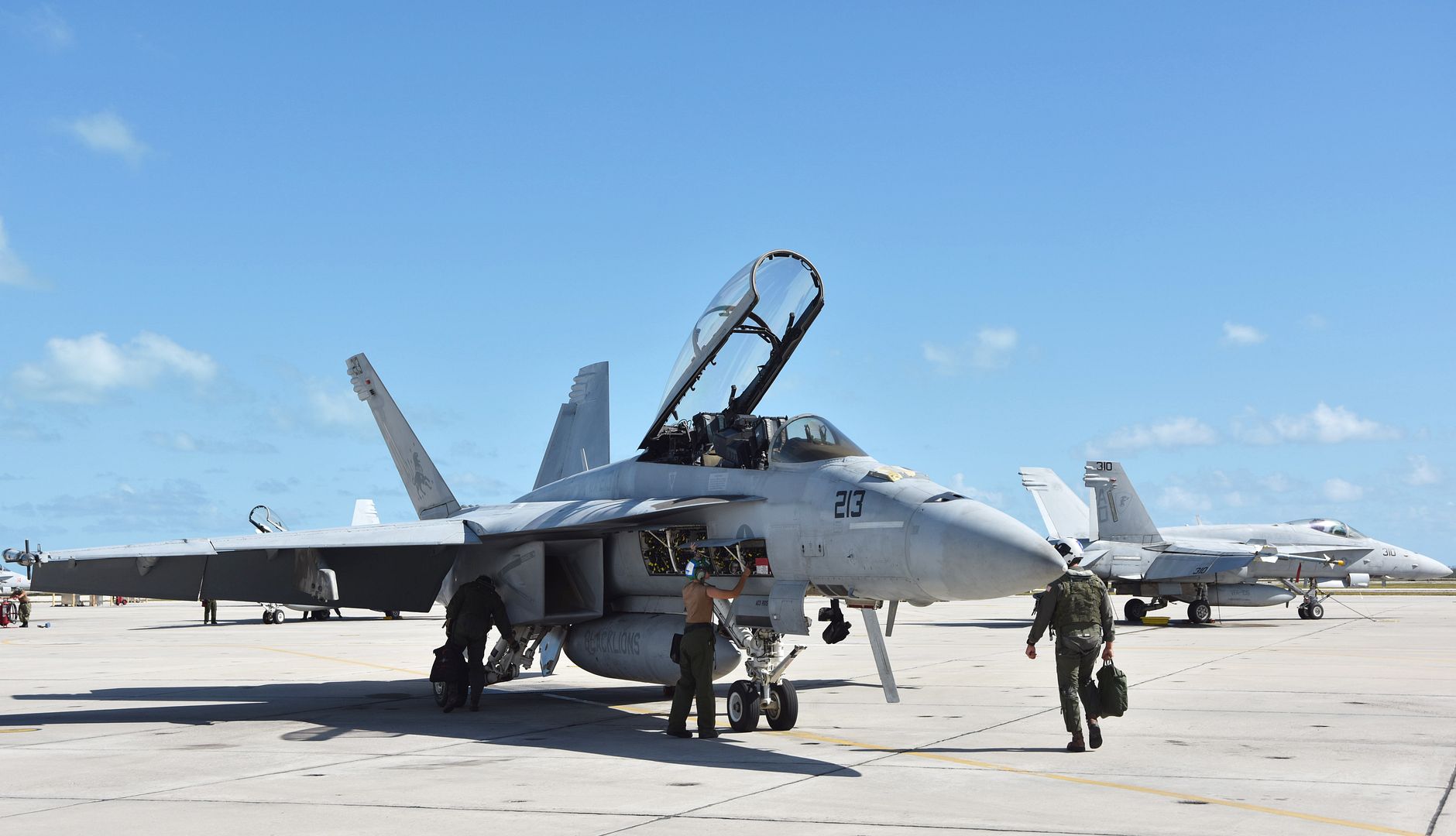
Brazil, 22 October 2018 ? Airbus Helicopters delivered the first two H135 helicopters with Helionix in police configuration to its Brazilian customer Ciopaer. The two delivered helicopters will be used to reinforce public security in Cear? State, as well as providing support for aeromedical operations in other regions of the state. Ciopaer?s fleet already includes two AS350s and four twin-engine helicopters of the H135 and the H145 family.
"The pilot's workload is facilitated by the stability of the aircraft, which helps to maintain a constant altitude," said Ciopaer's Lieutenant Colonel Marcus Costa. "It can transport two pilots and five crewmembers, has flight autonomy of more than three hours and has special equipment such as a searchlight, electric winch, rescue kit and infrared camera."
?These deliveries strengthen our partnership with the Government of Cear? and increases Ciopaer?s twin engine Airbus fleet, demonstrating the excellent cost-benefit of these models. We appreciate Ciopaer's confidence in our products and services,? said Richard Marelli, CEO of Helibras.
On top of the 4-axis autopilot, Helionix offers an innovative cockpit layout which helps to increase situational awareness. Designed with up to three large electronic displays on the H135, the cockpit is Night Vision Goggle compatible and includes a First Limit Indicator which highlights the appropriate engine instrument data for the pilot in one indicator.
The H135 family of helicopters are used by police forces all around the world, with more than 200 helicopters in-service in this segment. In addition to law enforcement, the H135 performs a wide range of missions including Emergency Medical Services (EMS), corporate transport and military training.
To date, more than 1,270 helicopters of the H135 family are in operation around the globe with more than 4.7 million flight hours.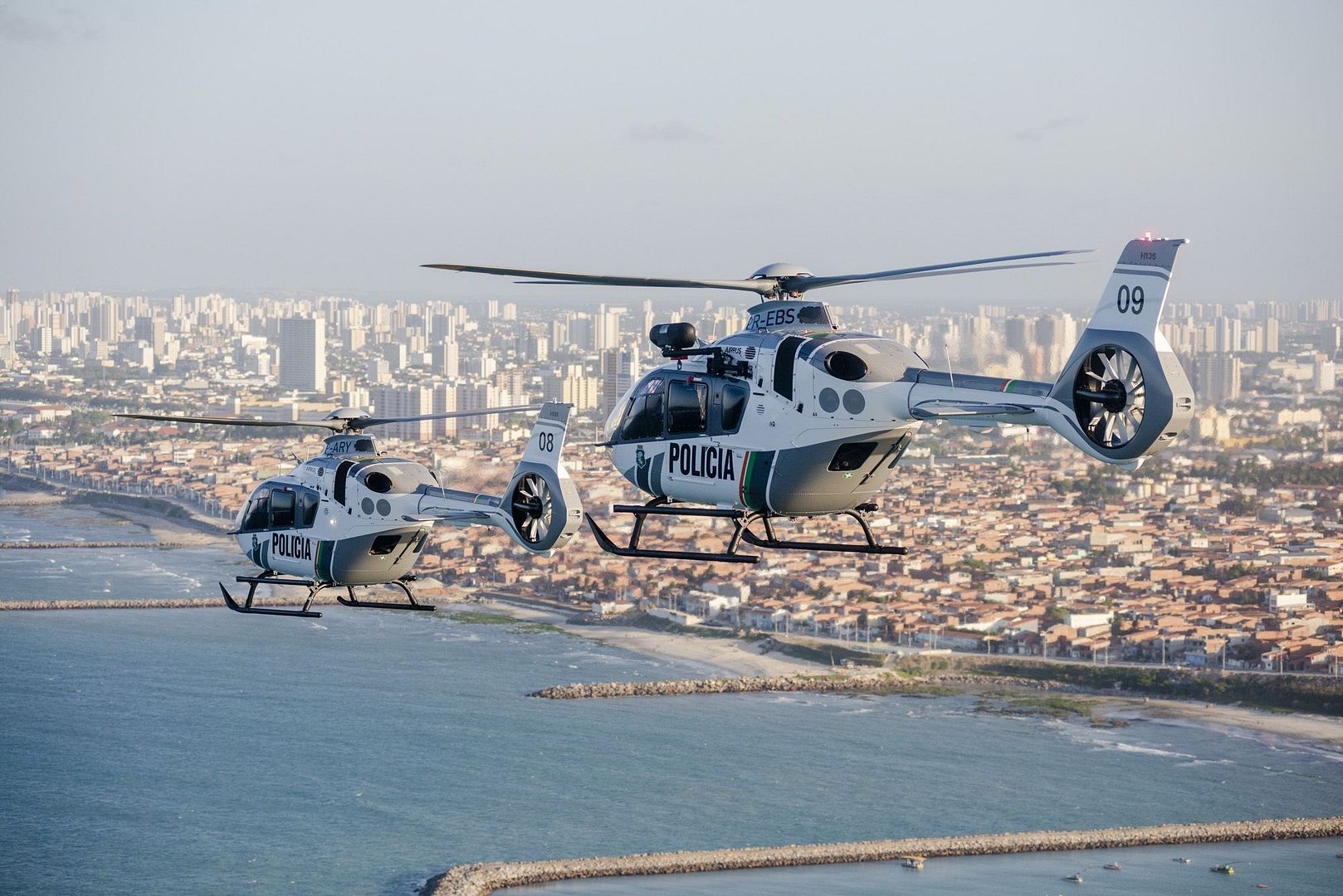
Bras?lia, Brazil, October, 23, 2018 ? Embraer celebrated another important milestone today by receiving the Type Certificate from Brazilian aviation authority Ag?ncia Nacional de Avia??o Civil (ANAC) for its multi-mission airlift KC-390. The certificate was delivered by ANAC?s Director Juliano Alc?ntara Noman. The ceremony, held at the Bras?lia Air Force Base, to celebrate the Aviator Day and Brazilian Air Force Day, was attended by the President of Brazil, Michel Temer, Minister of Defense, Joaquim Silva e Luna, and Brazilian Air Force (FAB) Commander, Lieutenant-Brigadier Nivaldo Rossato. The ANAC certificate completes a fundamental step towards military certification, when the aircraft will reach the Final Operational Capability (FOC), expected to happen by the end of 2019.
?The certification of KC-390, the largest and most complex aircraft developed throughout Embraer's history, expresses the high technological level achieved by the company,? said Paulo Cesar de Souza e Silva, president and CEO of Embraer. ?I would like to congratulate the teams that participated in the development of this program in partnership with the Brazilian Air Force.?
?We are honored and proud of the development of the KC-390, which will become the backbone of FAB's transport aviation in the coming decades,? said Jackson Schneider, president and CEO of Embraer Defense & Security. ?Extremely efficient and capable of fulfilling a wide range of missions, the KC-390 will certainly represent a leap in the operational capability of the Brazilian Air Force.?
Embraer KC-390 is a tactical transport aircraft designed to set new standards in its category while presenting the lowest life-cycle cost of the market. It can perform a variety of missions such as cargo and troop transport, troop and cargo air delivery, aerial refueling, search and rescue and forest fire fighting.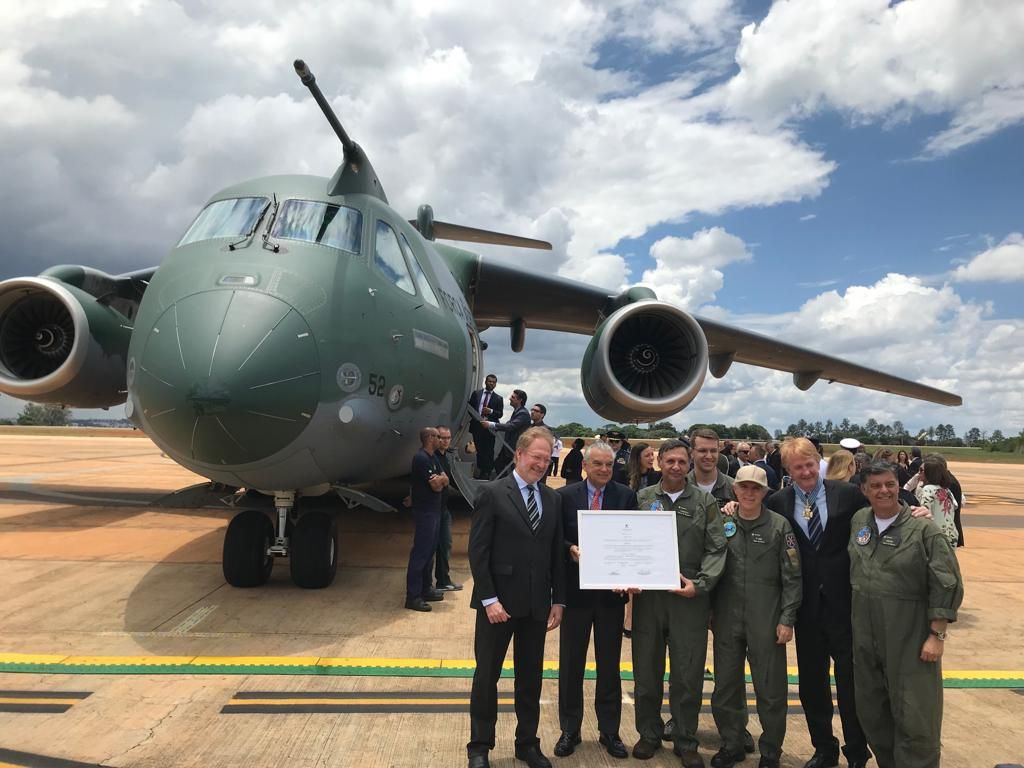
-
 Main AdminA pair of F-35B Lightning II attack jets fly alongside a KC-130J tanker aircraft during an aerial refueling mission above the East China Sea, Oct. 23, 2018. The F-35Bs belong to Marine Fighter Attack Squadron 121 (VMFA-121) and the KC-130J belongs to Marine Aerial Refueler Transport Squadron 152 (VMGR-152). VMFA-121, part of the Aviation Combat Element for the 31st Marine Expeditionary Unit, is the Marine Corps? only forward-deployed F-35B squadron ? as part of the 31st MEU, the squadron provides fixed-wing attack capabilities across the Indo-Pacific region during Marine Corps and U.S. Navy amphibious operations. The 31st MEU, the Marine Corps? only continuously forward-deployed MEU, provides a flexible force ready to perform a wide-range of military operations across the Indo-Pacific region. (U.S. Marine Corps photo by Cpl. Isaac Cantrell/RELEASED)
Main AdminA pair of F-35B Lightning II attack jets fly alongside a KC-130J tanker aircraft during an aerial refueling mission above the East China Sea, Oct. 23, 2018. The F-35Bs belong to Marine Fighter Attack Squadron 121 (VMFA-121) and the KC-130J belongs to Marine Aerial Refueler Transport Squadron 152 (VMGR-152). VMFA-121, part of the Aviation Combat Element for the 31st Marine Expeditionary Unit, is the Marine Corps? only forward-deployed F-35B squadron ? as part of the 31st MEU, the squadron provides fixed-wing attack capabilities across the Indo-Pacific region during Marine Corps and U.S. Navy amphibious operations. The 31st MEU, the Marine Corps? only continuously forward-deployed MEU, provides a flexible force ready to perform a wide-range of military operations across the Indo-Pacific region. (U.S. Marine Corps photo by Cpl. Isaac Cantrell/RELEASED)
An F-35B Lightning II attack jet flies behind a KC-130J tanker aircraft during an aerial refueling mission above the East China Sea, Oct. 23, 2018. The F-35B belongs to Marine Fighter Attack Squadron 121 (VMFA-121) and the KC-130J belongs to Marine Aerial Refueler Transport Squadron 152 (VMGR-152). VMFA-121, part of the Aviation Combat Element for the 31st Marine Expeditionary Unit, is the Marine Corps? only forward-deployed F-35B squadron ? as part of the 31st MEU, the squadron provides fixed-wing attack capabilities across the Indo-Pacific region during Marine Corps and U.S. Navy amphibious operations. The 31st MEU, the Marine Corps? only continuously forward-deployed MEU, provides a flexible force ready to perform a wide-range of military operations across the Indo-Pacific region. (U.S. Marine Corps photo's by Gunnery Sgt. T. T. Parish/RELEASED)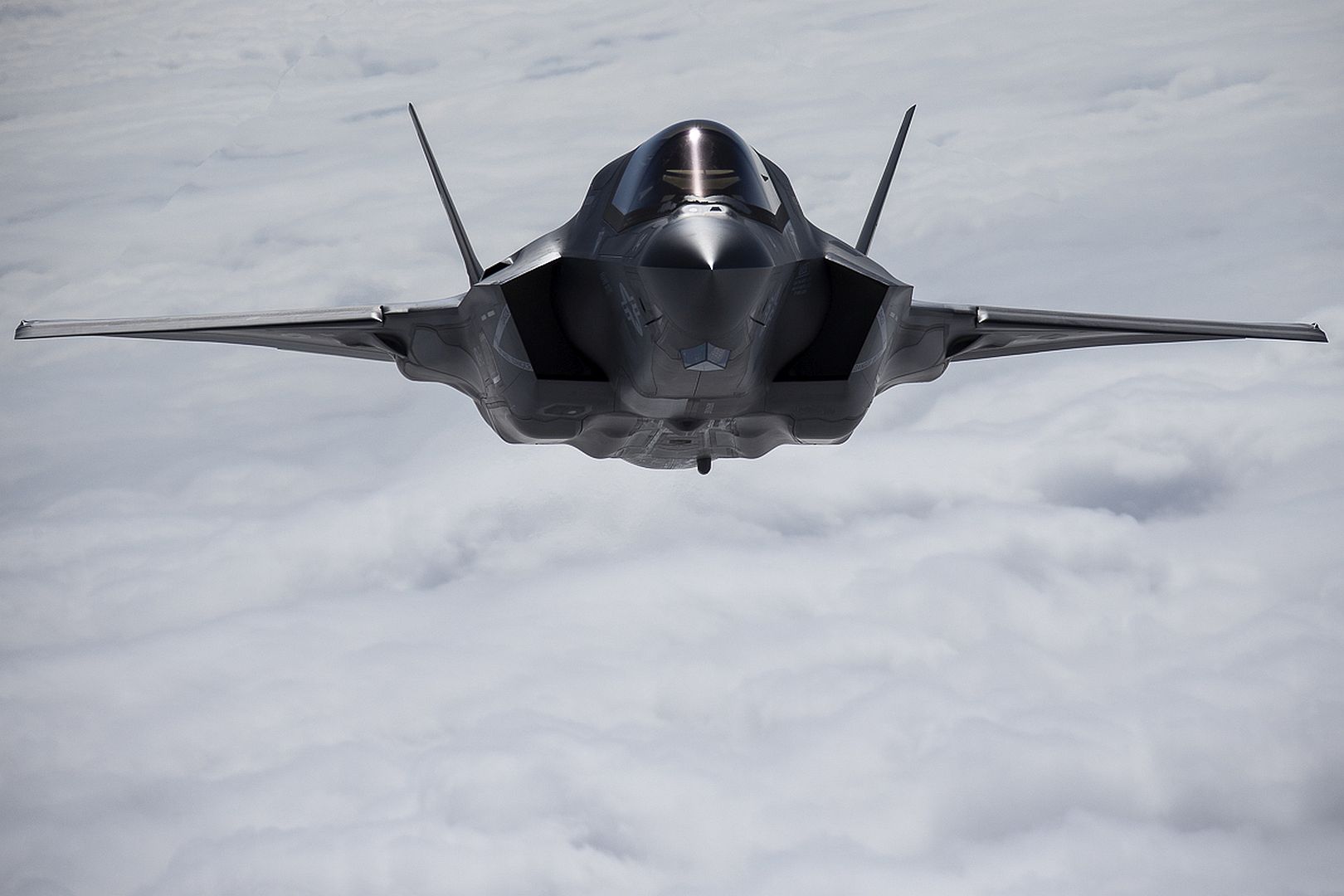

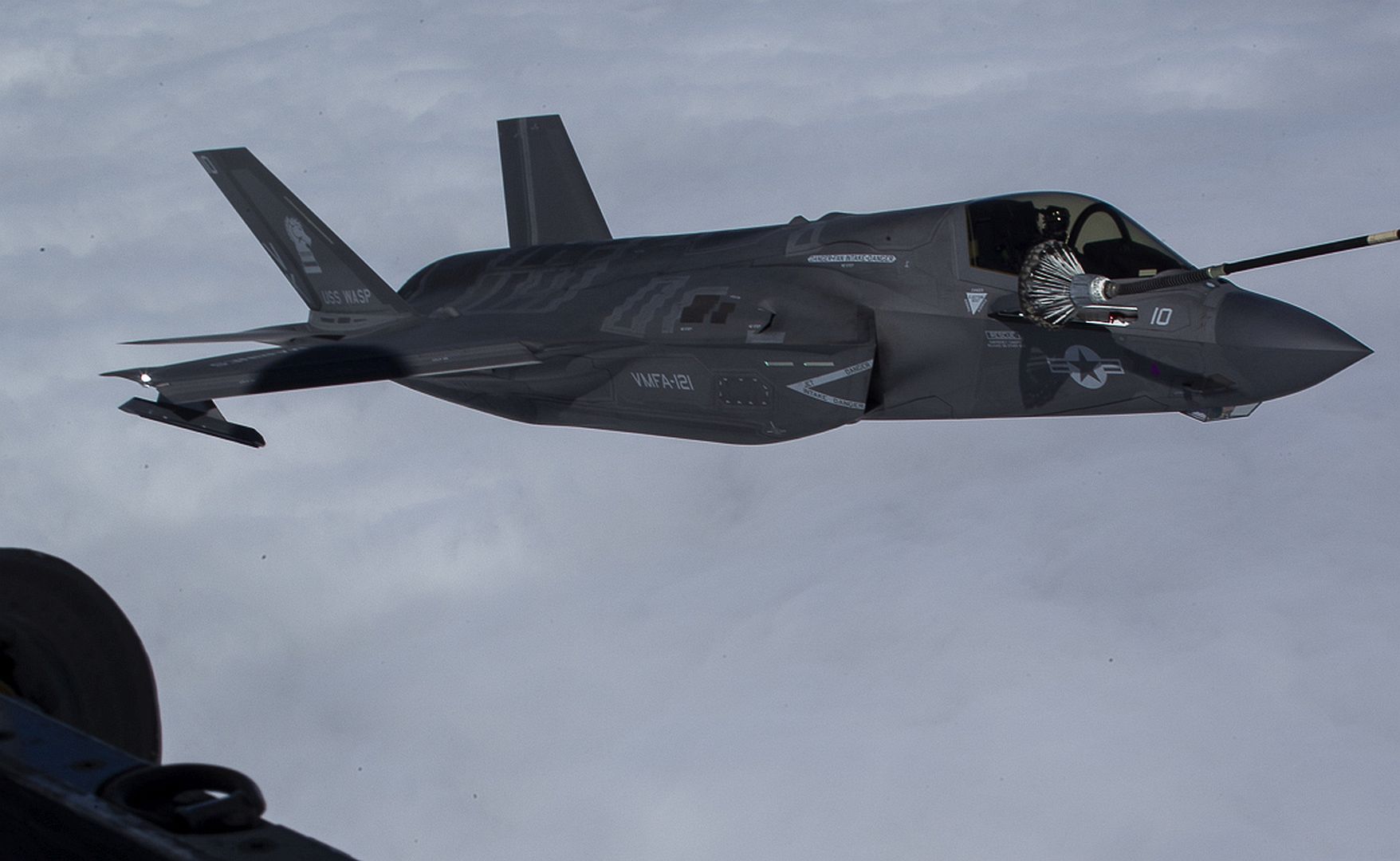



A pilot from the 480th Expeditionary Fighter Squadron, waits to taxi an F-16 Fighting Falcon during at Kallax Air Base, Sweden, Oct. 22, 2018. This exercise will take place in Norway and the surrounding areas of the North Atlantic and the Baltic Sea, including Iceland and the airspace of Finland and Sweden. With more than 50,000 participants, this is the largest NATO exercise since 2015. (U.S. Air Force photo by Staff Sgt. Jonathan Snyder)
U.S. Air Force fighter pilots, assigned to the 157th Fighter Squadron, return home in their F-16 Fighting Falcon jets at McEntire Joint National Guard Base, after a successful Air Expeditionary Force deployment to an undisclosed location in Southwest Asia, October 22, 2018. The South Carolina Air National Guard?s 169th Fighter Wing deployed F-16 fighter jets and Airmen consisting of pilots, maintenance specialists and support staff to the 407th Air Expeditionary Group in July in support of Operation Inherent Resolve. (U.S. Air National Guard photo by Senior Airman Megan Floyd)
A Pilot from the 27th Fighter Wing, Joint Base Langly-Eustis, Virginia, flies an F-22 Raptor out of Tyndall Air Force Base, Florida, Oct. 21, 2018, following the aftermath of Hurricane Michael. Multiple major commands have mobilized relief assets in an effort to restore operations after the hurricane caused catastrophic damage to the base. (U.S. Air Force photo's by Senior Airman Keifer Bowes)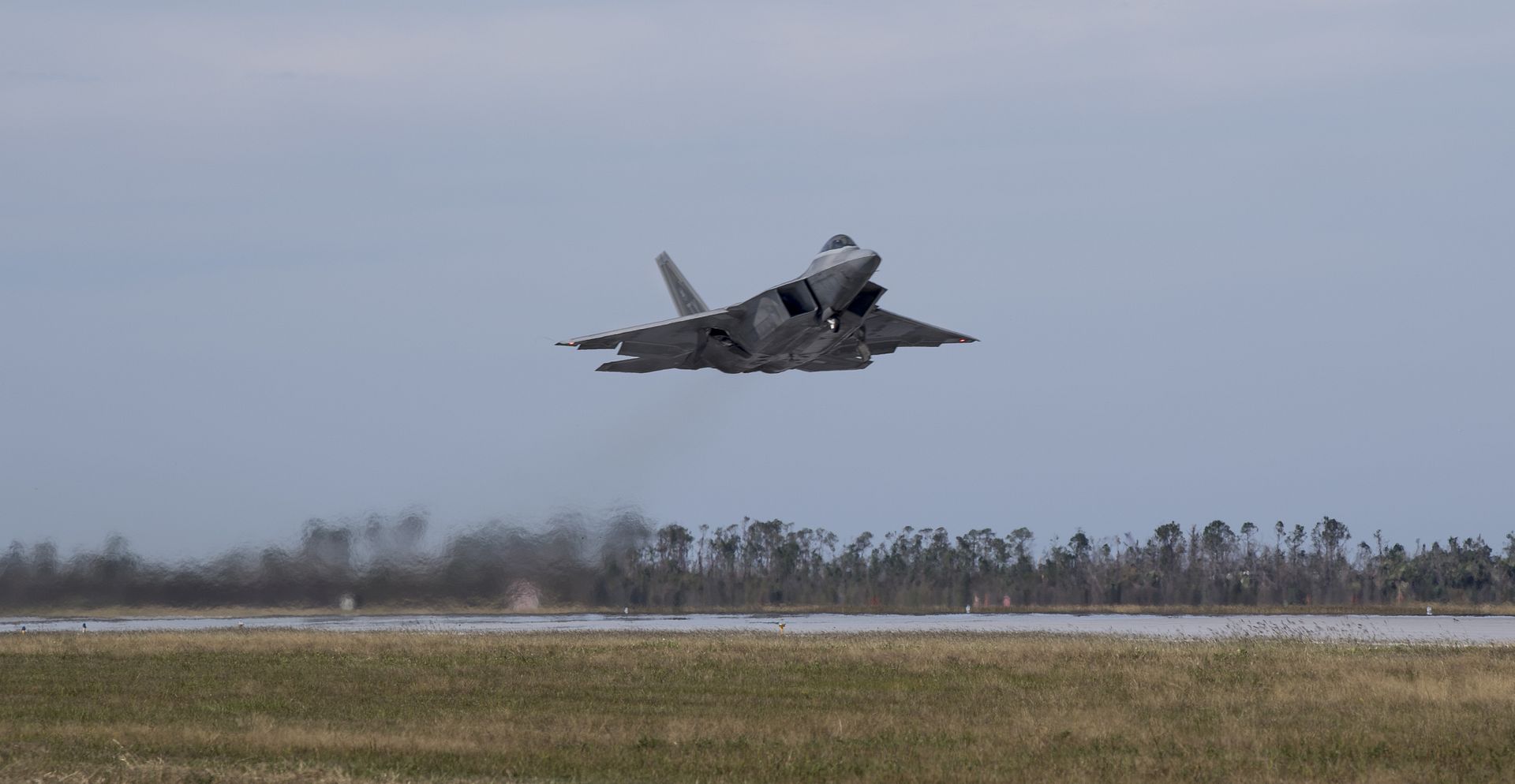

F-22 Raptors are towed to the runway at Tyndall Air Force Base, Florida, Oct. 24, 2018. Since the Air Combat Command mobilized multiple relief assets, maintainers and crew chiefs have worked around the clock to ensure the Raptors are operational. (U.S. Air Force photo's by Staff Sgt. Matthew Lotz)
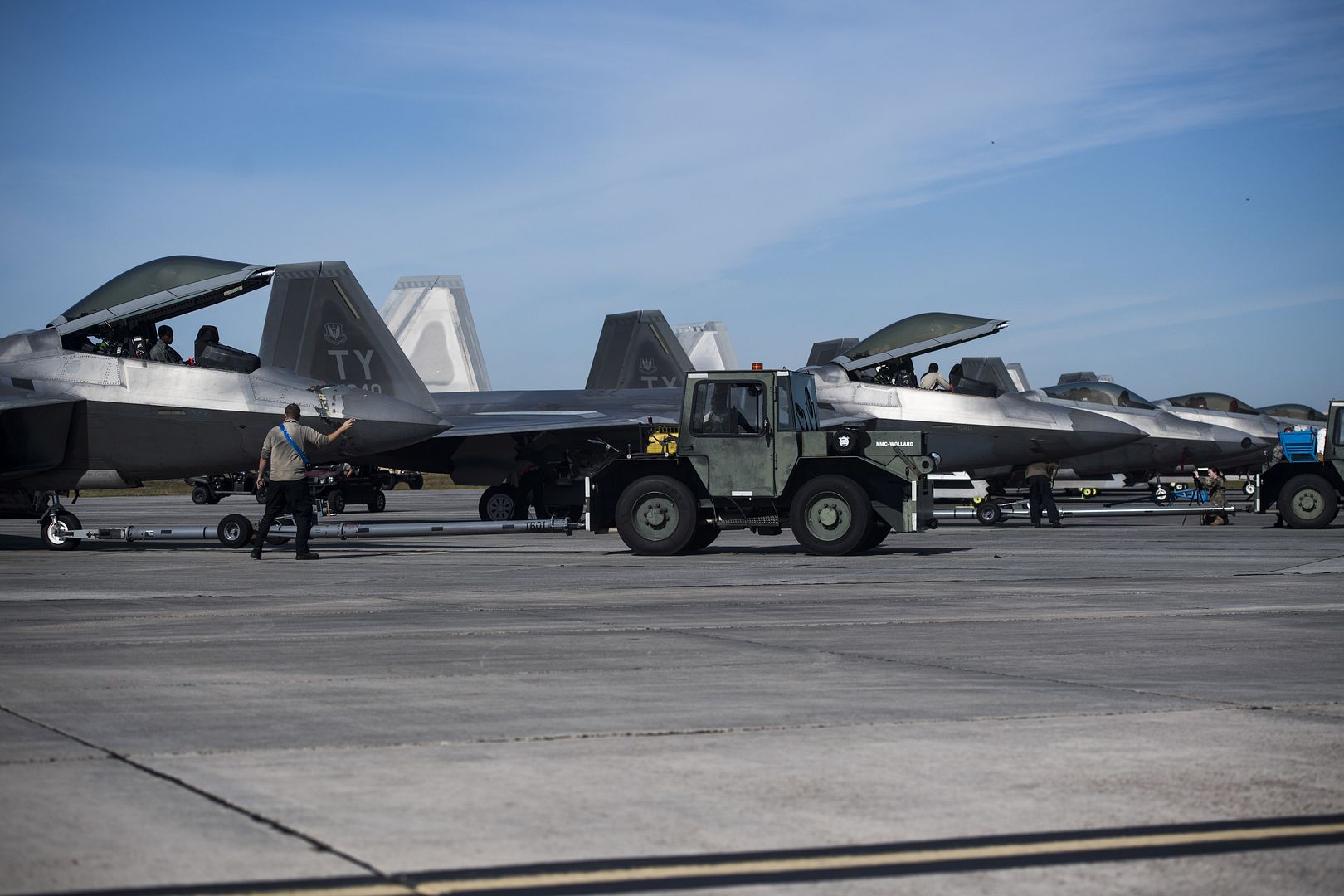
NORWEGIAN SEA (Oct. 23, 2018) An F/A-18F Super Hornet, assigned to the ?Fighting Checkmates? of Strike Fighter Squadron (VFA) 211, prepares to land aboard the Nimitz-class aircraft carrier USS Harry S. Truman (CVN 75). Currently operating in the U.S. Sixth Fleet area of operations, Harry S. Truman will continue to foster cooperation with regional allies and partners, strengthen regional stability, and remain vigilant, agile and dynamic. (U.S. Navy photo by Mass Communication Specialist 2nd Class Thomas Gooley/Released)
NORWEGIAN SEA (Oct. 23, 2018) An E-2D Hawkeye assigned to the "Seahawks" of Carrier Airborne Early Warning Squadron (VAW) 126 prepares to land aboard the Nimitz-class aircraft carrier USS Harry S. Truman (CVN 75). Currently operating in the U.S. 6th Fleet area of operations, Harry S. Truman will continue to foster cooperation with regional allies and partners, strengthen regional stability, and remain vigilant, agile and dynamic. (U.S. Navy photo by Mass Communication Specialist 2nd Class Thomas Gooley/Released)
Royal Canadian Air Force CF-188 Hornet's sit in front of a Harden Air Shelter (HAS) in Bodo, Norway on October 20, 2018 in preparation for Exercise TRIDENT JUNCTURE 2018.
Images by: Corporal Bryan Carter, 4 Wing Imaging
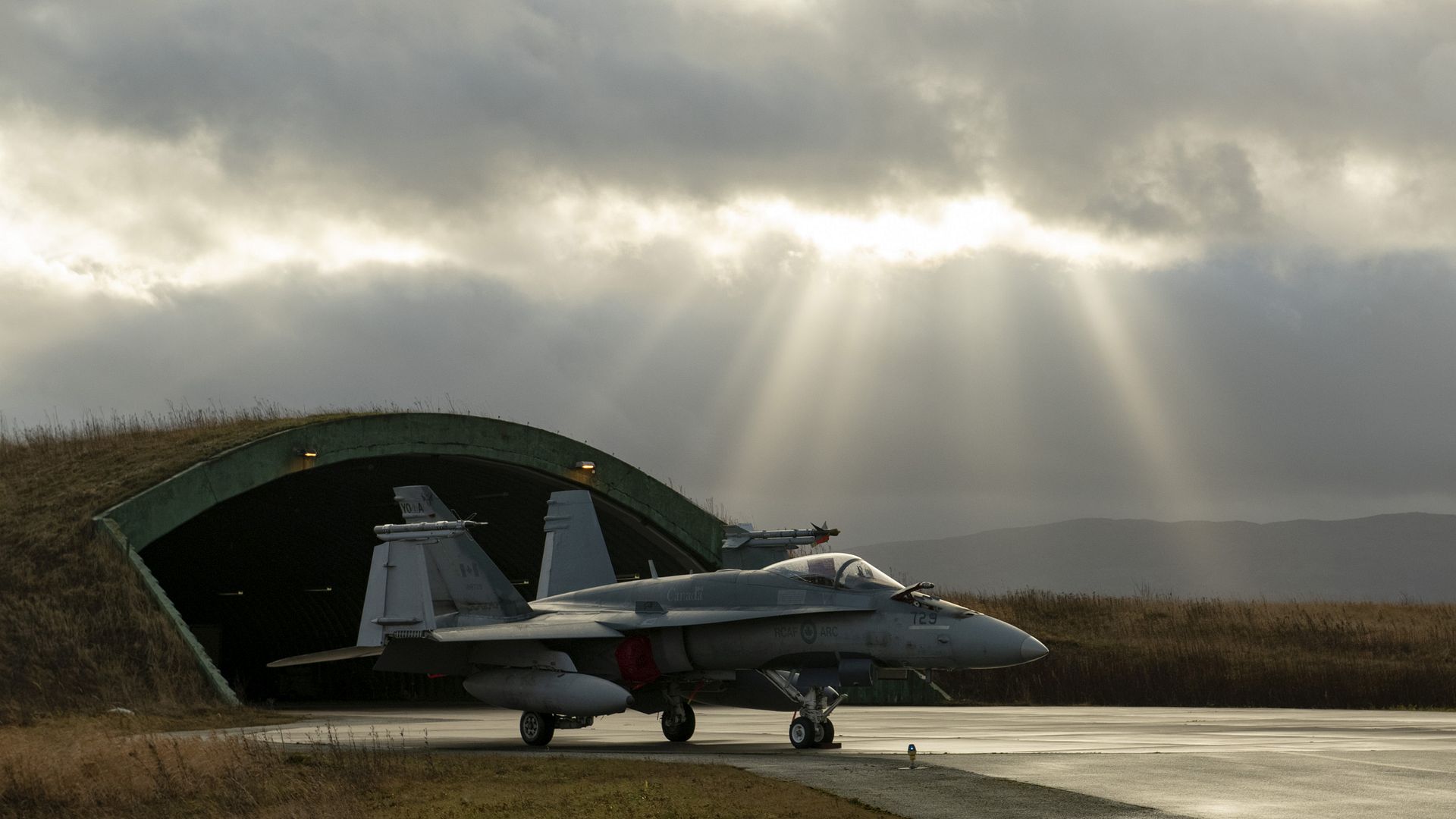
-
 Main AdminA Royal Canadian Air Force CF-188 Hornet from 401 Tactical Fighter Squadron sits on the runway for a flight in Bodo, Norway on October 23, 2018 in preparation for Exercise TRIDENT JUNCTURE 2018.
Main AdminA Royal Canadian Air Force CF-188 Hornet from 401 Tactical Fighter Squadron sits on the runway for a flight in Bodo, Norway on October 23, 2018 in preparation for Exercise TRIDENT JUNCTURE 2018.
Image by: Corporal Bryan Carter, 4 Wing Imaging
A Royal Canadian Air Force CF-188 Hornet from 401 Tactical Fighter Squadron taxis after landing in Bodo, Norway on October 23, 2018 in preparation for Exercise TRIDENT JUNCTURE 2018.
Image by: Corporal Bryan Carter, 4 Wing Imaging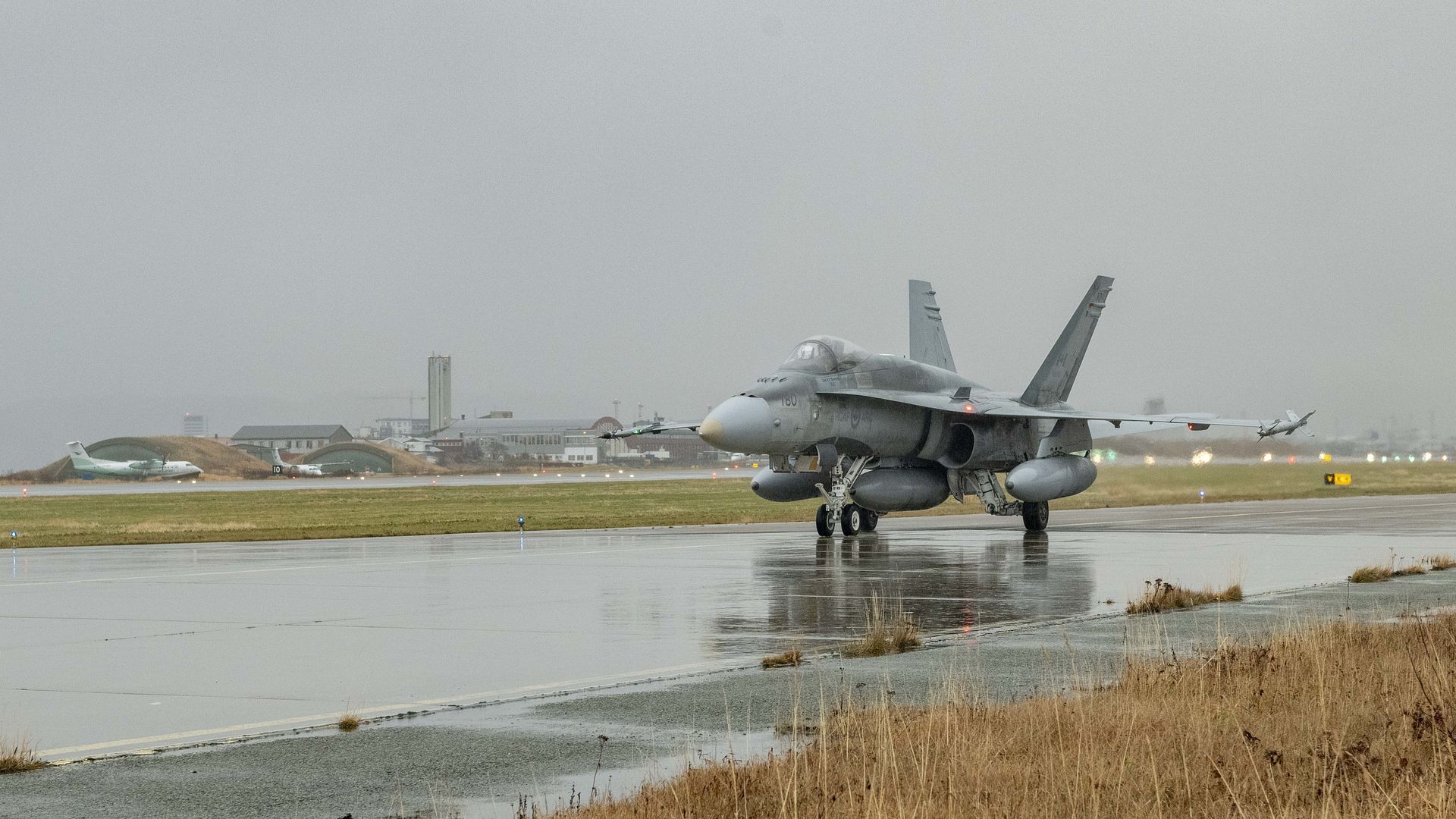
VESTFJORDEN (Oct. 25, 2018) An F/A-18E Super Hornet, assigned to the ?Sunliners? of Strike Fighter Squadron (VFA) 81, launches from the Nimitz-class aircraft carrier USS Harry S. Truman (CVN 75) in support of Trident Juncture 18. With more than 50,000 participants from 30 Ally and partner nations, Trident Juncture 18 is taking place in Norway and the surrounding areas of the North Atlantic and the Baltic Sea, including Iceland and the airspace of Finland and Sweden. (U.S. Navy photo by Mass Communication Specialist 3rd Class Adelola Tinubu/Released)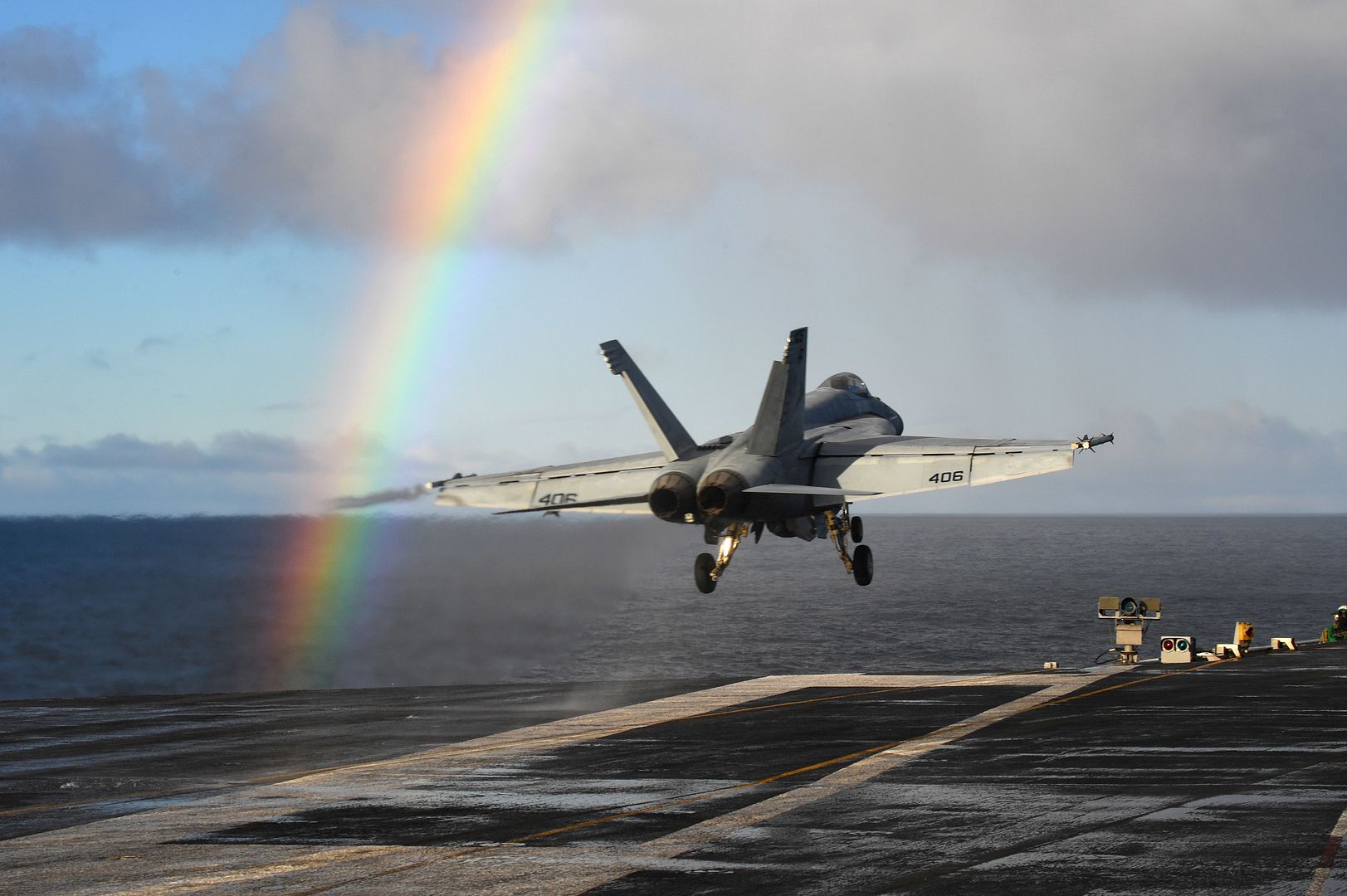
A U.S. Air Force F-16 Fighting Falcon assigned to the 480th Expeditionary Fighter Squadron is de-iced at Kallax Air Base, Sweden, Oct 24 2018. Cold Scandinavian weather conditions provide a unique opportunity to test the readiness of the 480th EFS during Trident Juncture 2018. (U.S. Air Force photo by 1st Lt. Casey Rodriguez)
An F-22 Raptor fighter aircraft prepares for take-off while a C-17 Globemaster III cargo aircraft flies overhead, Tyndall Air Force Base, Florida, October 24, 2018. Support personnel from Tyndall and other bases are working to repair base infrastructure and build bare-bones facilities after Hurricane Michael.(U.S. Air Force photo by Airman 1st Class Kelly Walker)
A U.S. Air Force F-16C Fighting Falcon is painted by the morning sunlight on the flight line of the 177th Fighter Wing of the New Jersey Air National Guard, at the Atlantic City Air National Guard Base, N.J. on Oct. 25, 2018 (U.S. Air National Guard photo by Staff Sgt. Kenneth Shaner Brown)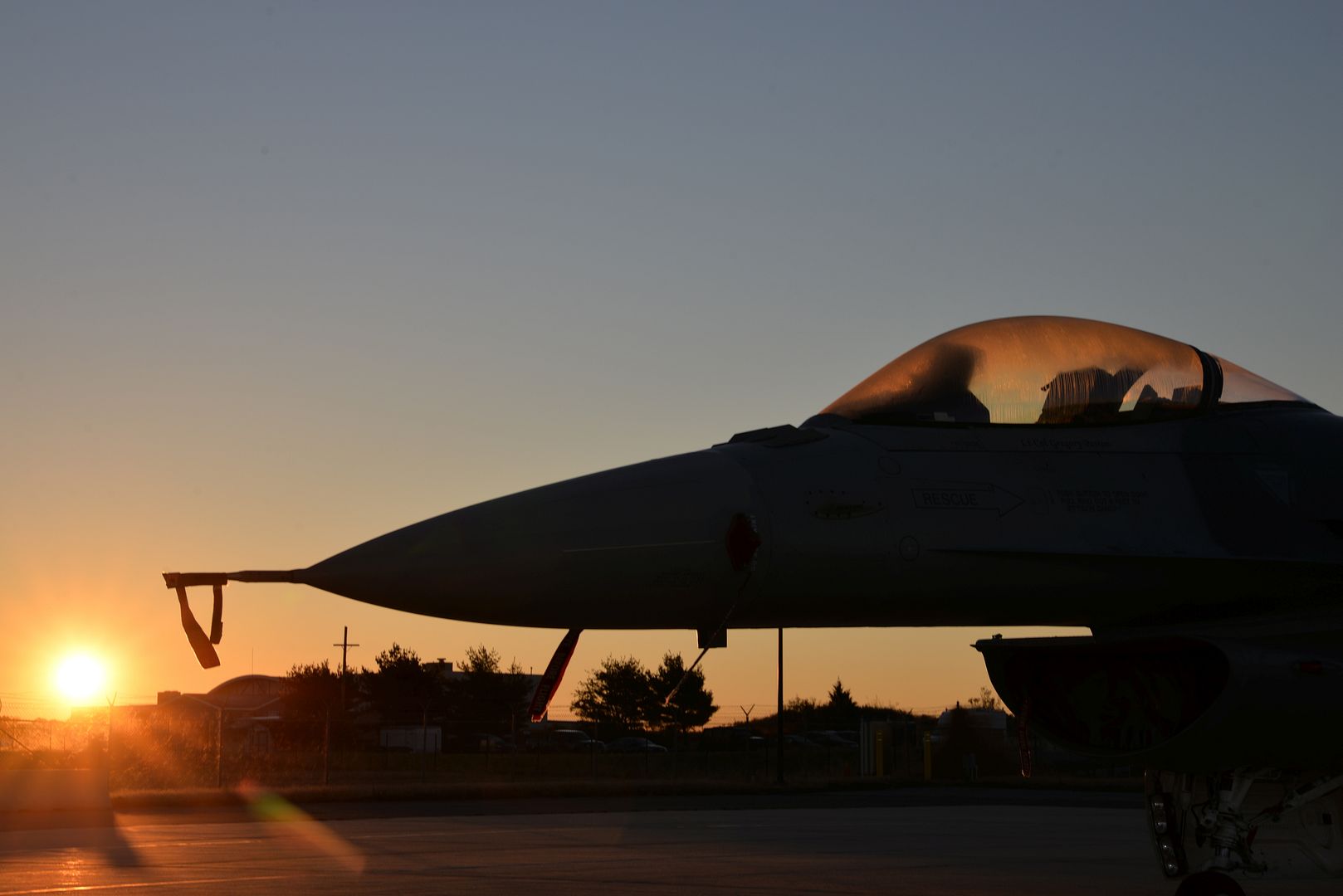
EDWARDS AIR FORCE BASE, Calif. --
A C-7A Caribou that has been sitting at South Base for years is now sporting its old look thanks to help from volunteers of the Air Force Flight Test Museum.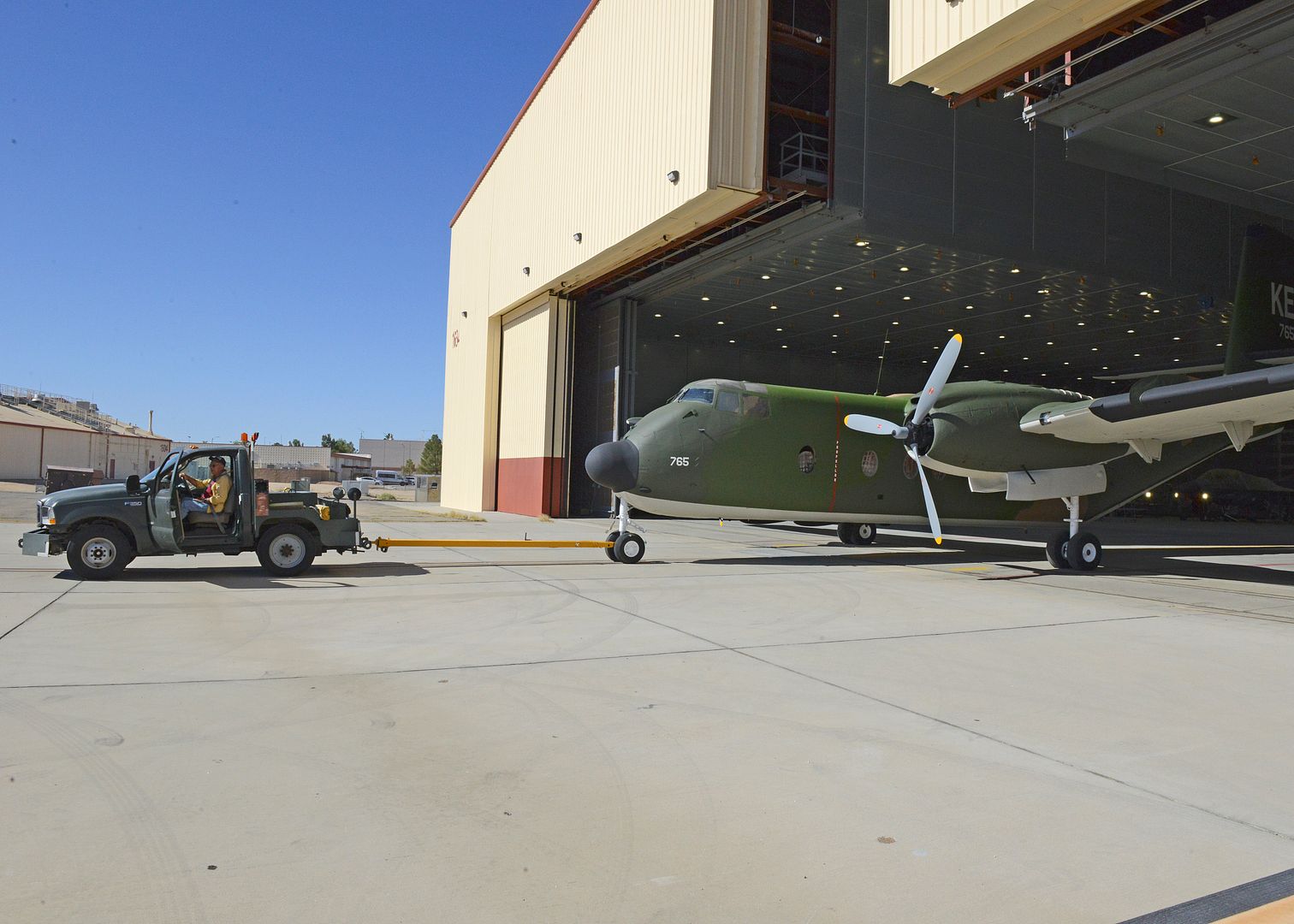
The troop and supply carrier was pulled out of Hangar 1634 after getting the new paint job and some sheet metal work. It travelled across Rogers Dry Lakebed to the AFFT Museum?s restoration hangar where it will await a home in the much anticipated new museum planned to be built outside the west gate of Edwards on Rosamond Blvd.
According to George Welsh, AFFT Museum director, the Caribou was an Air Force plane that served in the Vietnam War and was later transferred to the Army where it was assigned to the Fresno Air National Guard. Welsh said the C-7A was a prepositioned plane for the Army Golden Knights parachute team. When they would visit the region to perform their shows, the Fresno-based Caribou would be called into action for their use.
Being a former Air Force asset, and no longer used, the Caribou ended up in the Air Force?s heritage program and brought to Edwards (possibly in the early 2000s) where it has been sitting at South Base until volunteers decided to give it a makeover earlier this year.
Welsh said while at South Base, the Caribou was actually picked up by winds and thrown into the Douglas C-53 Skytrooper parked next to it, causing damage to both aircraft.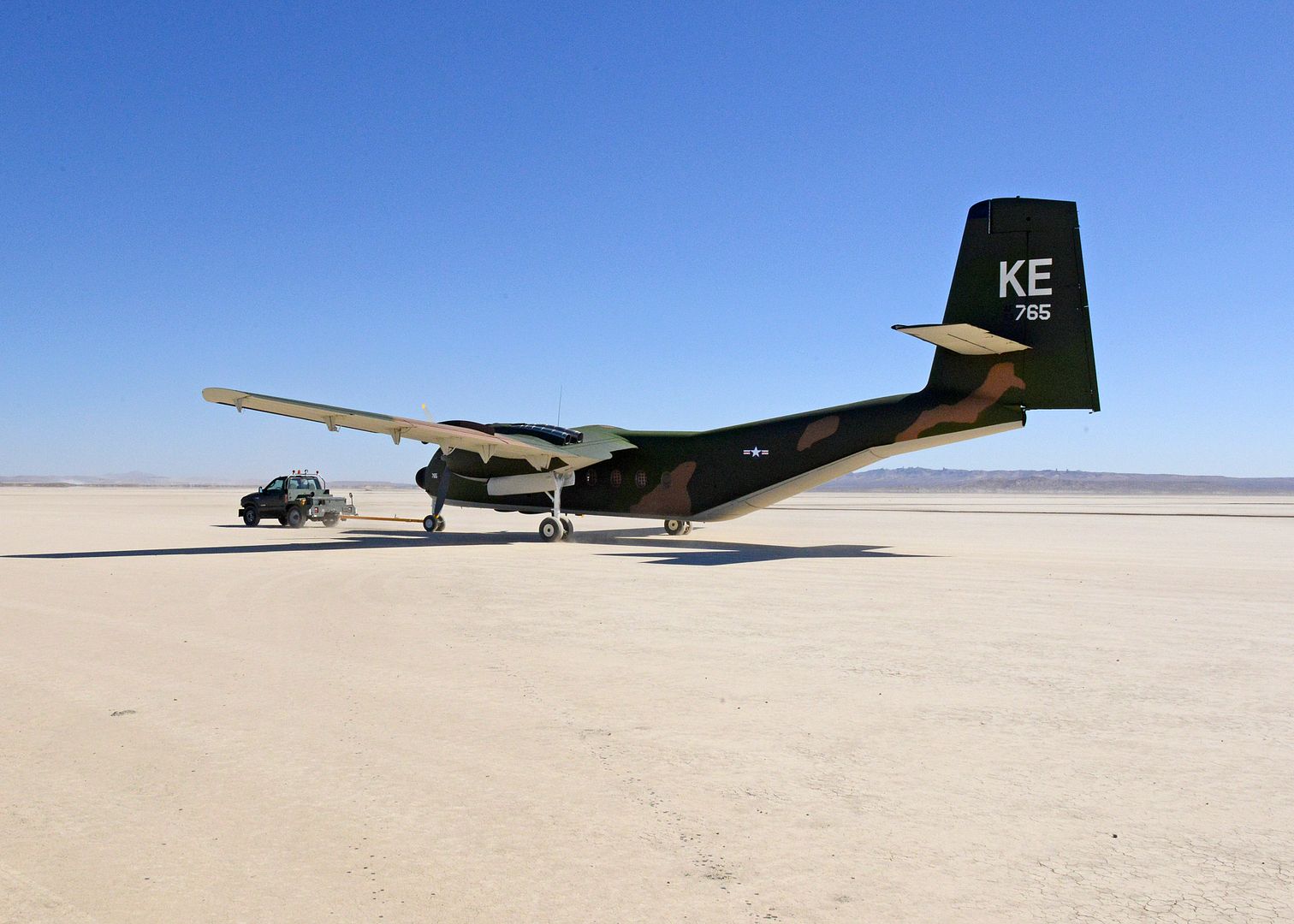
Volunteers pounded out the dents on the Caribou along with painting it.
The C-7 was used to move people and materiel into forward areas, where short, unprepared air strips were normal, according to the Air Mobility Command Museum. The Caribou could accommodate up to 32 passengers, 26 fully equipped paratroops, 20 litter patients, or an 8,740-pound cargo load.
The Caribou was a workhorse that went from sunrise to sunset every day operating in the heat, humidity, dust, and mud from the low-lying Vietnamese Mekong Delta to the towering mountain regions of the Central Highlands, according to the AMC Museum.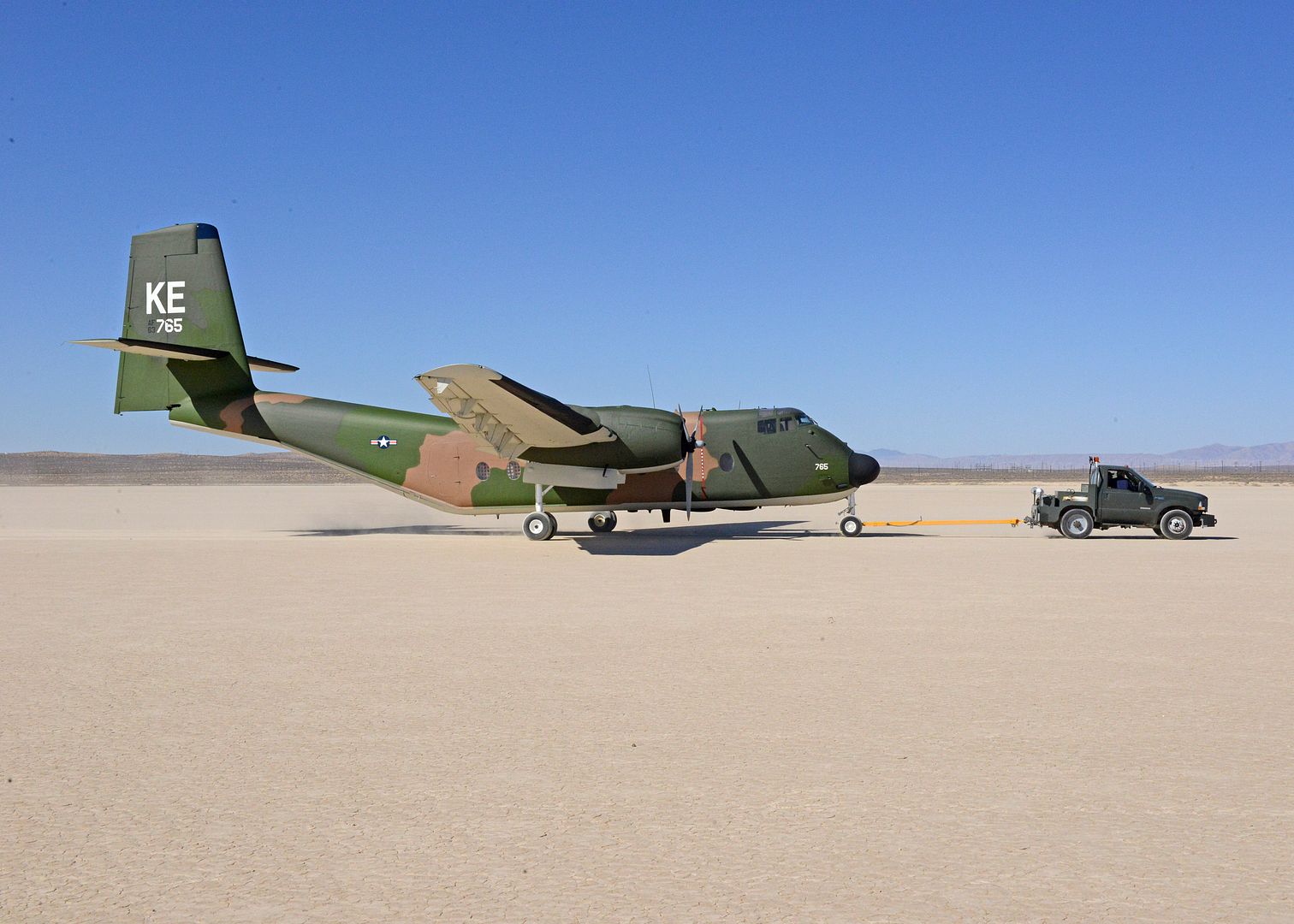
A U.S. Air Force A-10 Thunderbolt II from the 25th Fighter Squadron prepares to take off at Osan Air Base, Republic of Korea, Oct. 22, 2018. A-10s participated in routine training aimed at sharpening skills needed for search and rescue operations. The A-10 ?Warthog? is the first AF aircraft designed specifically to provide close air support to ground forces and is well-known for its 30 mm GAU-A8 Avenger Gatling-type Autocannon capable of firing 3,900 rounds per minute. (U.S. Air Force photo by Staff Sgt. Benjamin Rauhgton)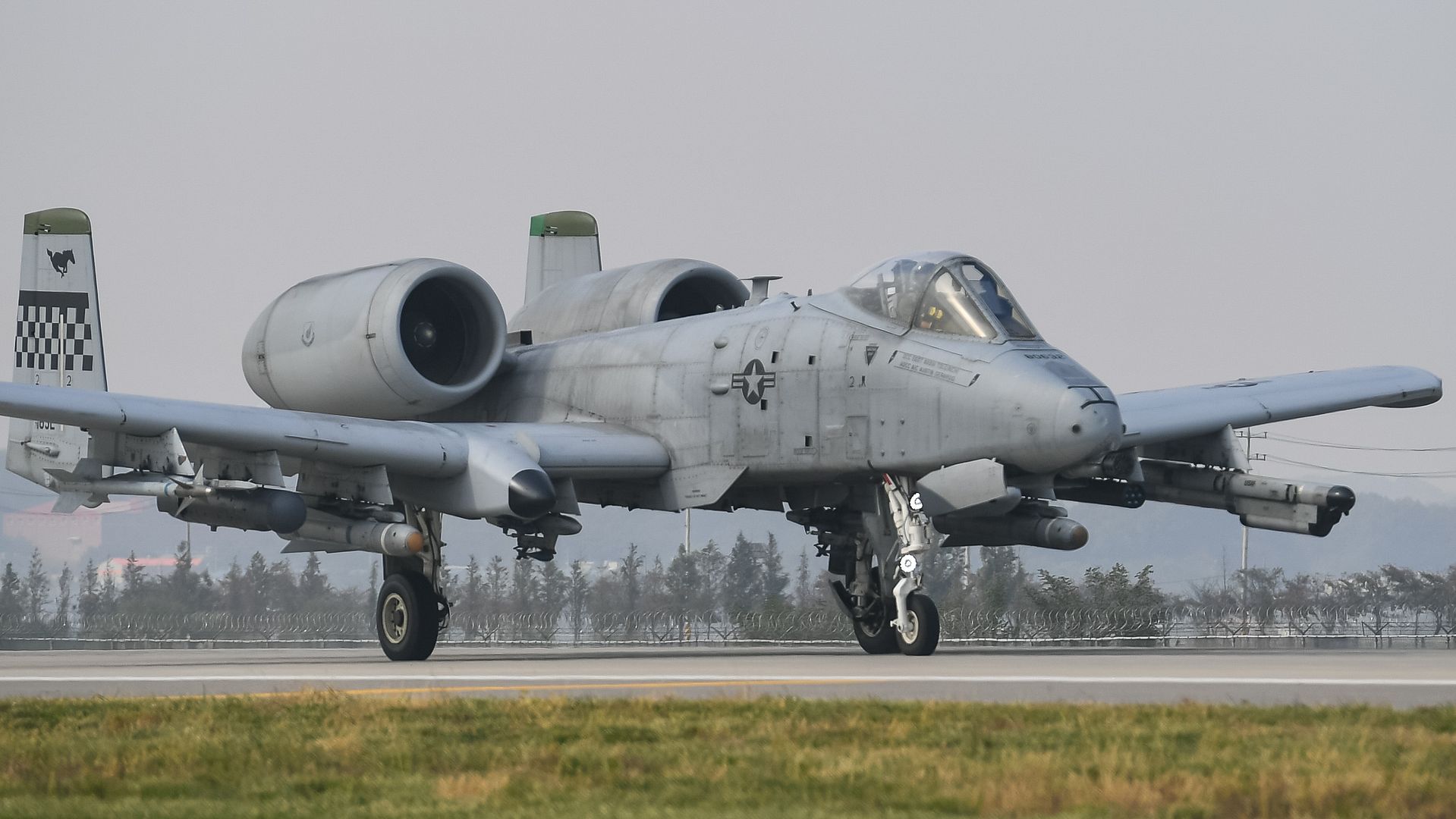
An HC-130 Combat King lands at Osan Air Base, Republic of Korea, after completing a routine training mission Oct. 22, 2018. The Combat King is the U.S. Air Force extended-range, search and rescue/combat search and rescue version of the C-130 Hercules military transport aircraft. (U.S. Air Force photo by Senior Airman Kelsey Tucker)
NORWEGIAN SEA (Oct. 23, 2018) An F/A-18E Super Hornet, assigned to the "Knighthawks" of Strike Fighter Squadron (VFA) 136, maneuvers the flight deck aboard the Nimitz-class aircraft carrier USS Harry S. Truman (CVN 75). Currently operating in the U.S. 6th Fleet area of operations, Harry S. Truman will continue to foster cooperation with regional allies and partners, strengthen regional stability, and remain vigilant, agile and dynamic. (U.S. Navy photo by Mass Communication Specialist 2nd Class Thomas Gooley/Released)
Thailand, The Royal Thai Air Force (RTAF) has taken delivery of its seventh and eighth H225M (previously known as EC725) multirole utility helicopters.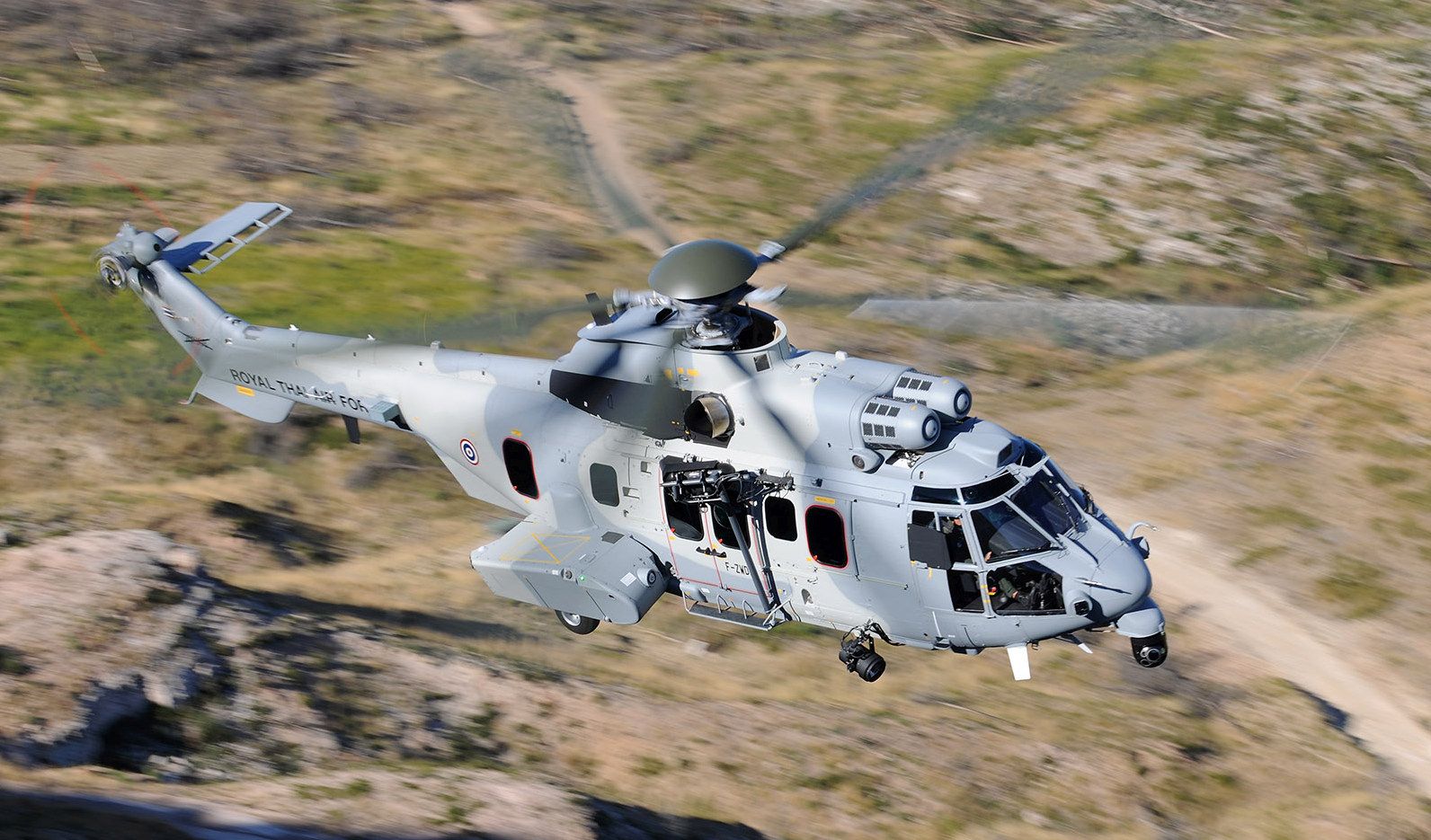
Since 2012, the RTAF has placed orders for a total of 12 H225Ms under its fleet modernisation programme. Belonging to a contract signed in 2016, these new additions will join the air force?s existing fleet of six H225Ms for combat search and rescue, search and rescue flights and troop transport missions.
The 11-ton-catergory twin-turbine H225M is relied upon as a force multiplier by many air forces worldwide thanks to its outstanding endurance and fast cruise speed. Featuring state-of-the-art electronic instruments and the renowned 4-axis autopilot system, the multirole helicopter may be fitted with various equipment to suit any role. Close to 90 units are currently in service in six countries across the globe, surpassing the 100,000 flight hour milestone.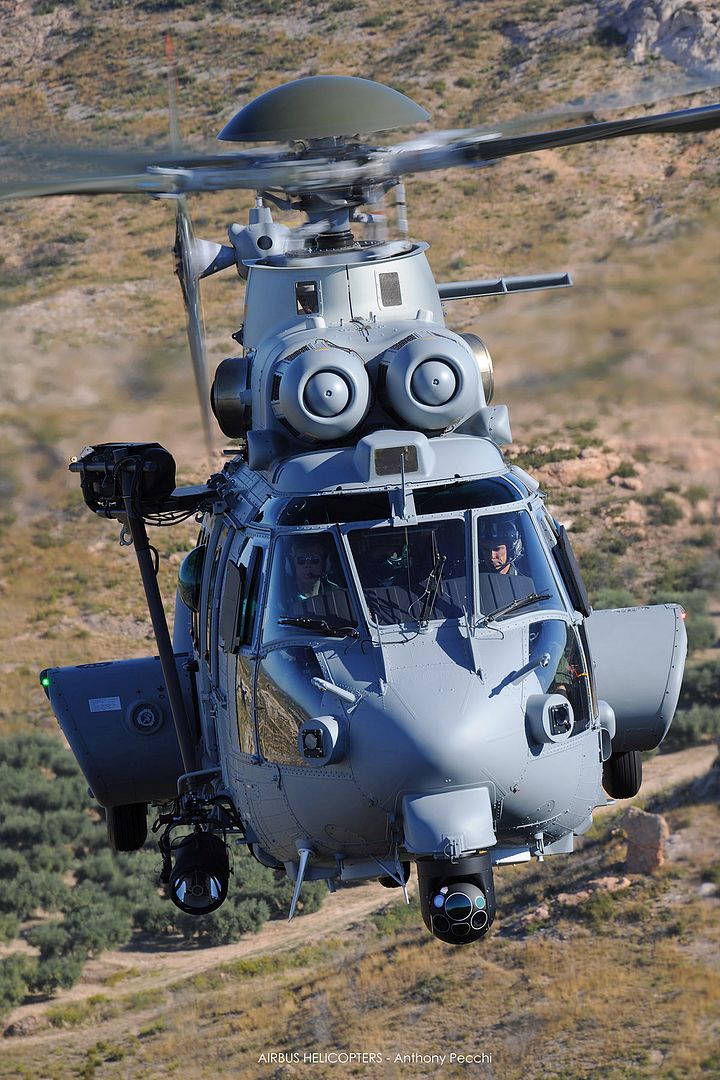
S?o Paulo, Airbus Helicopters? Brazilian customer centre, Helibras has just delivered the world's first ACH145 Line to the Brazilian company Bodepan Empreendimentos Agropecu?rios e Imobili?rios. This is the fourth Airbus aircraft acquired over the last 26 years by Bodepan, which has already operated several models, including the EC135.
With more than 220 aircraft operating worldwide, the H145 has consolidated worldwide and is strongly reaching the Brazilian market with a proposal of comfort, technology and versatility. "Inquiries about the aircraft have been growing, especially after the last LABACE, when we presented the first H145 in Brazil. This helicopter is the best biturbine in its category?, says Jean-Luc Alfonsi, Helibras Vice-President of Business and Services.
"We are very pleased with the acquisition of this new model in terms of performance, space and design. The ACH145 will enable us to make our journeys more comfortable and carrying more passengers. As operators since 1992, we have full confidence in the brand", states Mr. Od?lio Bergamini.
The ACH145 Line, previously known as ACH Stylence, features increased ergonomic comfort, acoustic insulation and innovative design. Its sliding doors provide easy passenger access and its spacious cabin allows for a variety of internal configurations. The luxurious interior of the delivered aircraft features 9 or 10 seats in perforated leather in tonal harmony with the carpets, special painting in the cabin and state-of-the-art digitally-controlled air conditioning.
In addition to the shrouded tail rotor (Fenestron) and new engines (Arriel 2E), one of the big advances compared to the previous version of the aircraft (EC145) is the new concept of man/machine interface optimized through the Helionix? digital avionics package,4-axis autopilot linked to the Full Authority Digital Engine Control (FADEC), which significantly reduces the crew's workload.
Since its launch in 2017, Airbus Corporate Helicopters is setting new standards in corporate and VIP helicopter aviation focusing on quality, exclusivity and customer ?experience supported by a global network of wholly-owned and approved service centres.
Post a reply
- Go to Previous topic
- Go to Next topic
- Go to Welcome
- Go to Introduce Yourself
- Go to General Discussion
- Go to Screenshots, Images and Videos
- Go to Off topic
- Go to Works in Progress
- Go to Skinning Tips / Tutorials
- Go to Skin Requests
- Go to IJAAF Library
- Go to Luftwaffe Library
- Go to RAF Library
- Go to USAAF / USN Library
- Go to Misc Library
- Go to The Ops Room
- Go to Made in Germany
- Go to Campaigns and Missions
- Go to Works in Progress
- Go to Juri's Air-Raid Shelter
- Go to Campaigns and Missions
- Go to Works in Progress
- Go to Skinpacks
- Go to External Projects Discussion
- Go to Books & Resources
